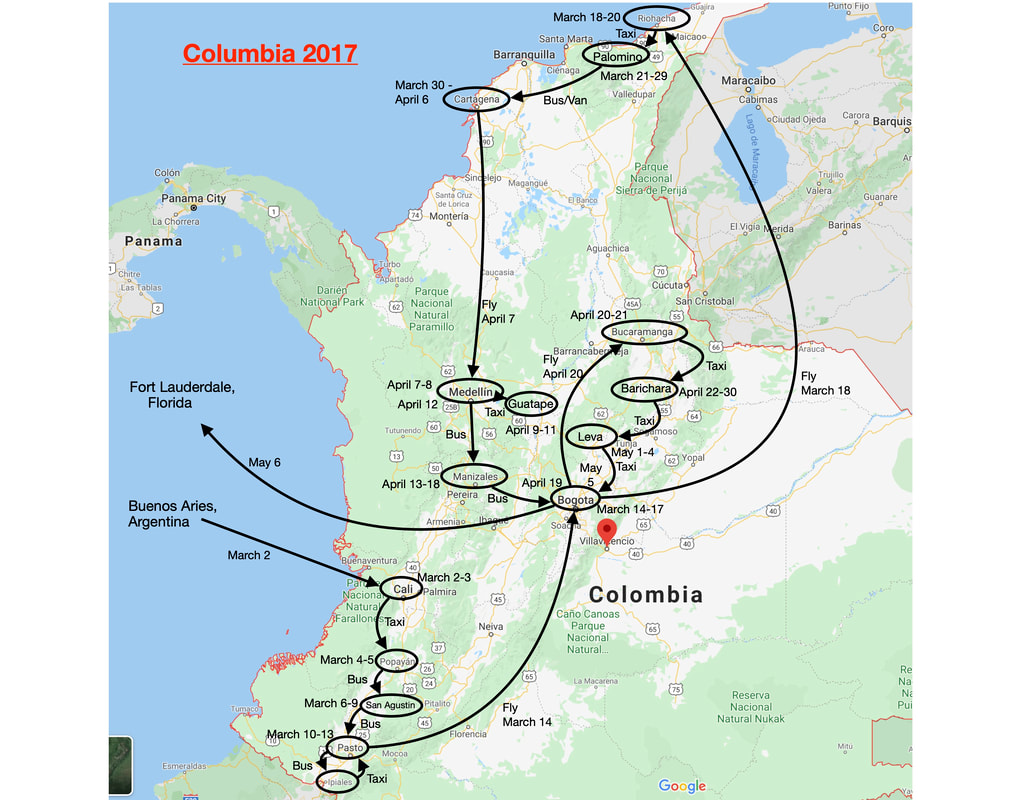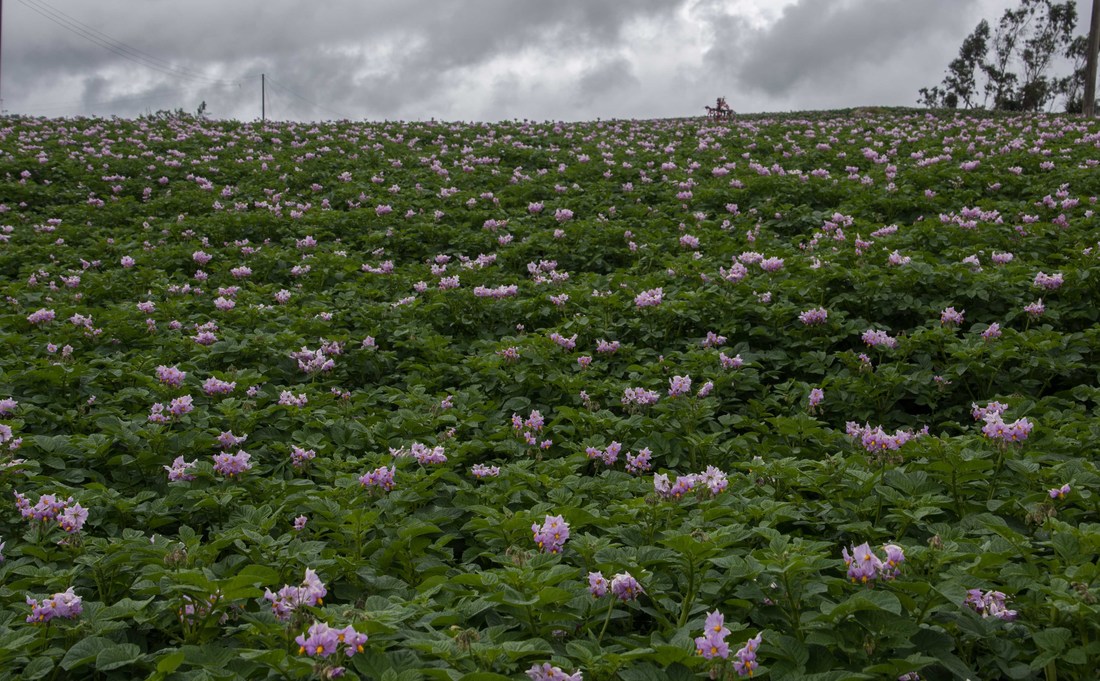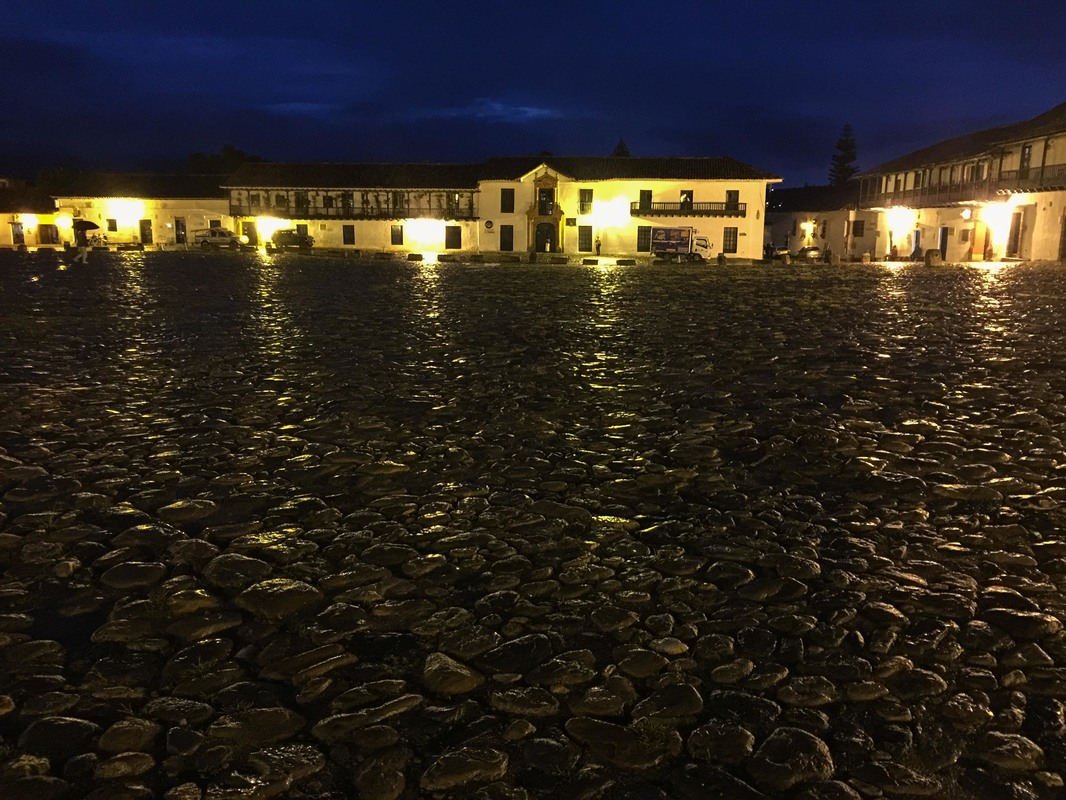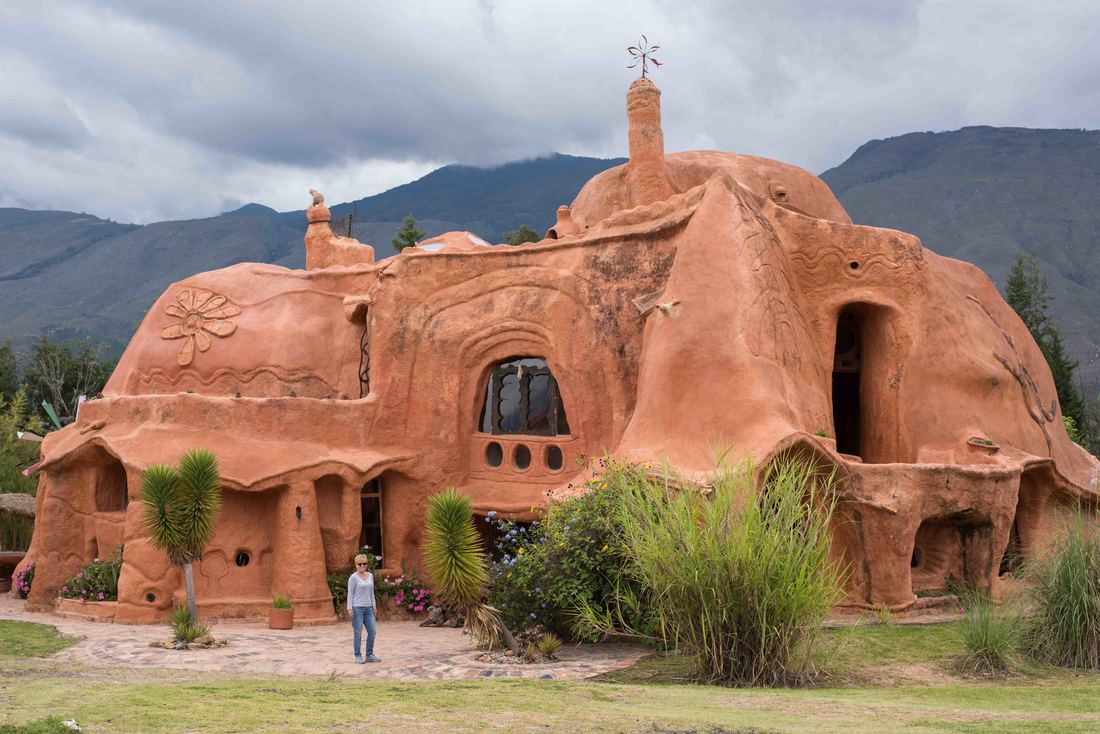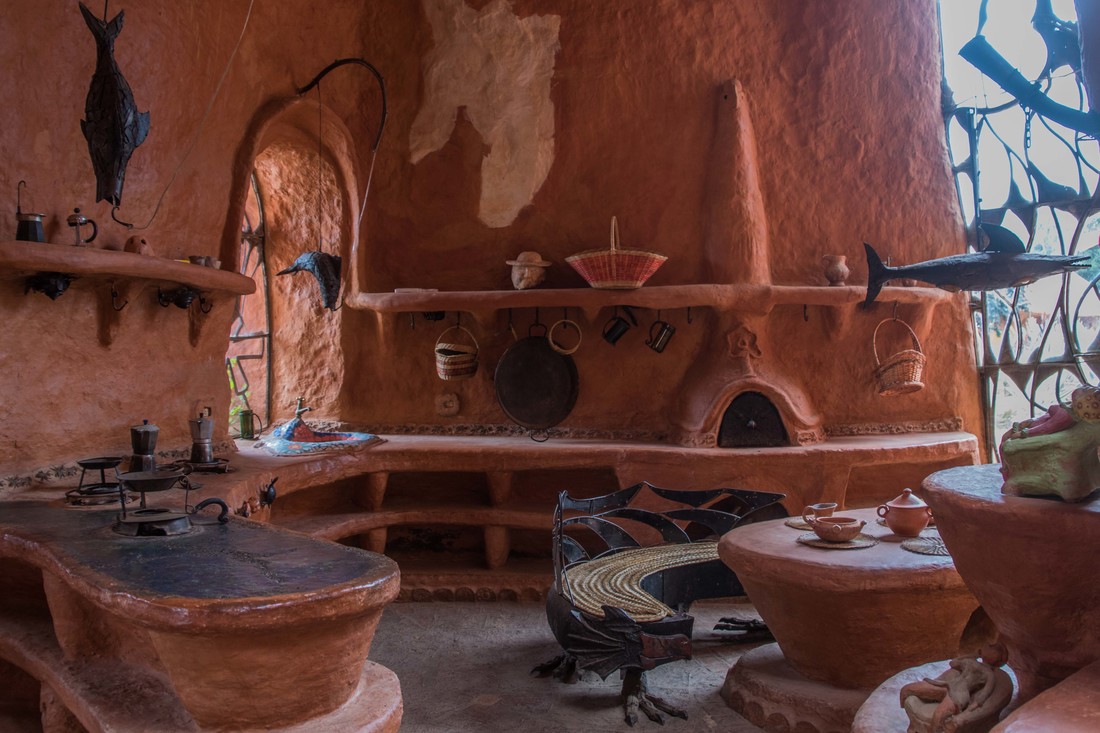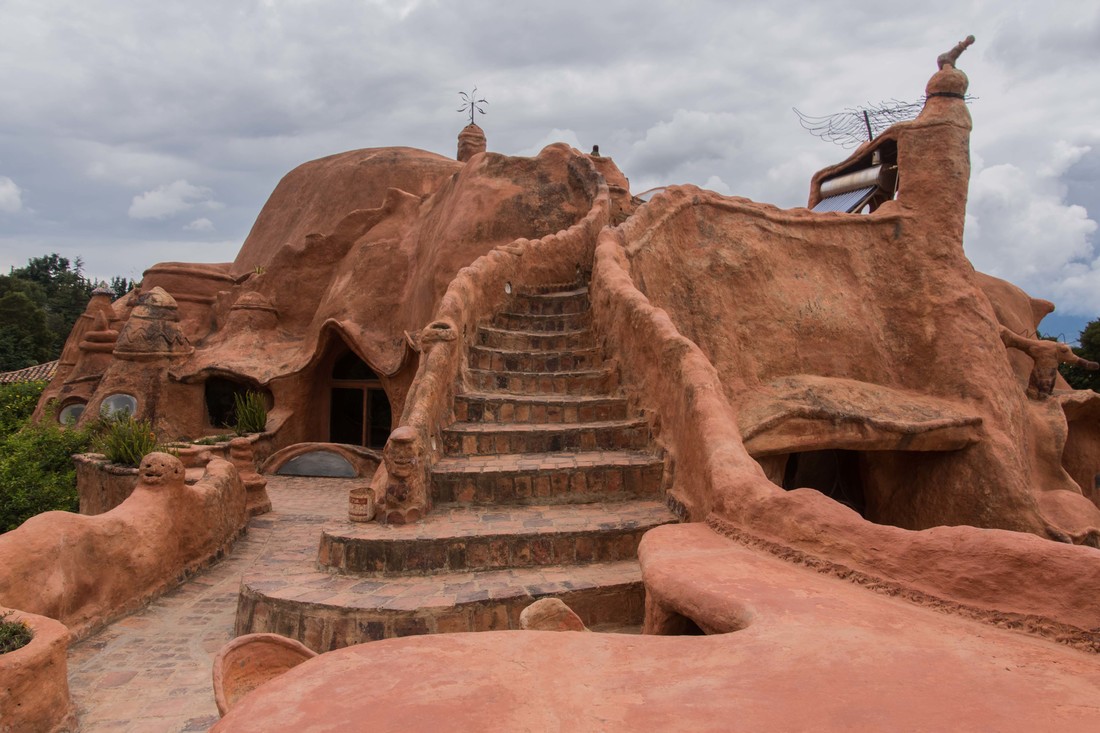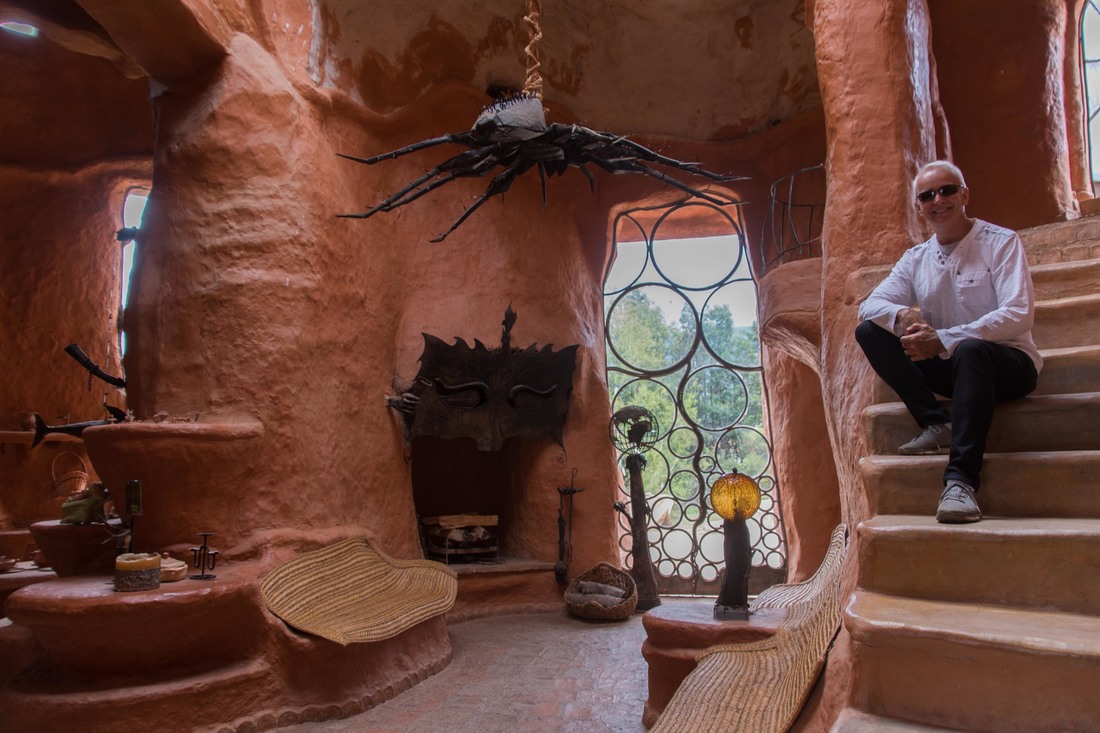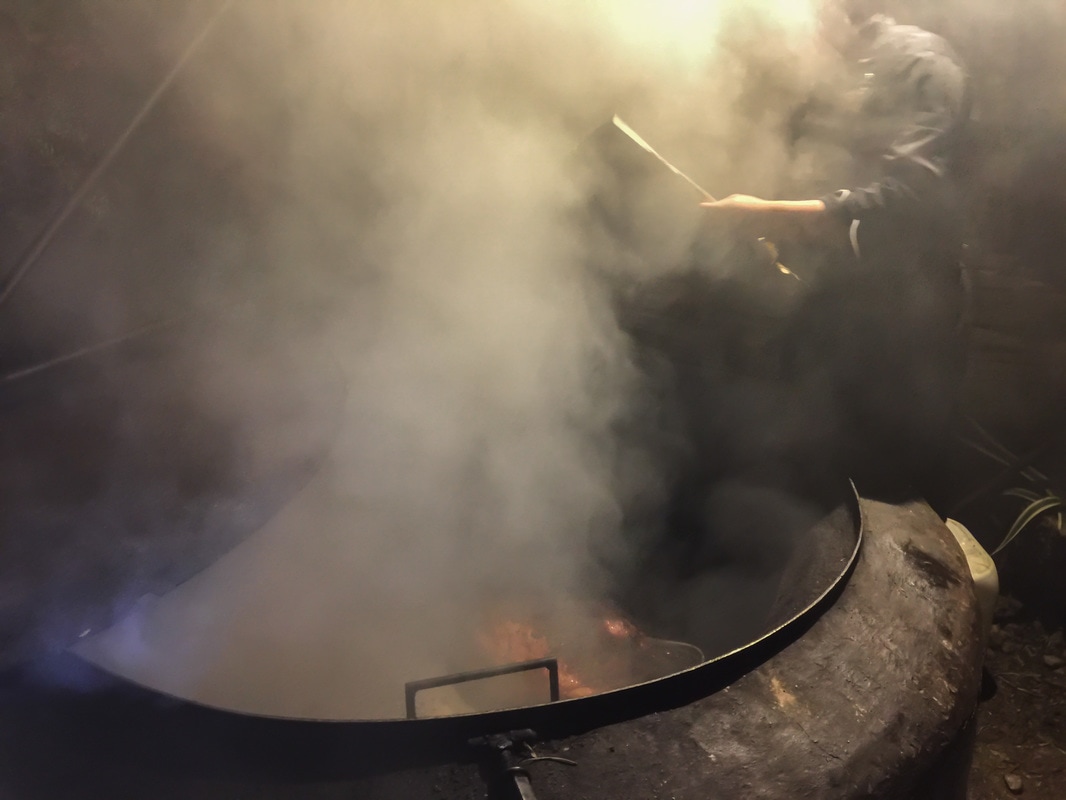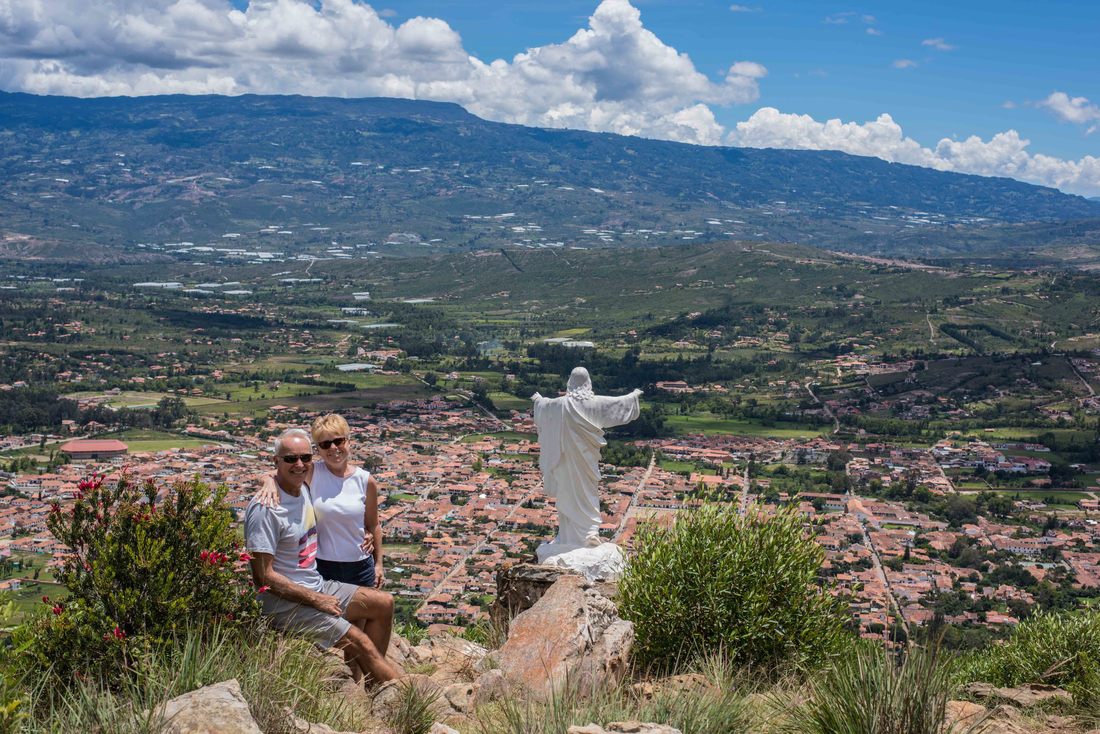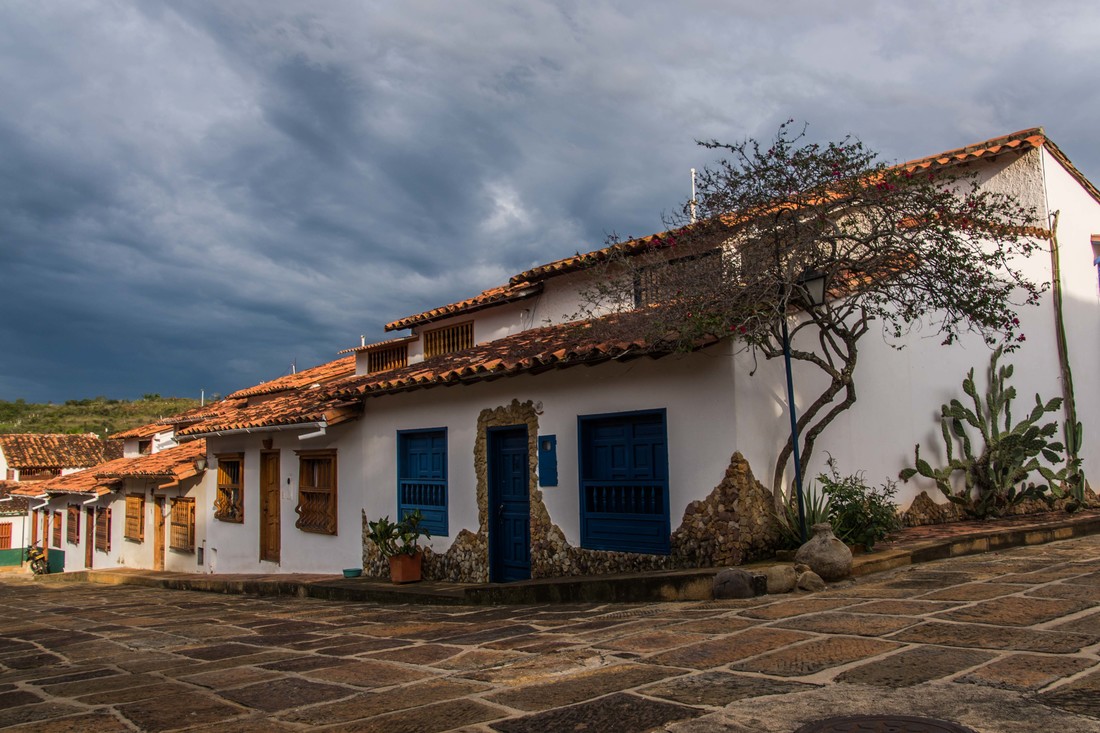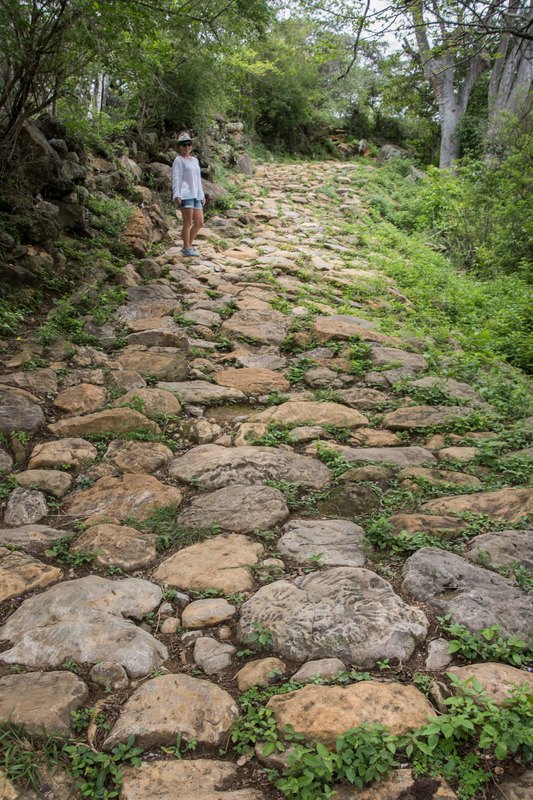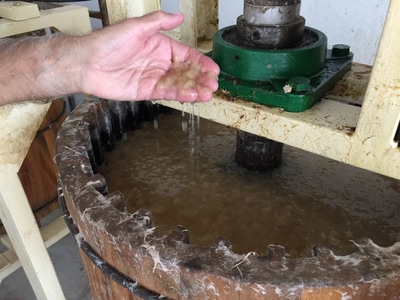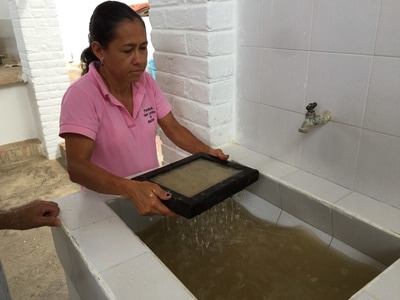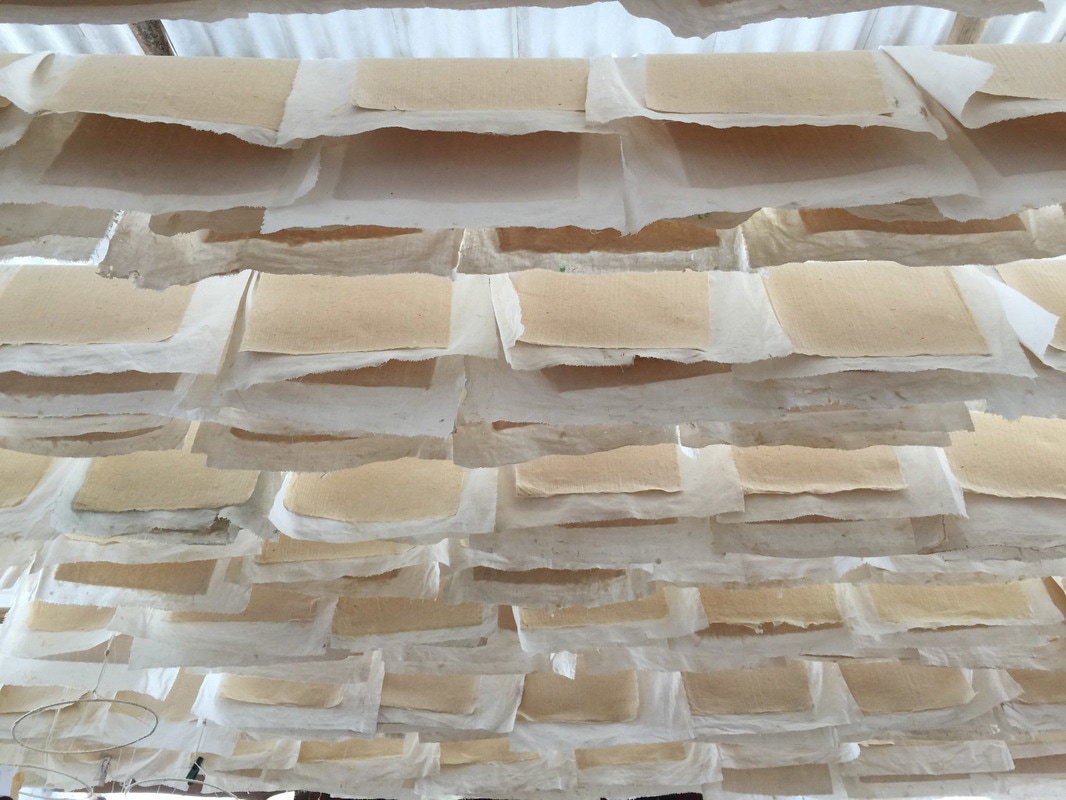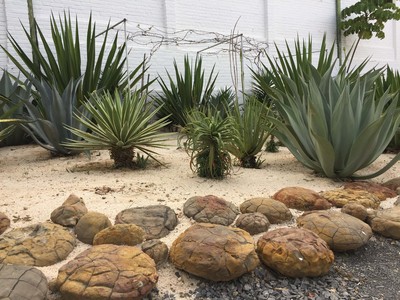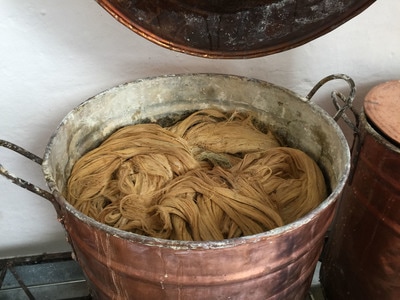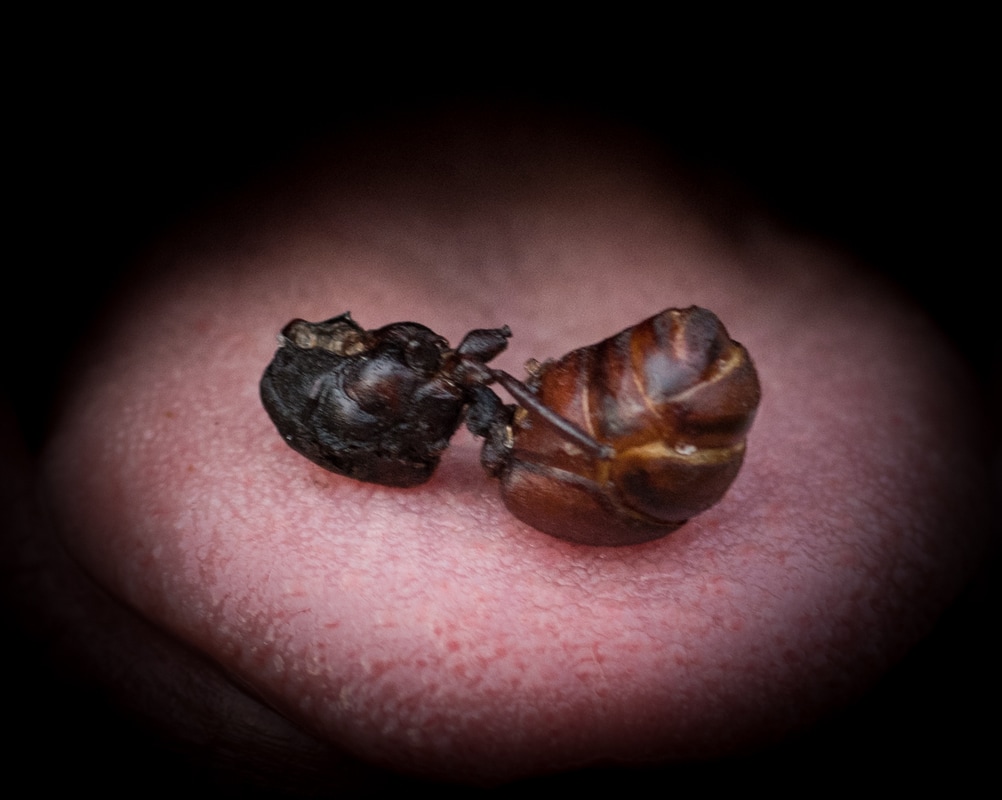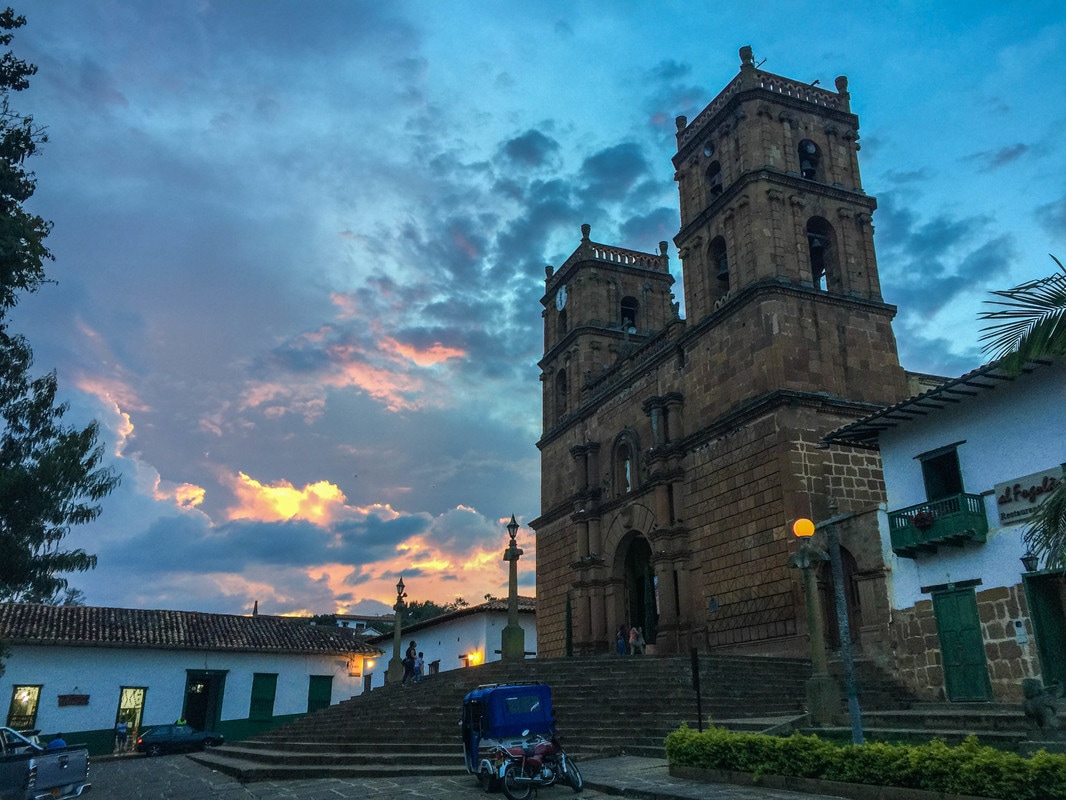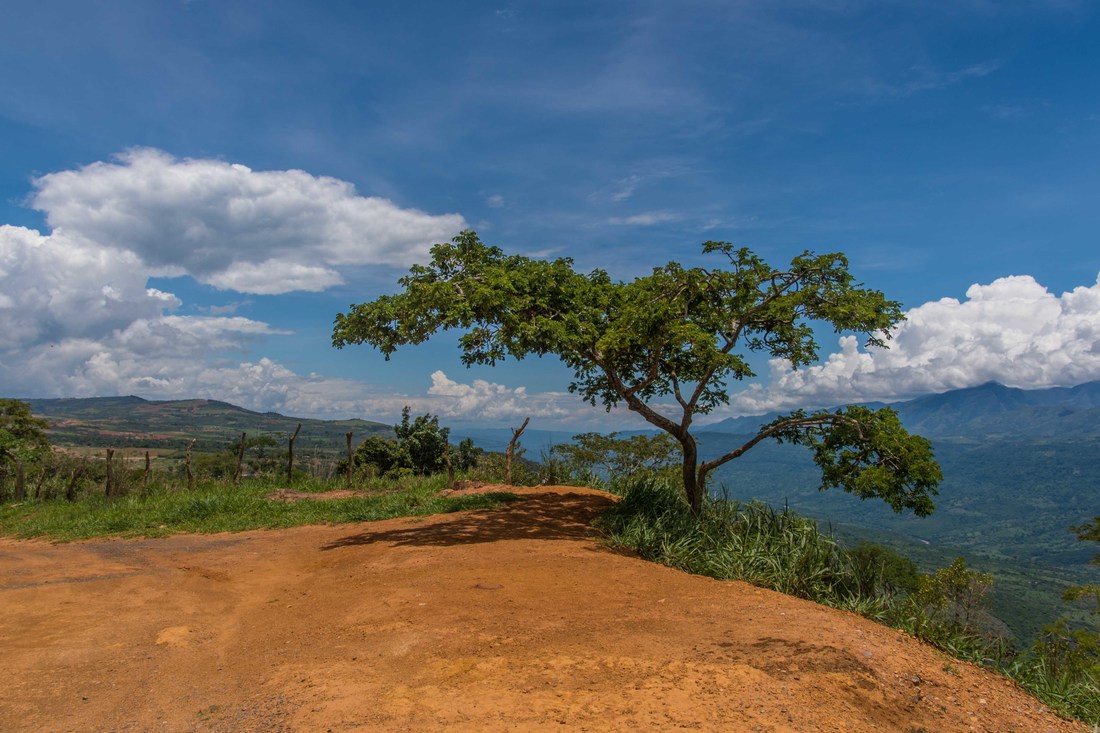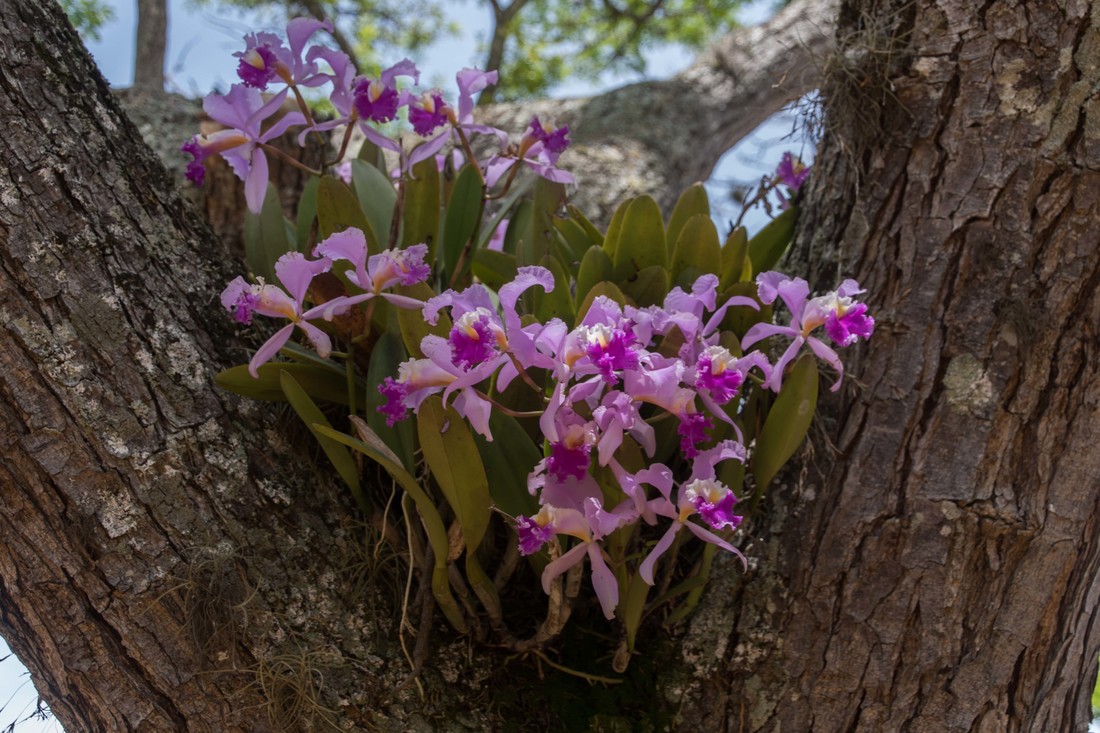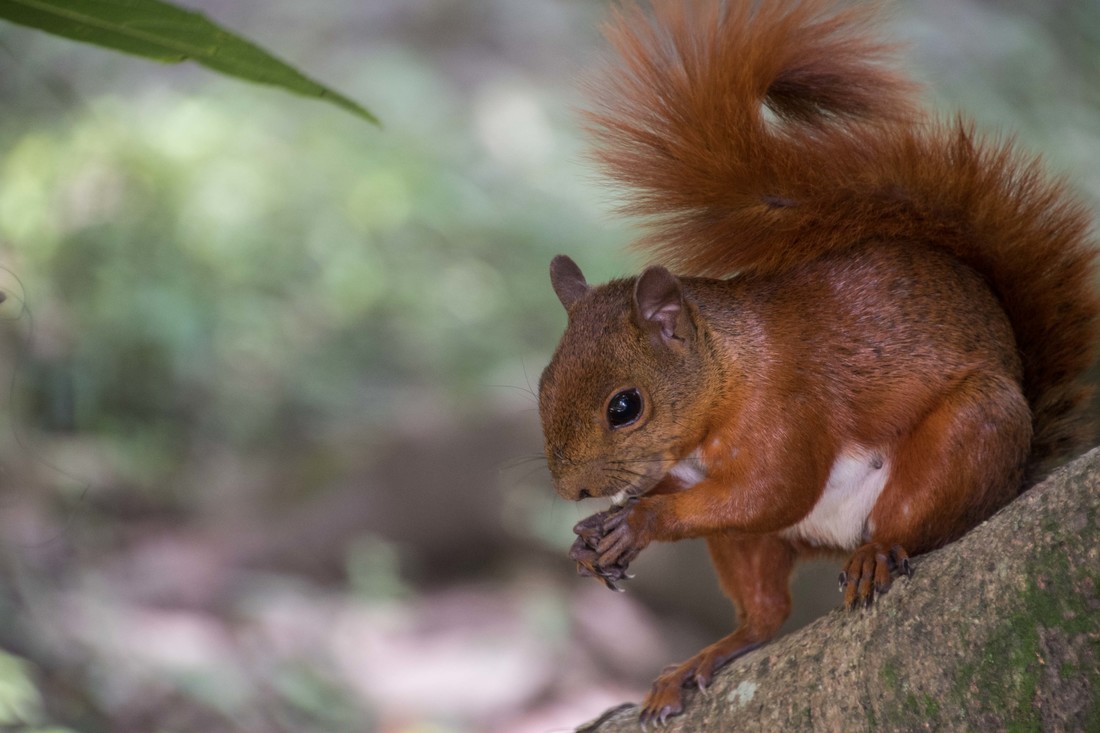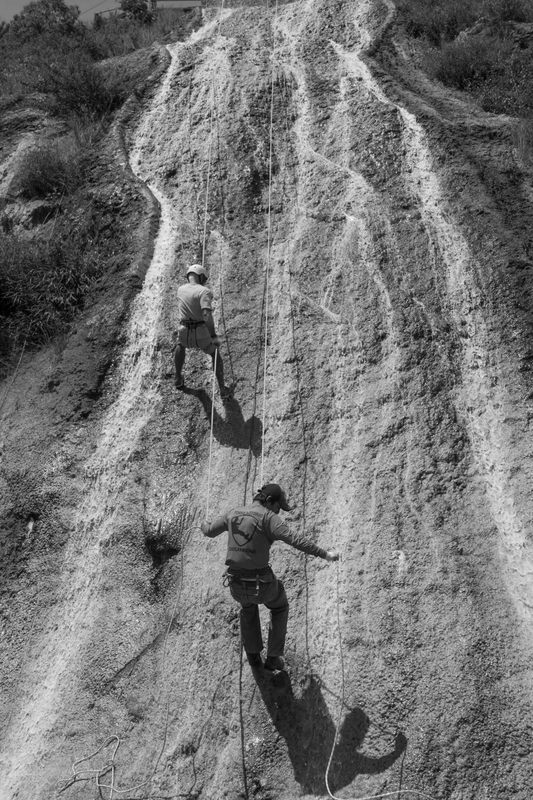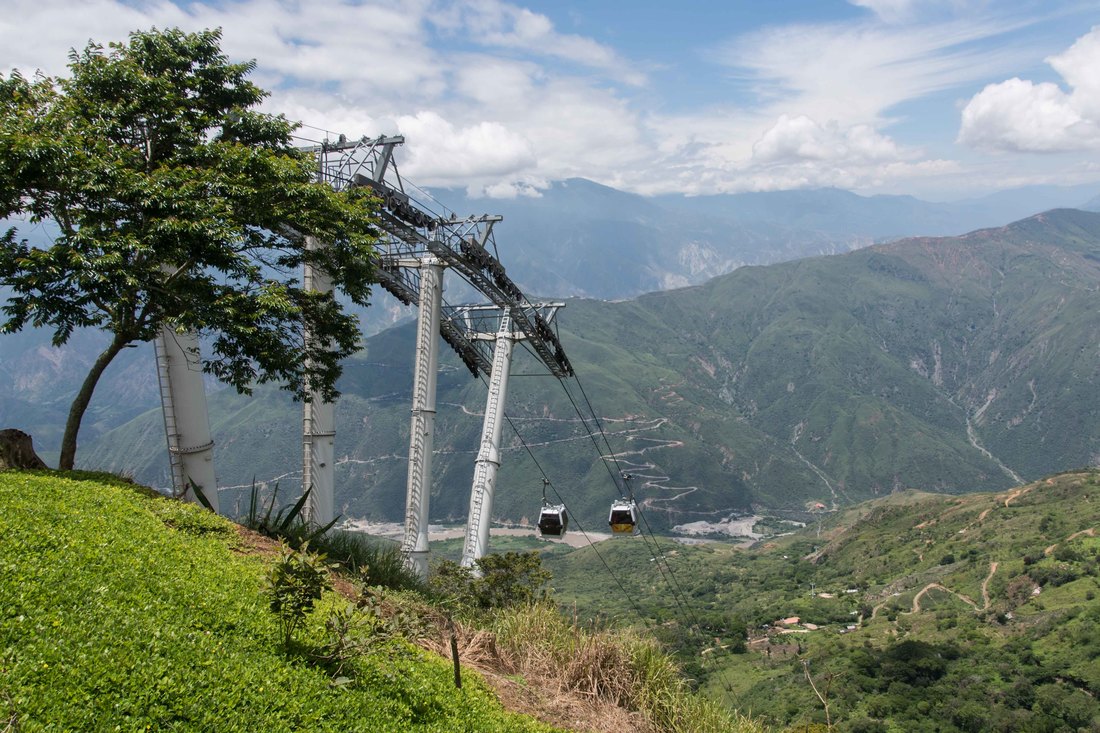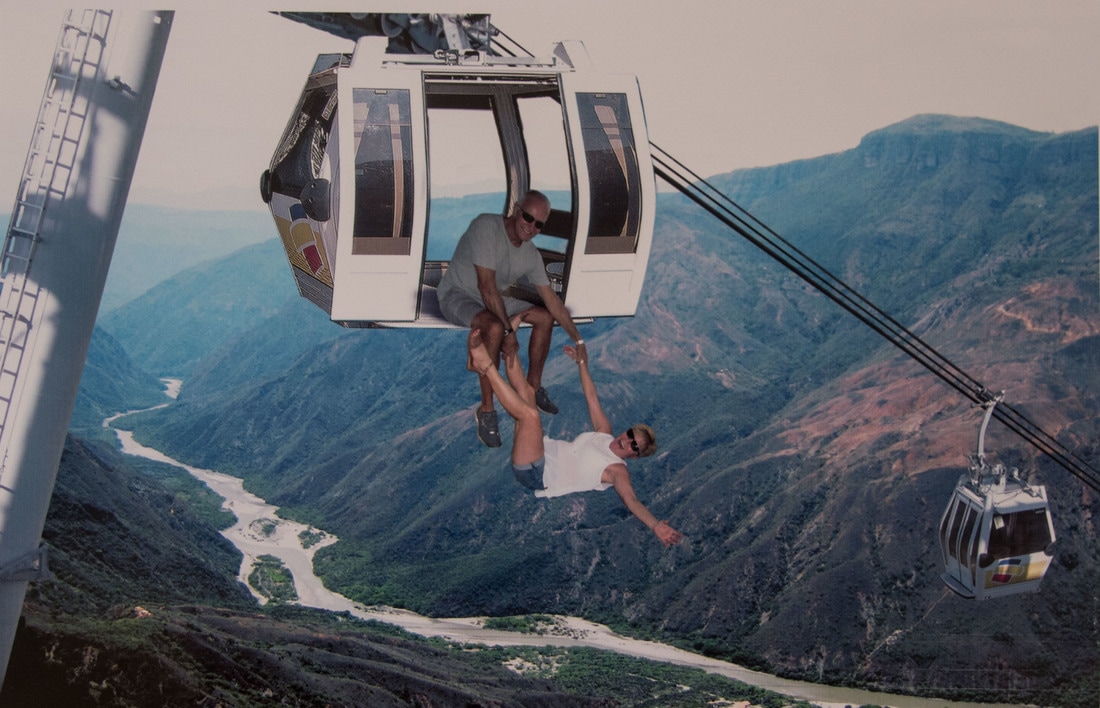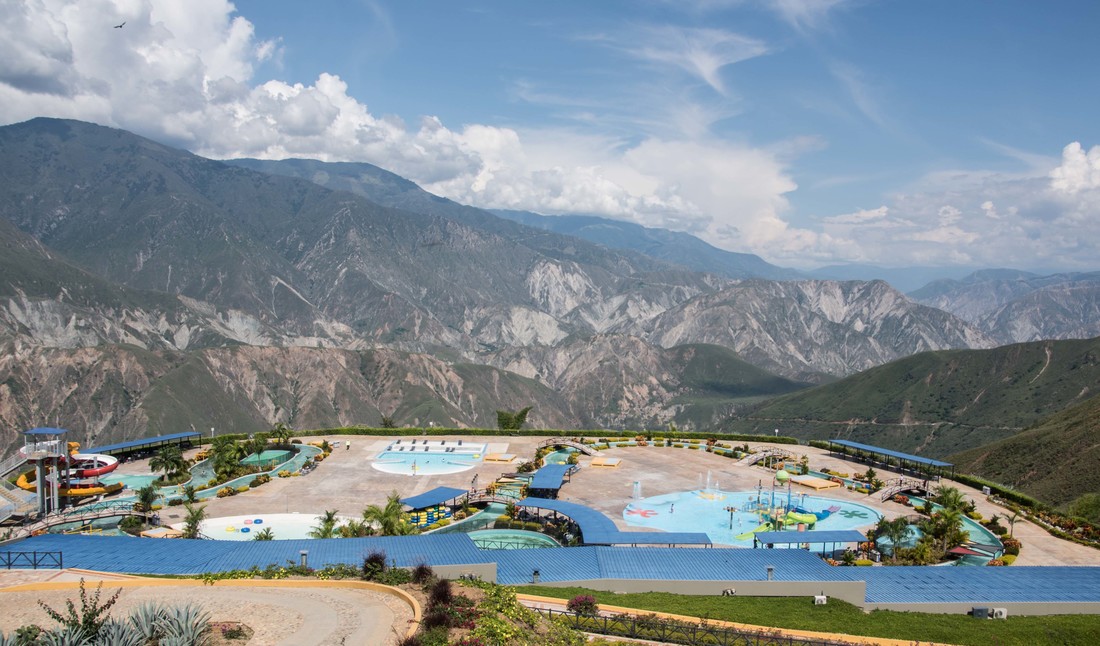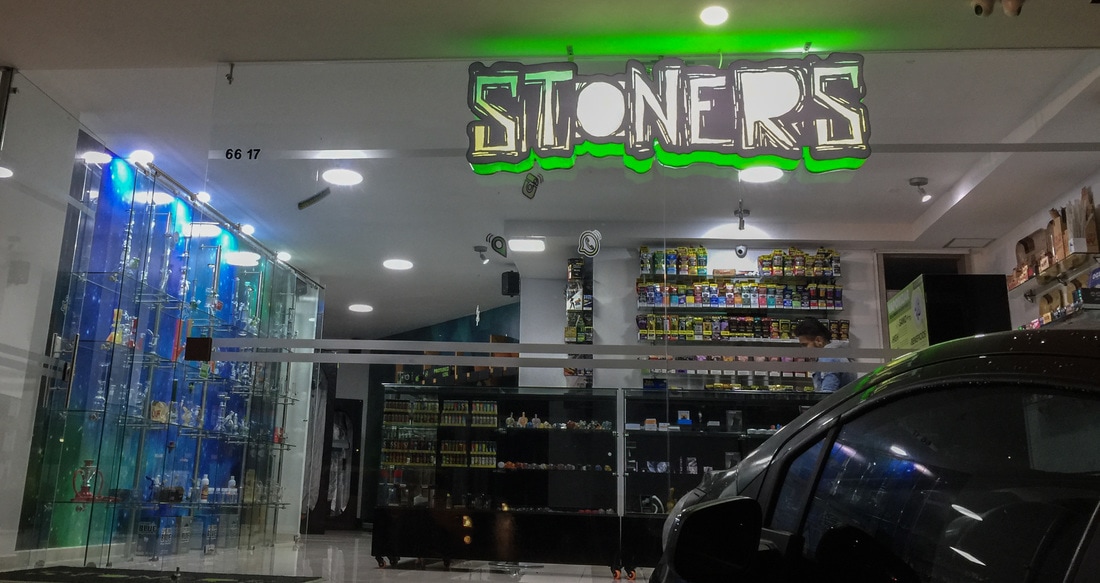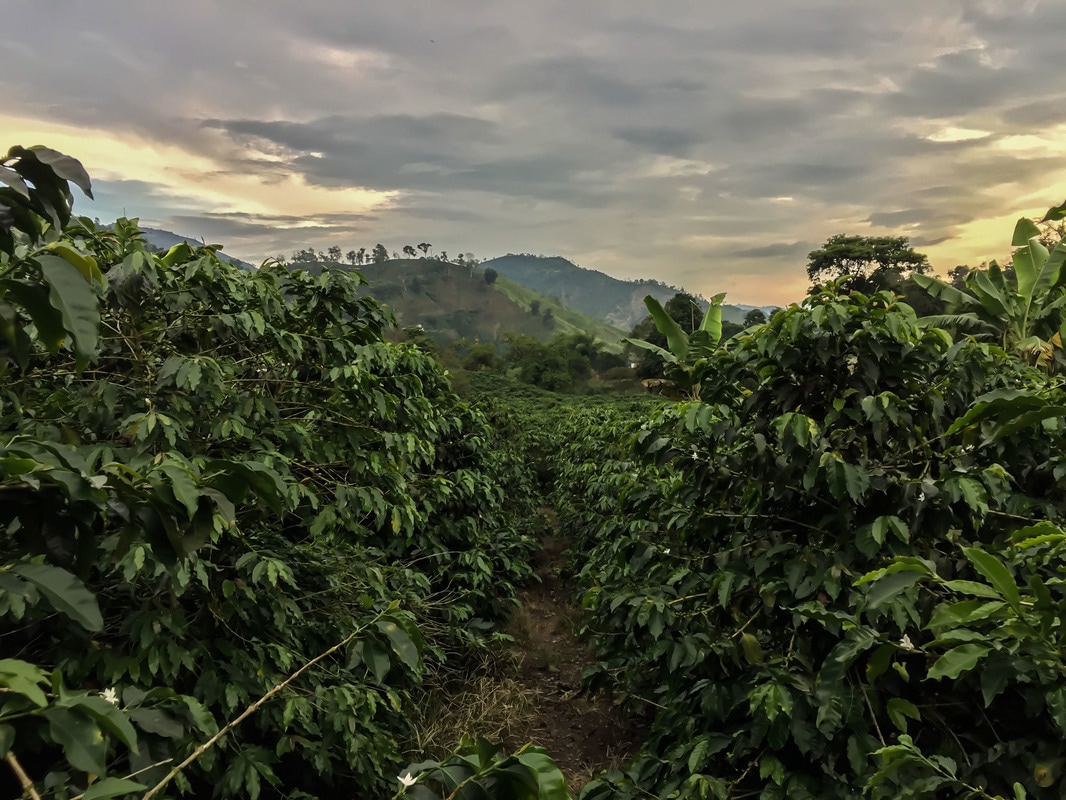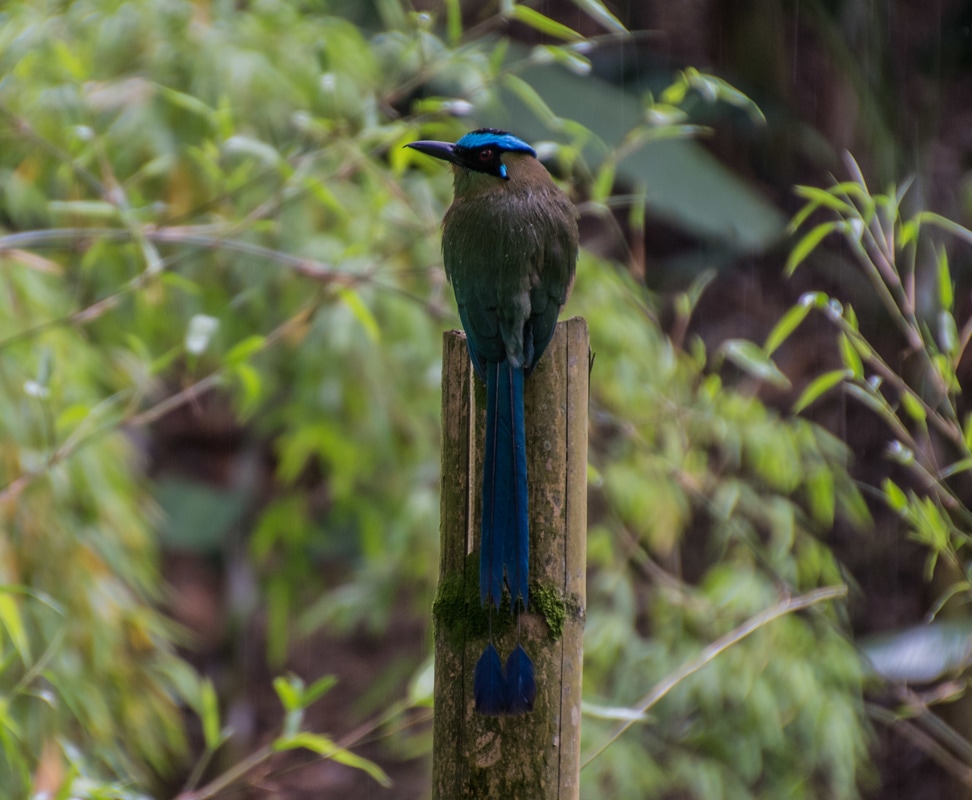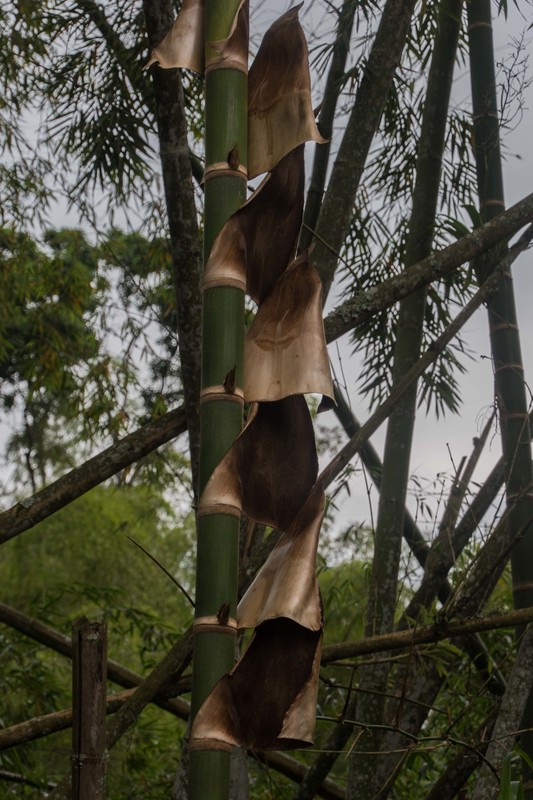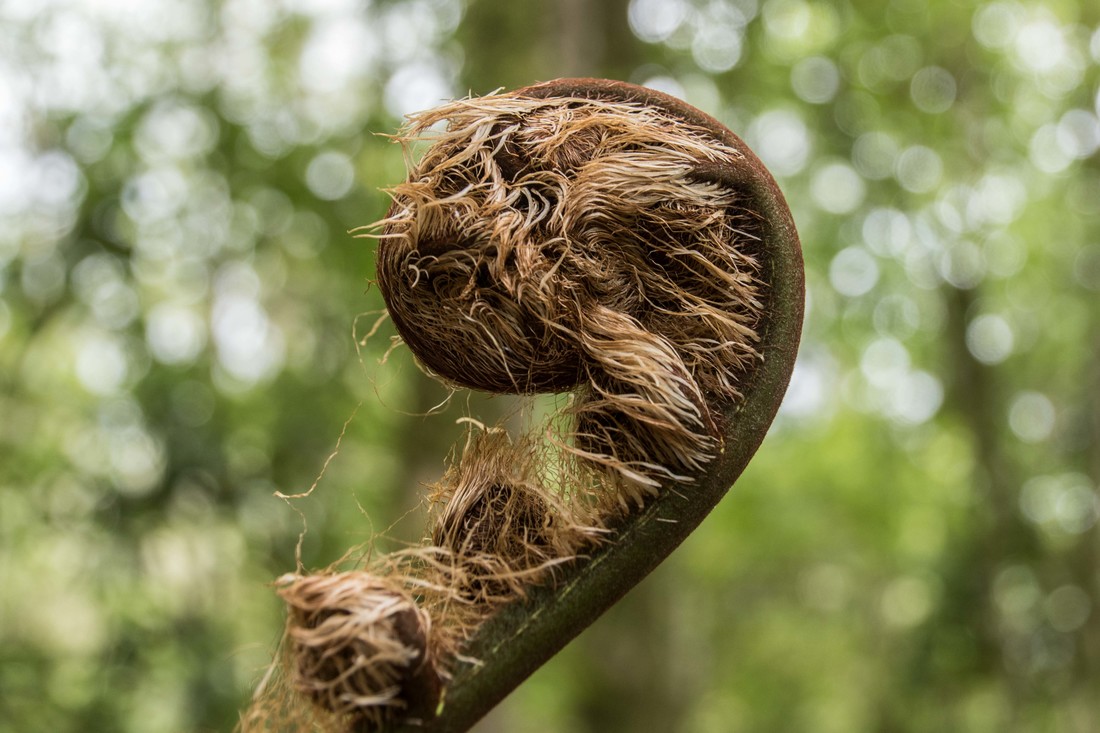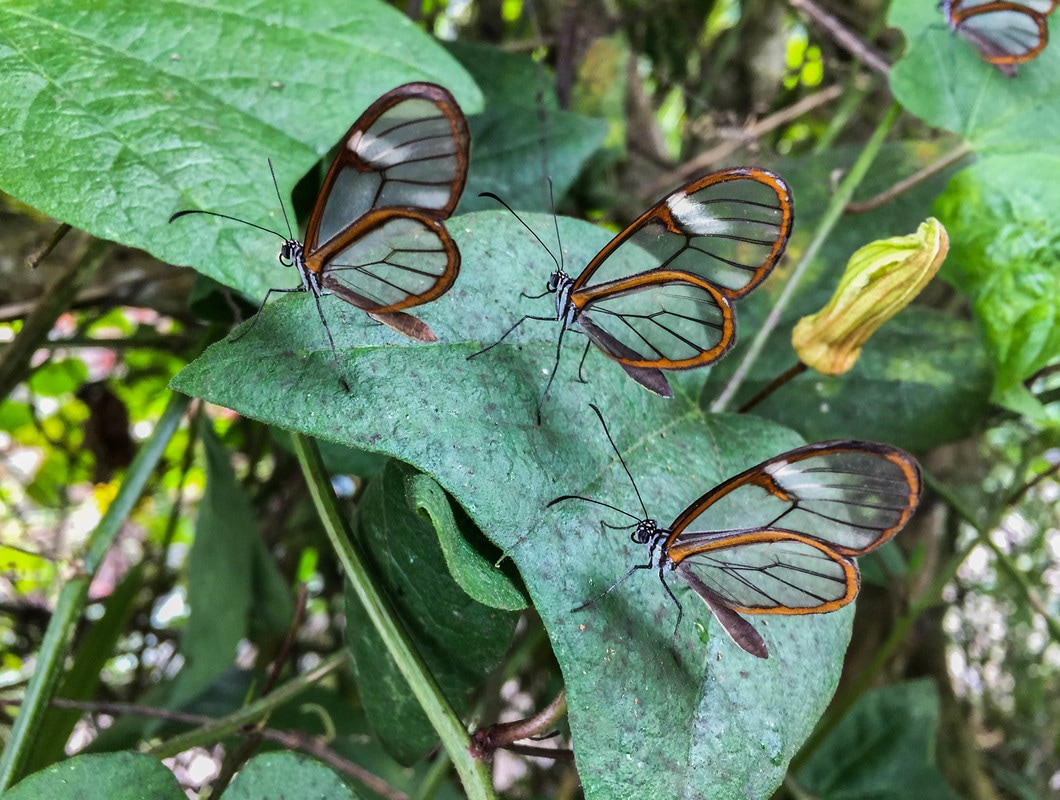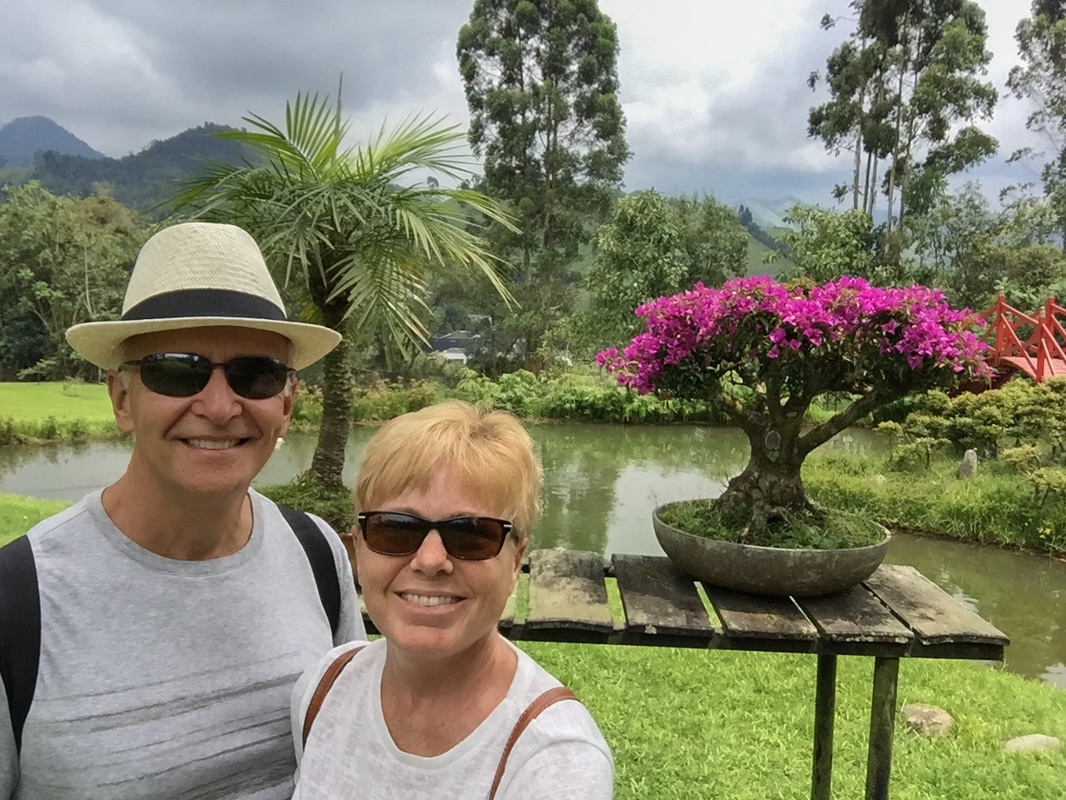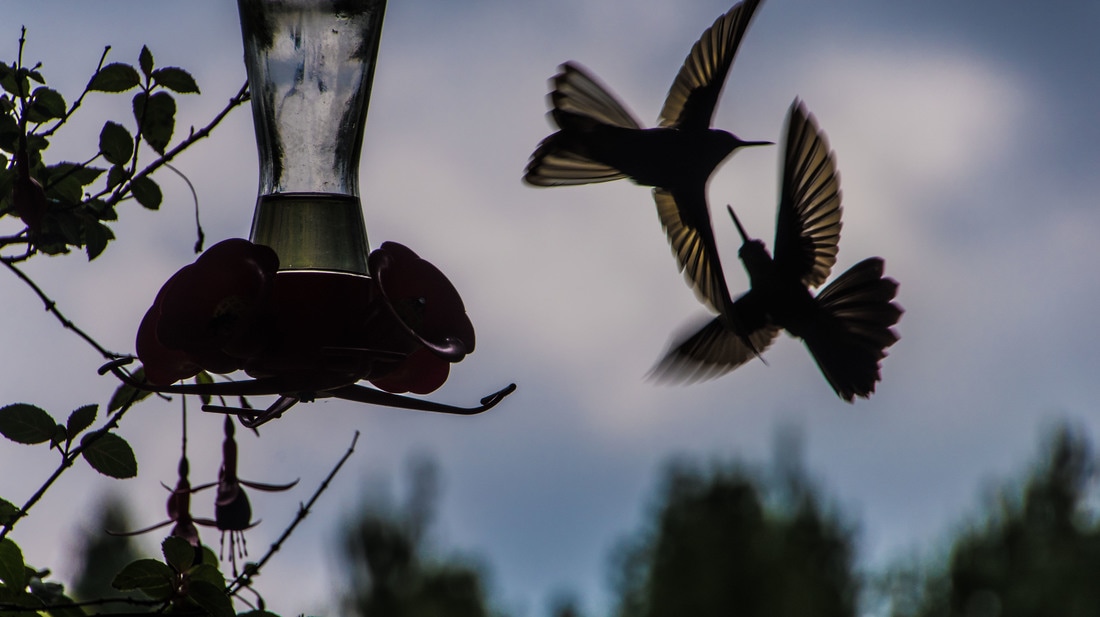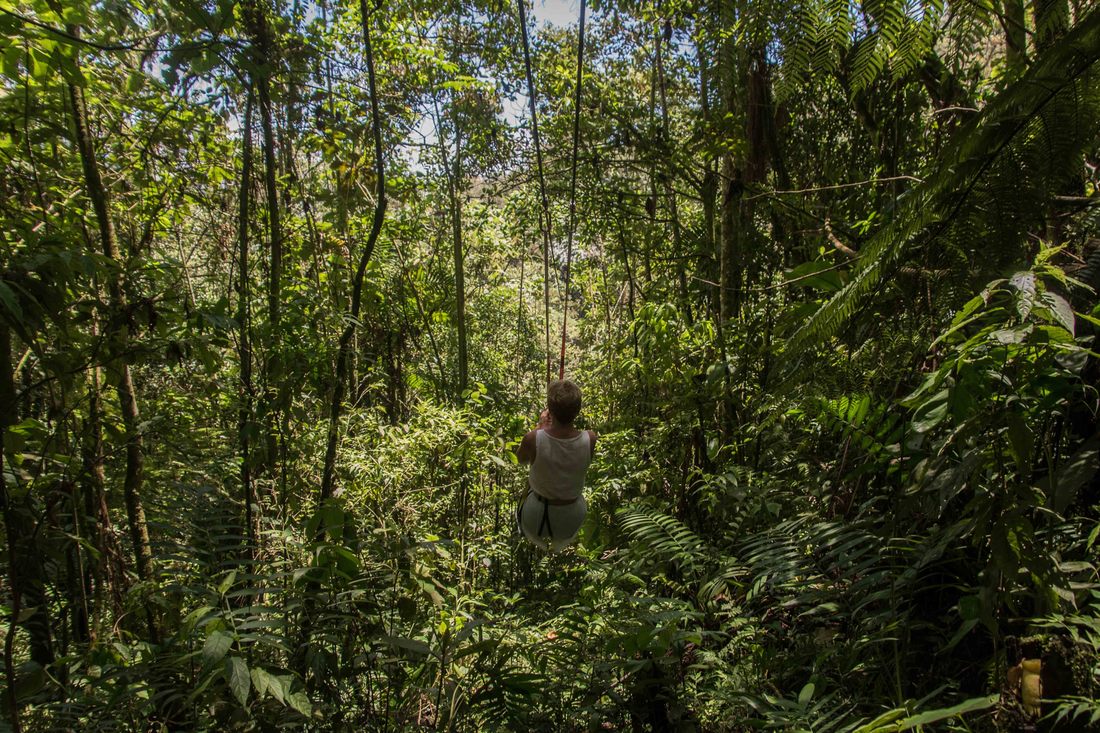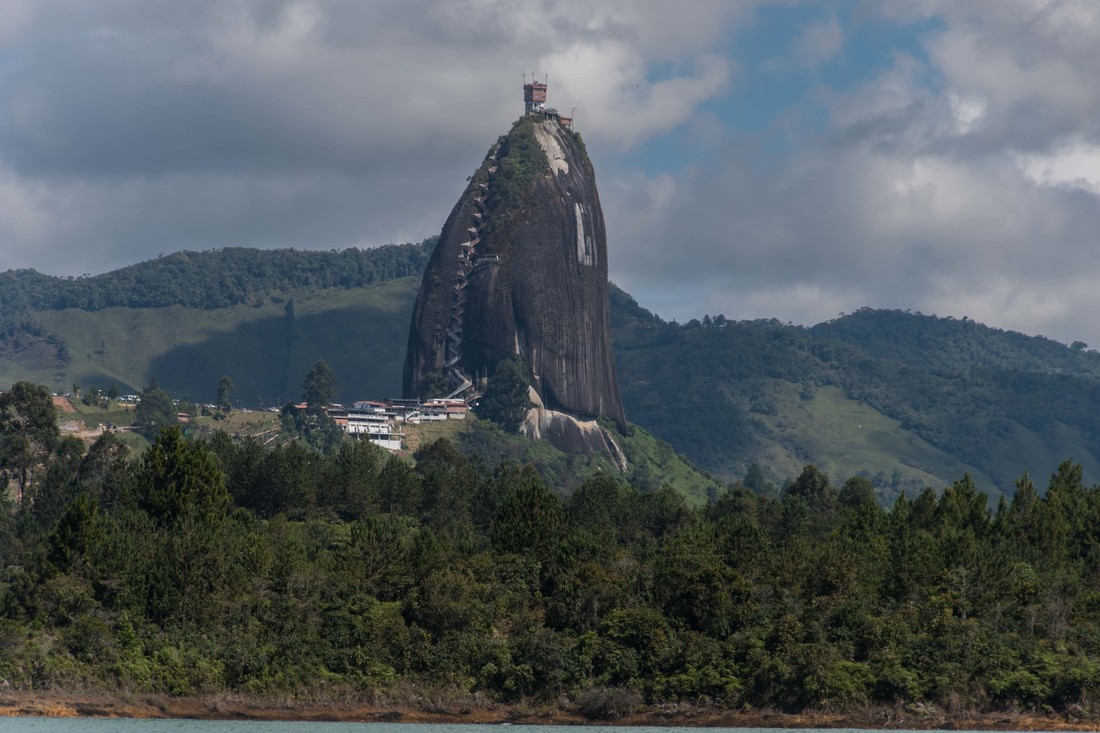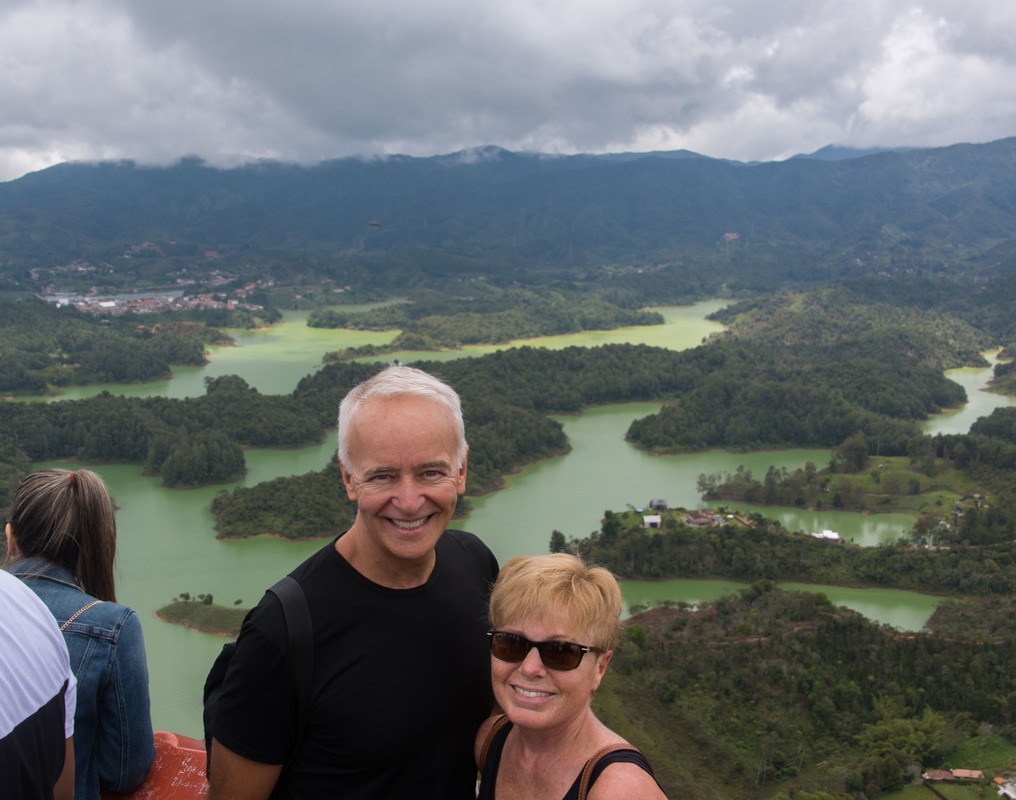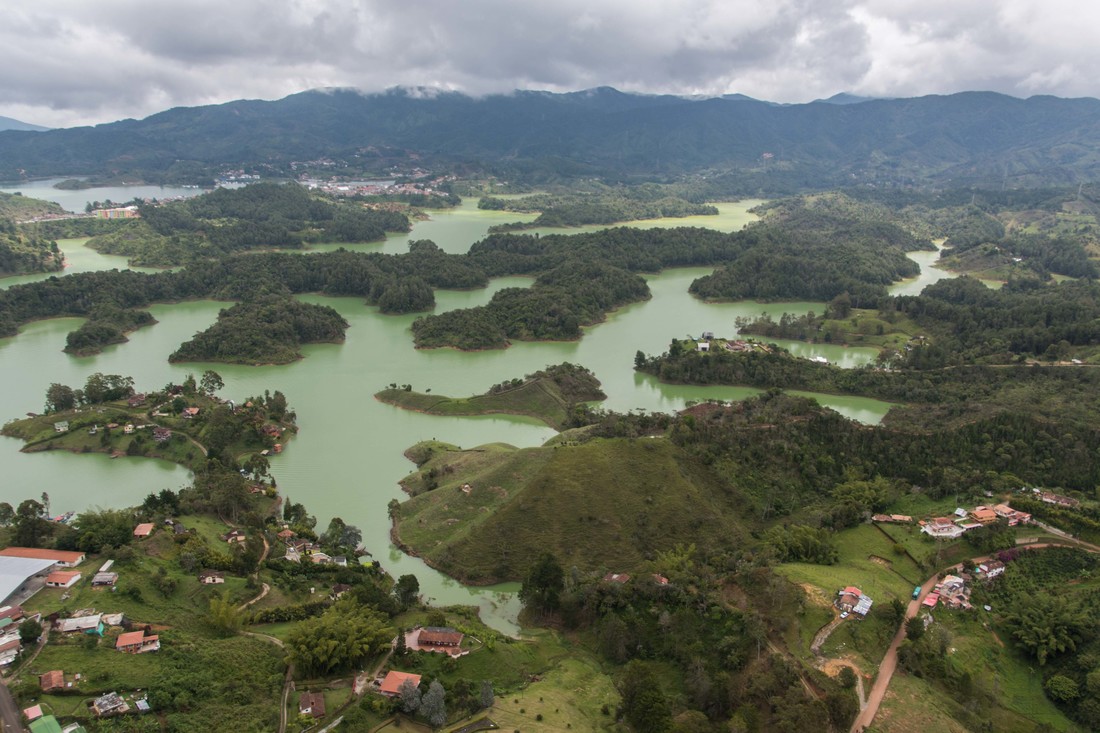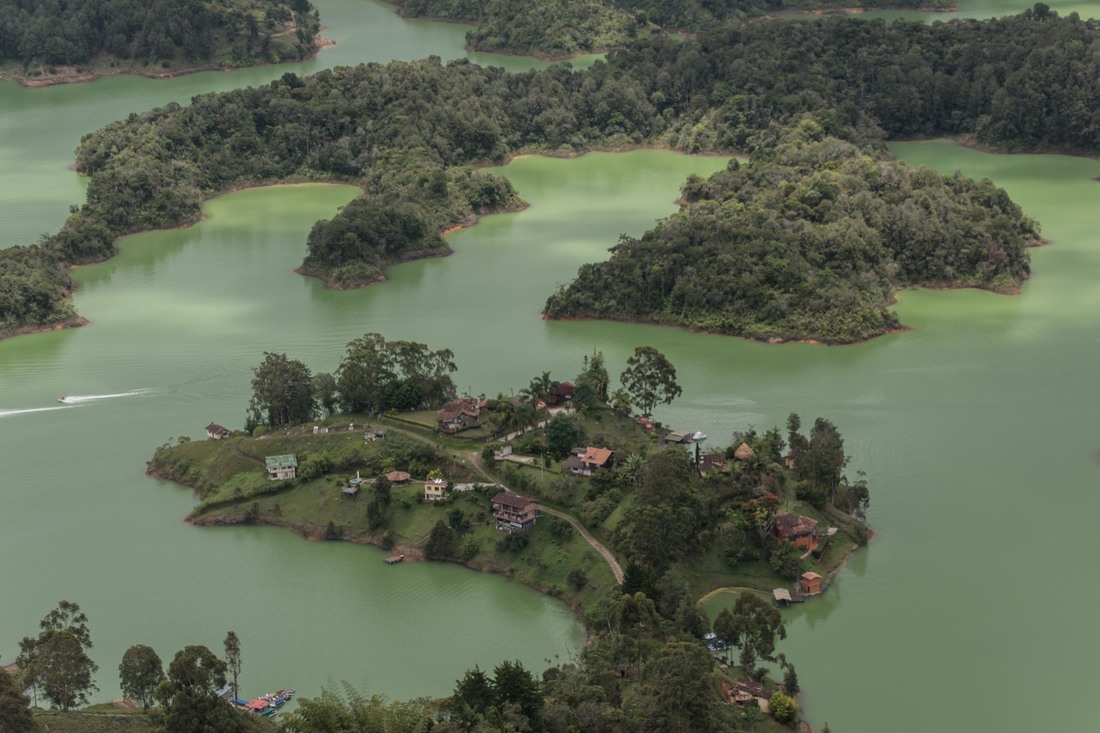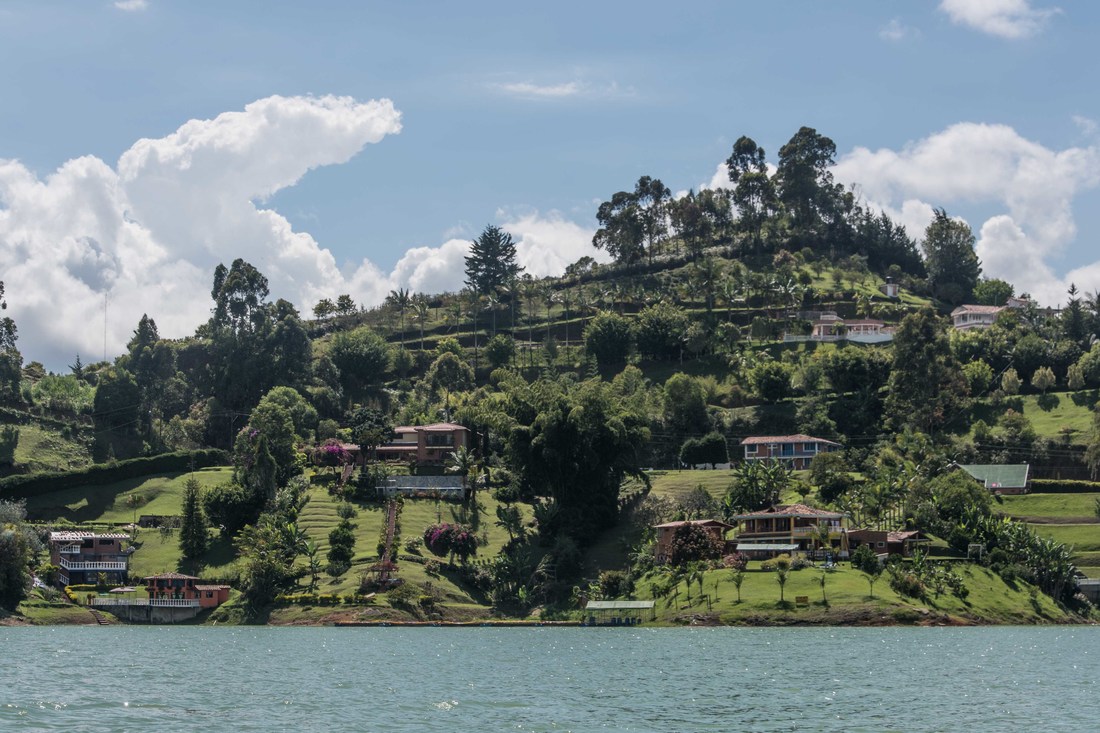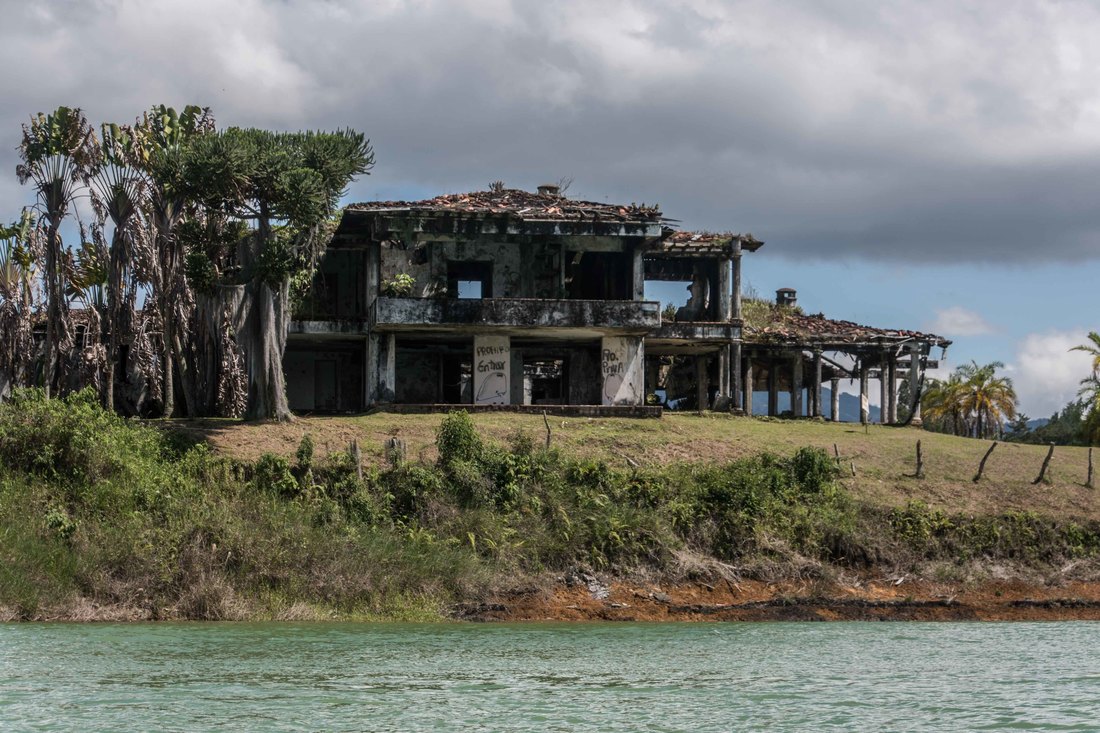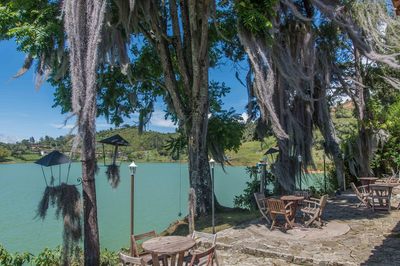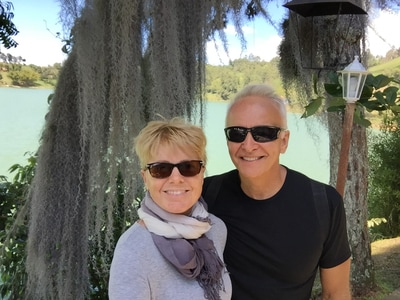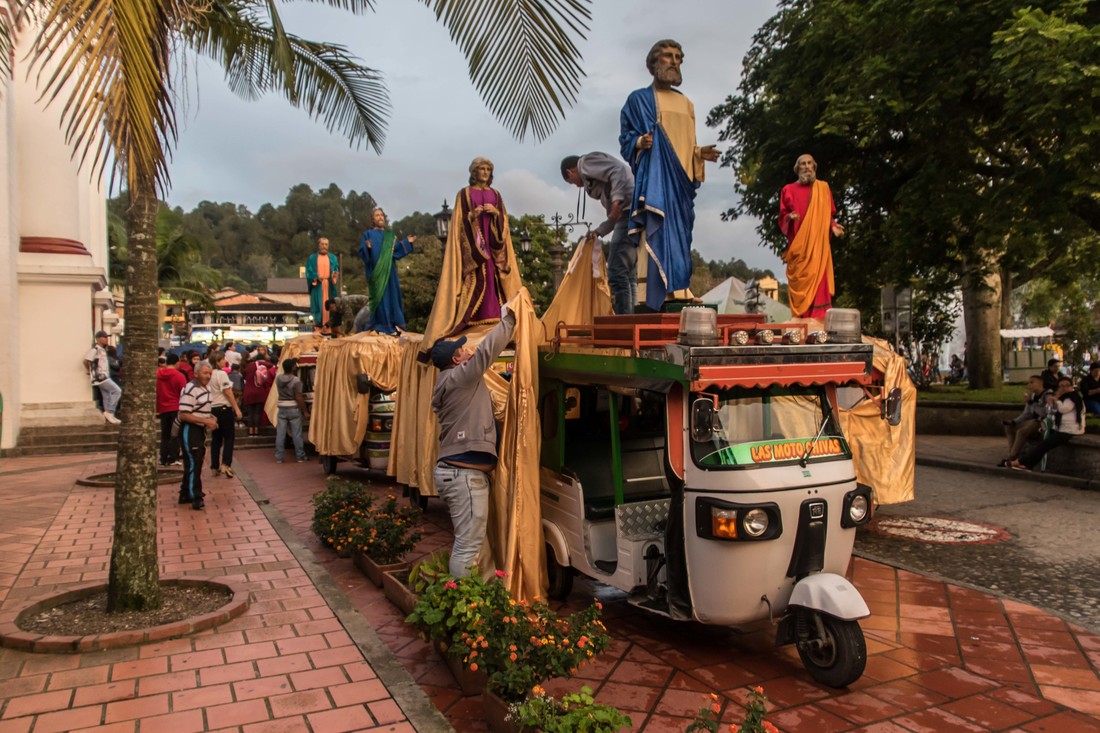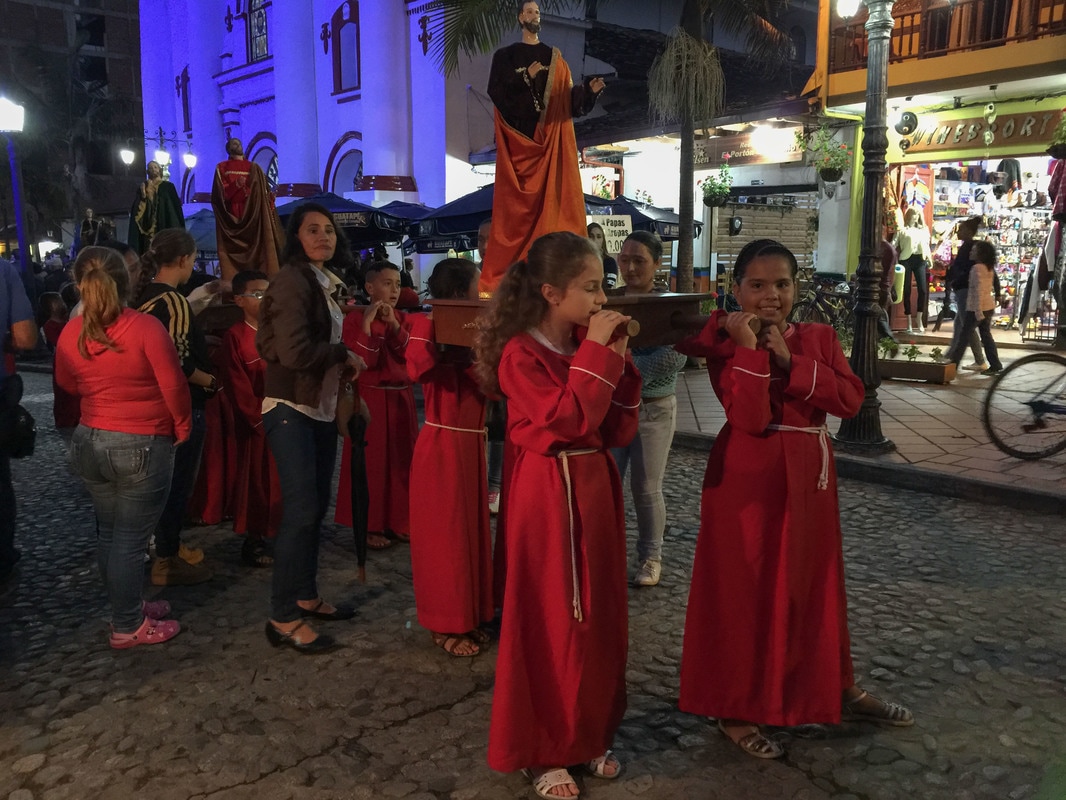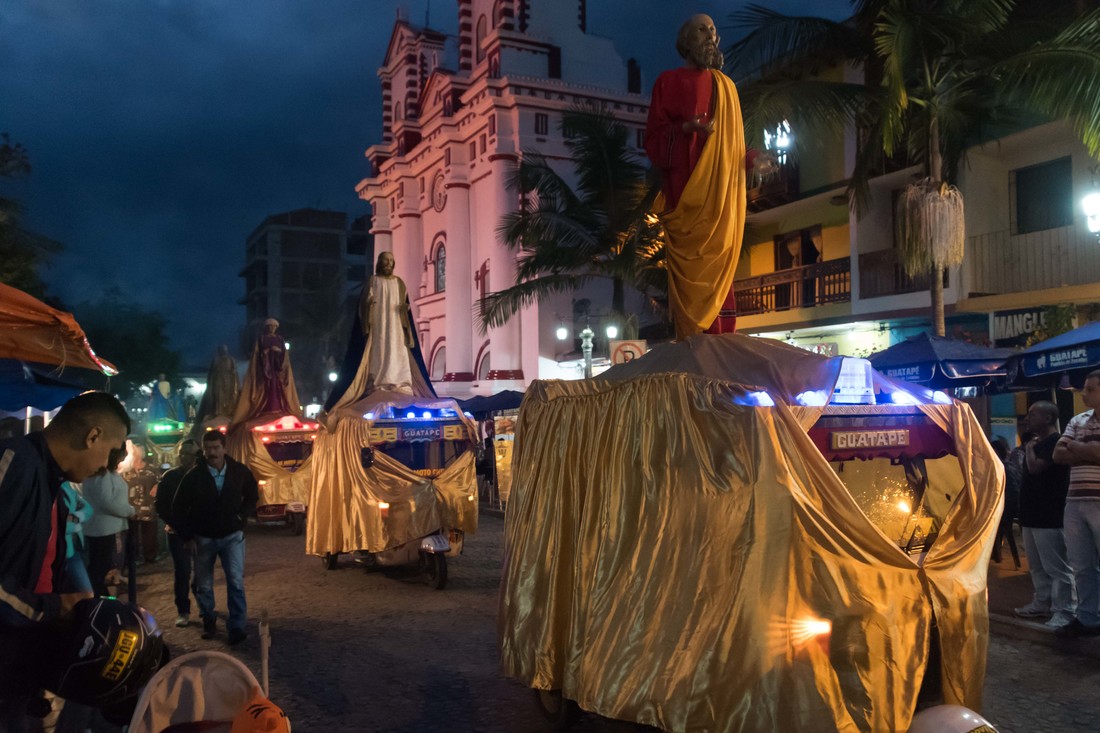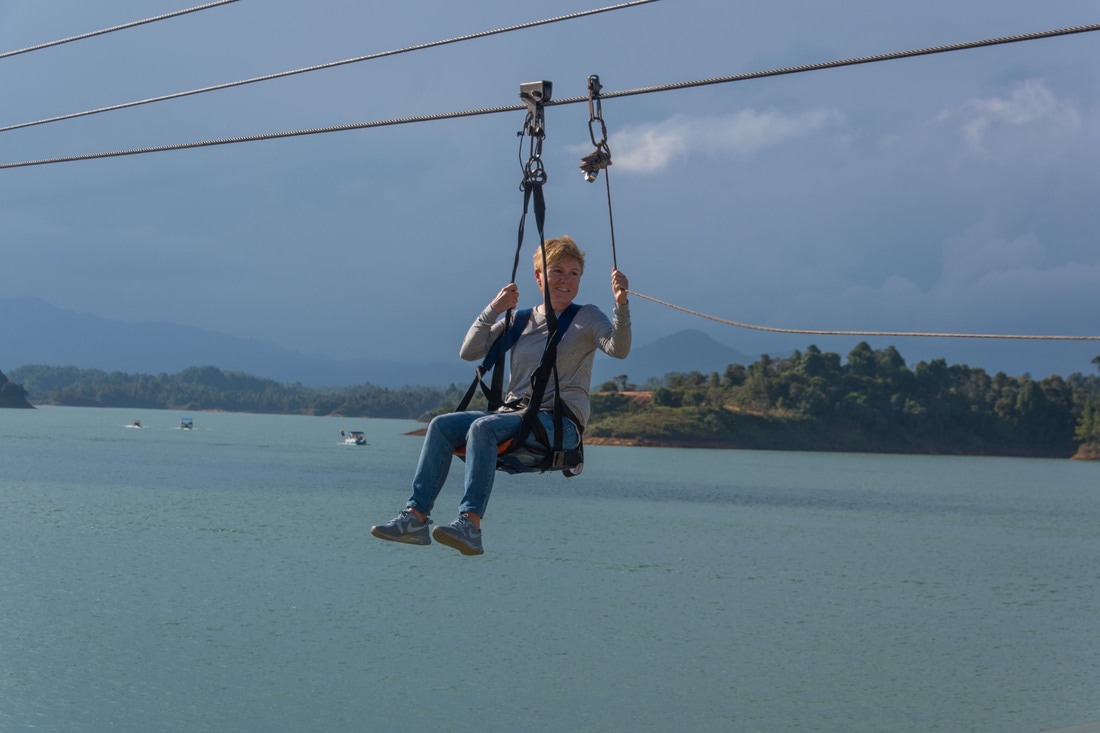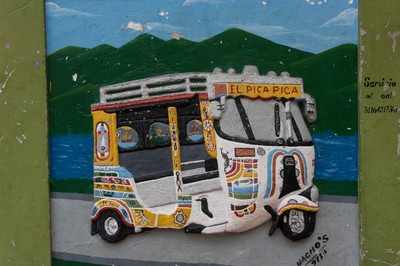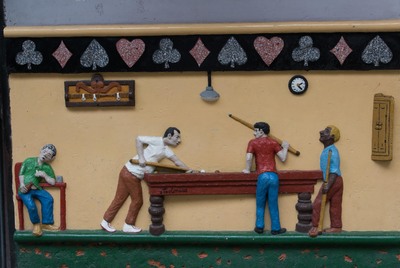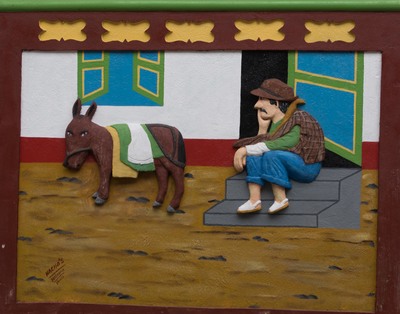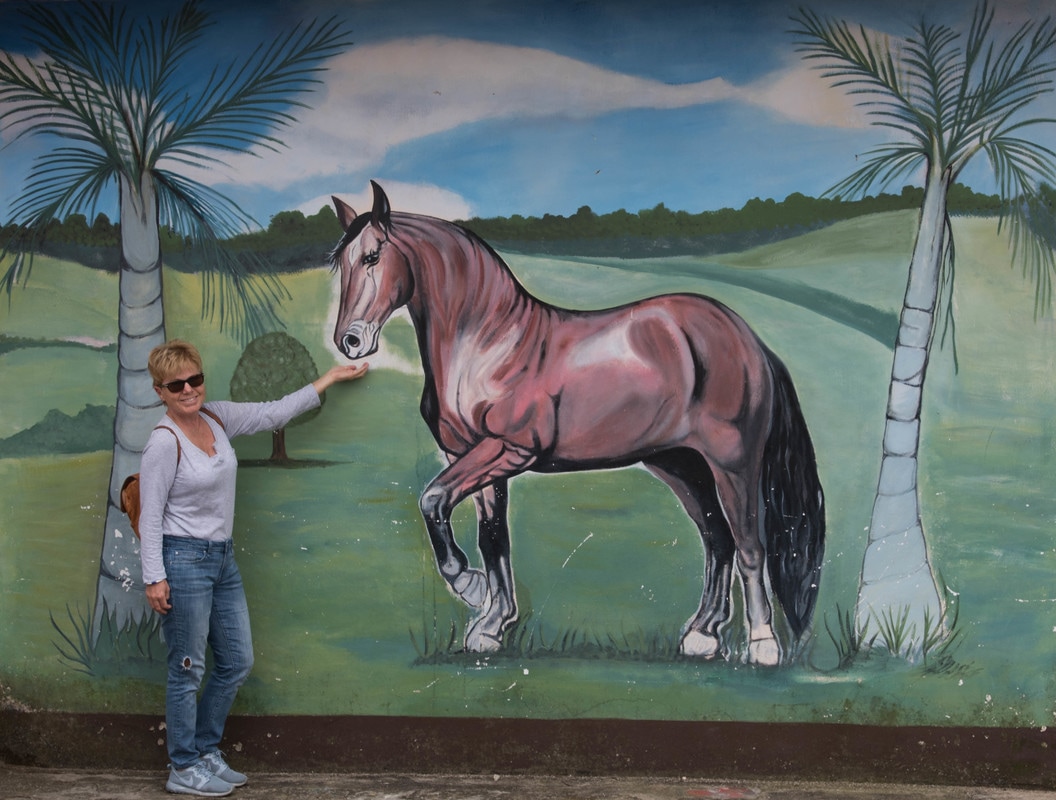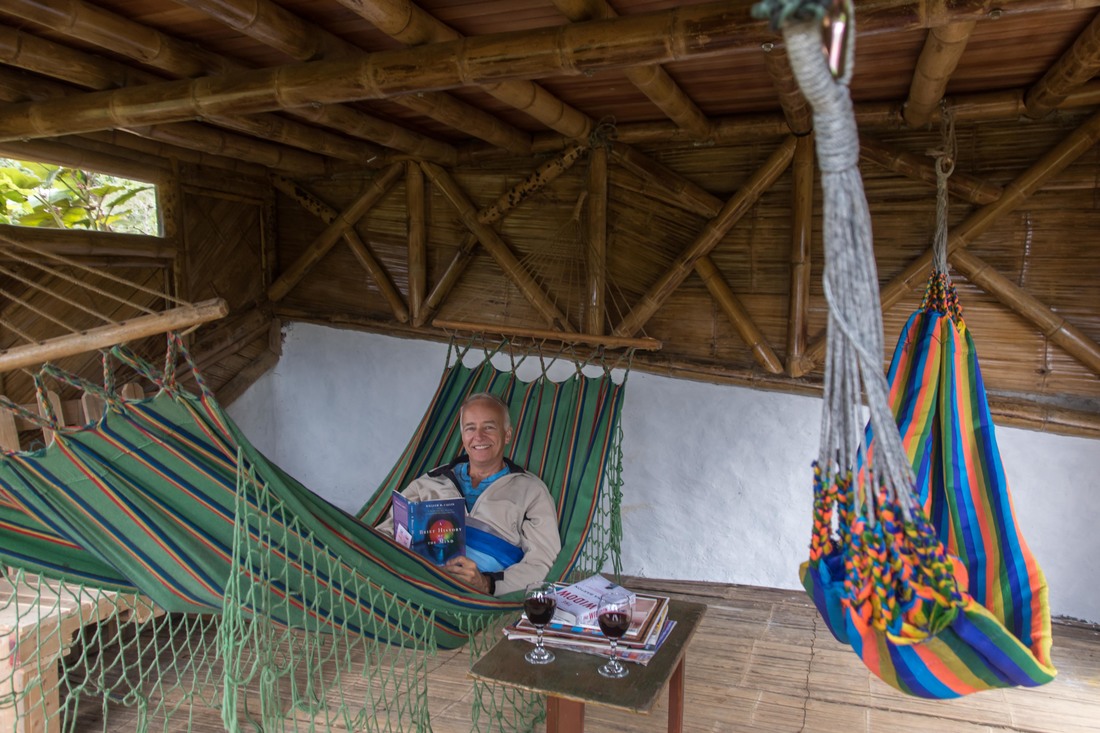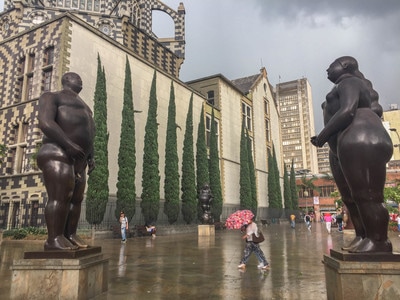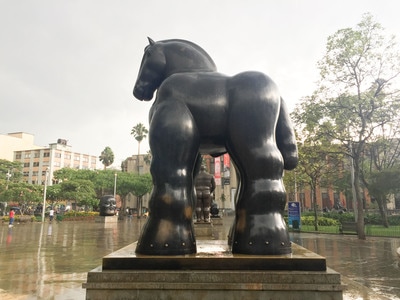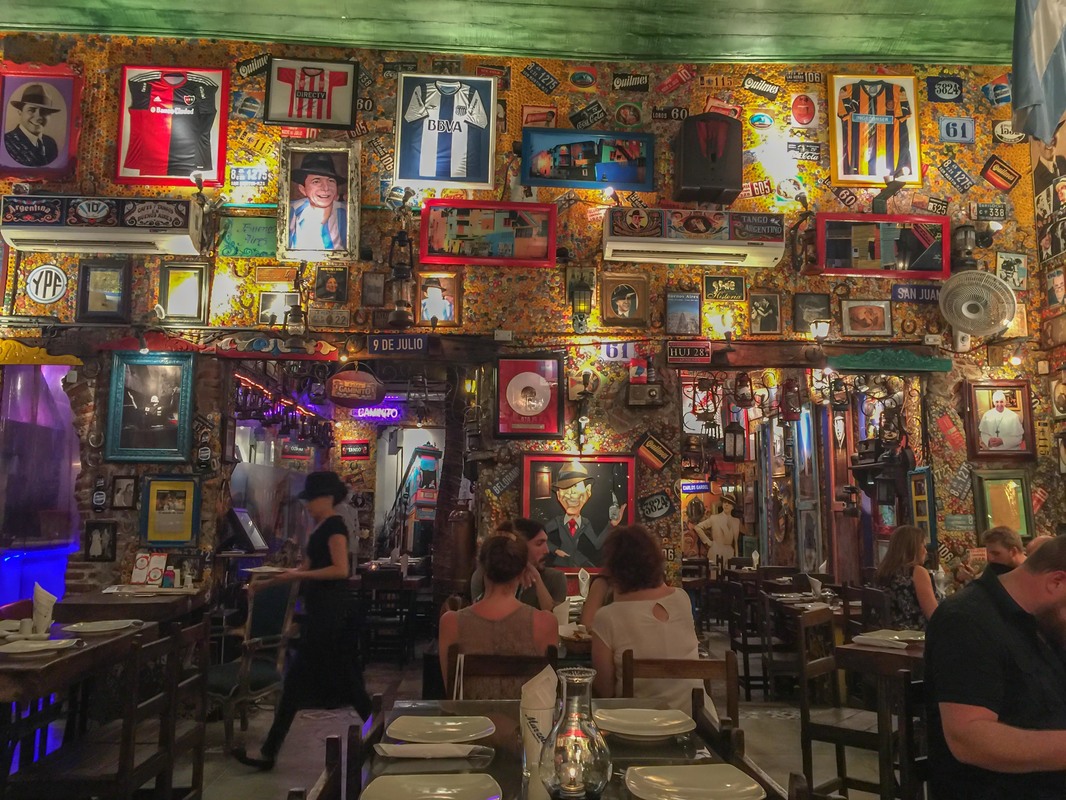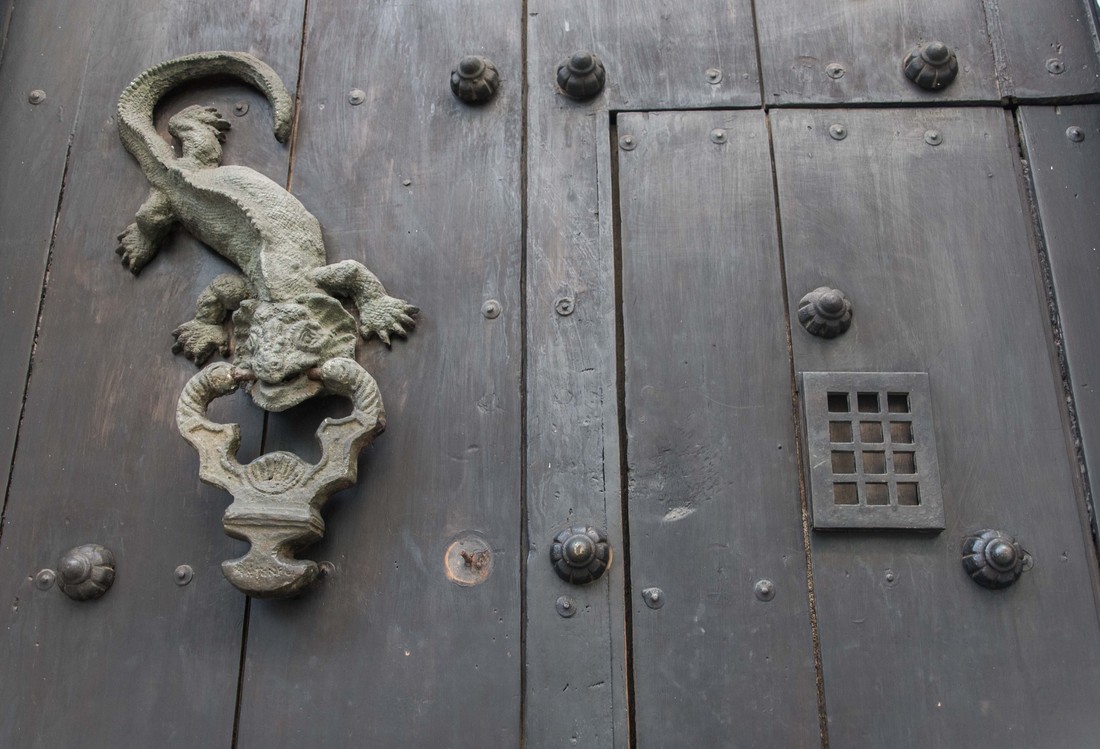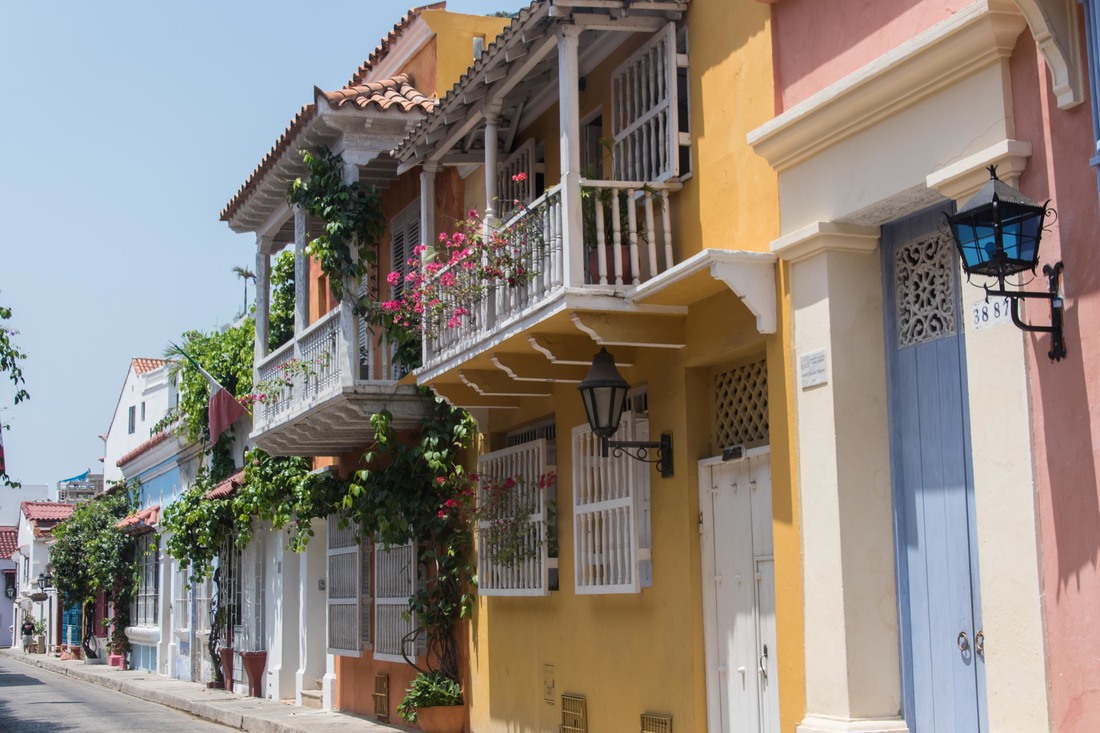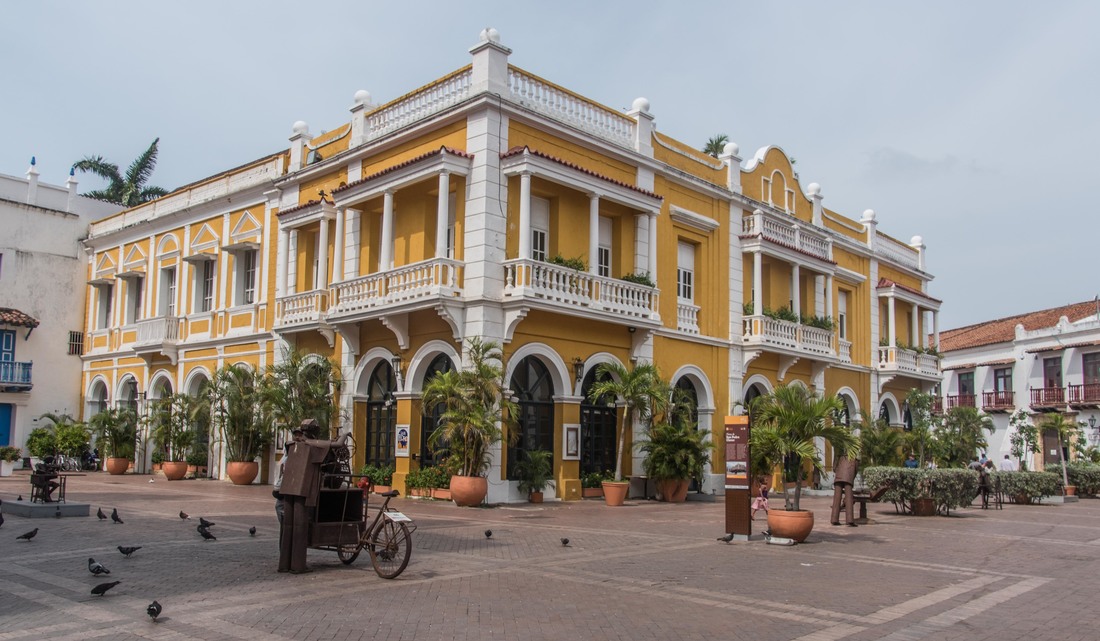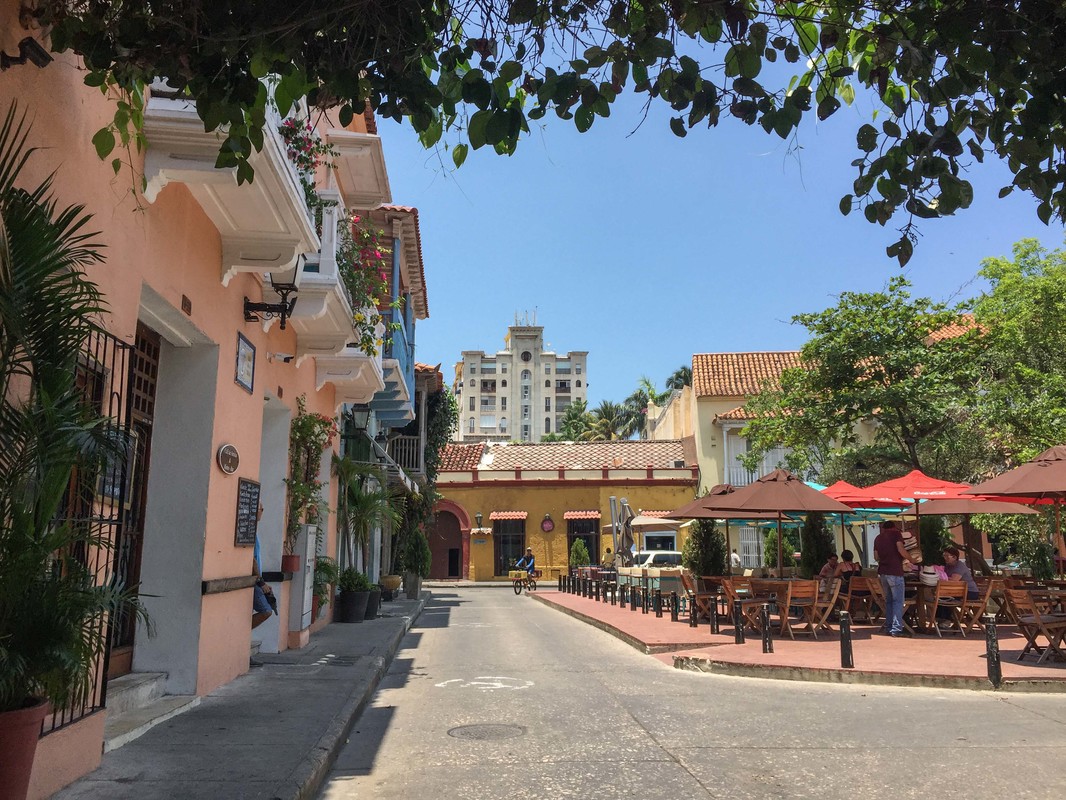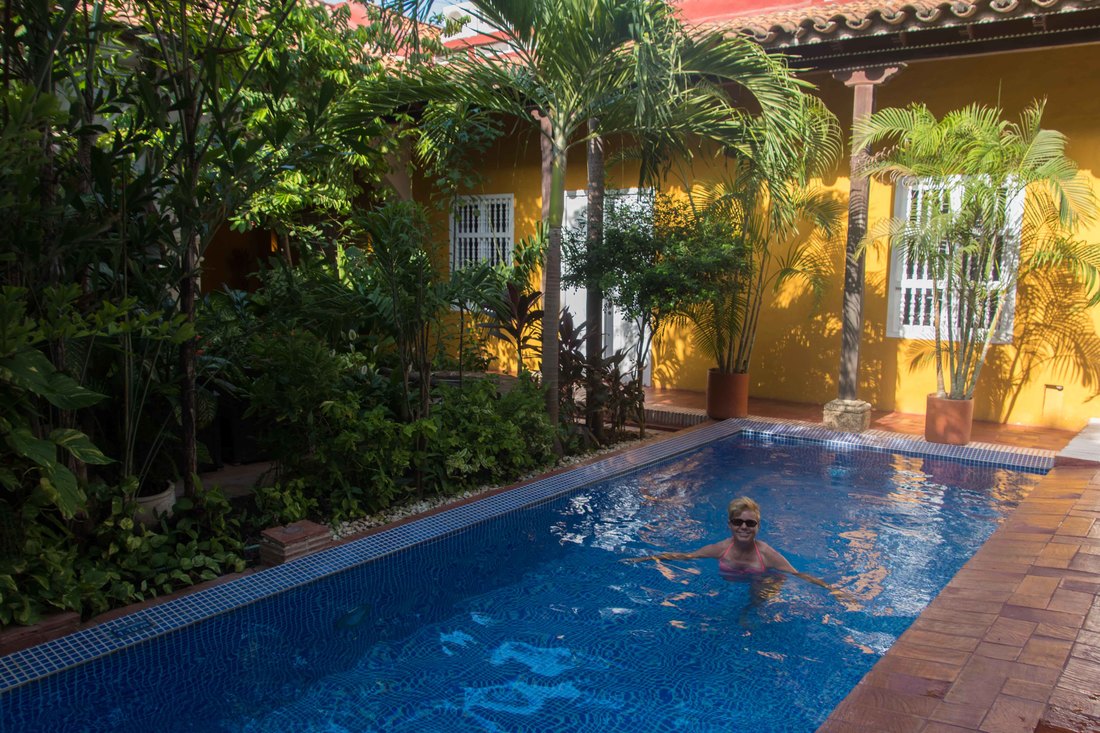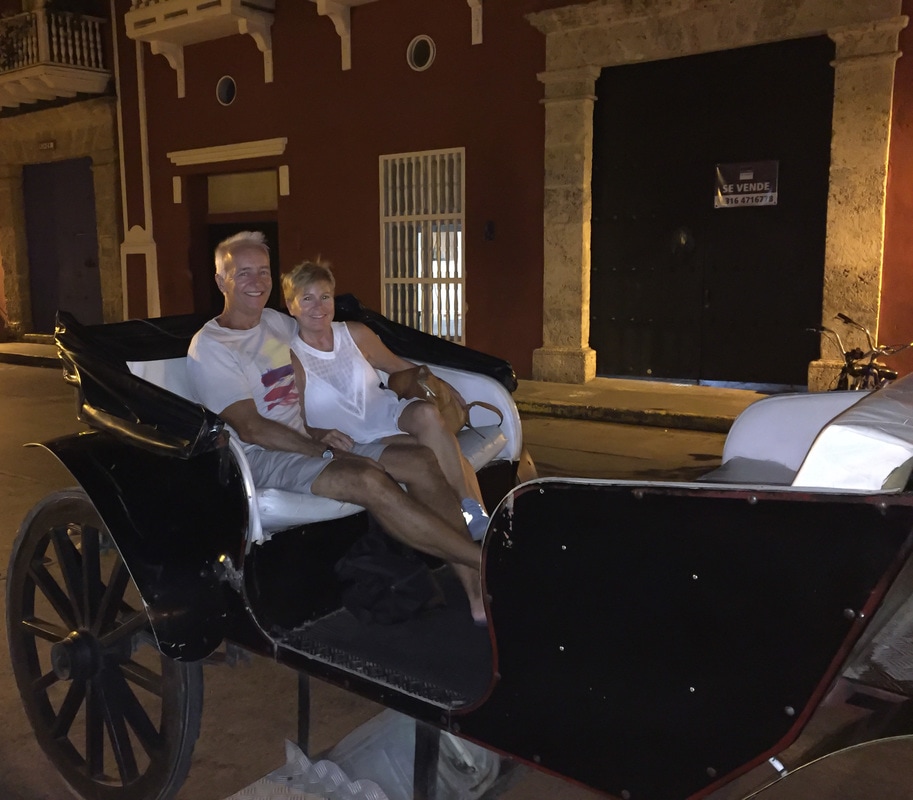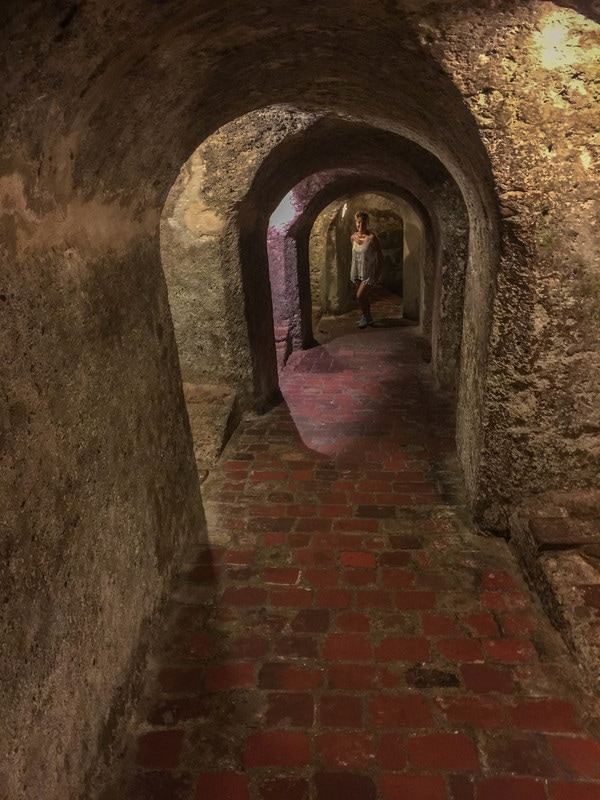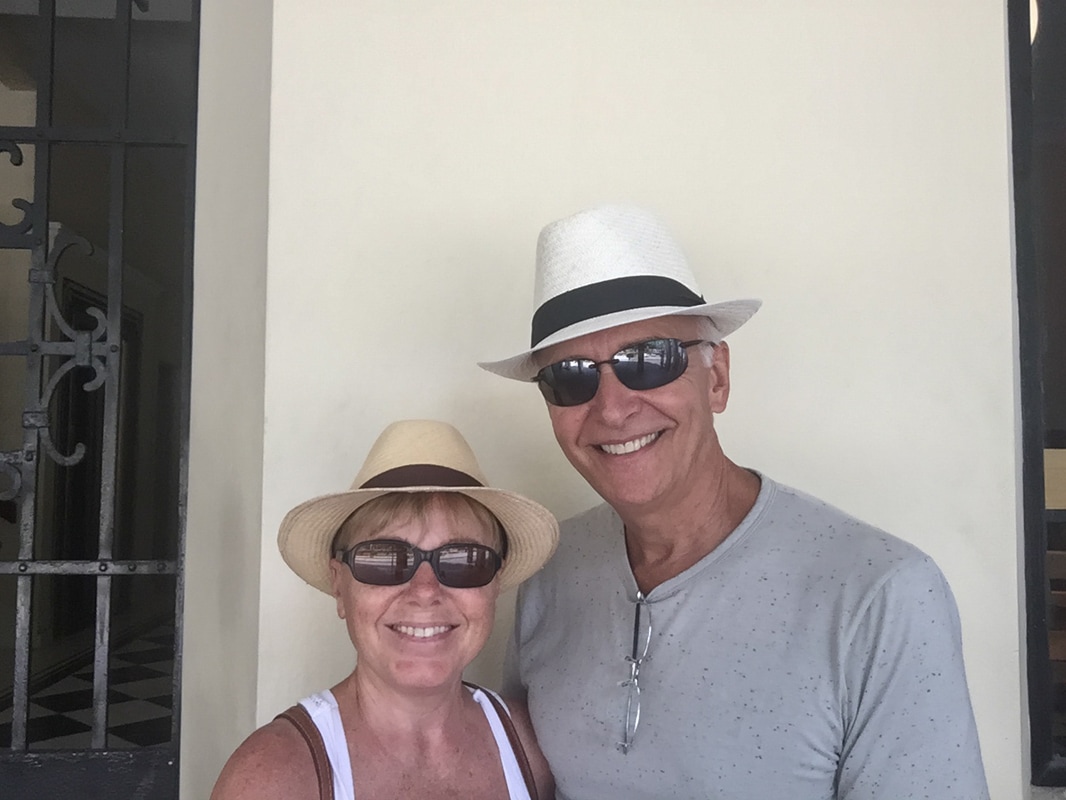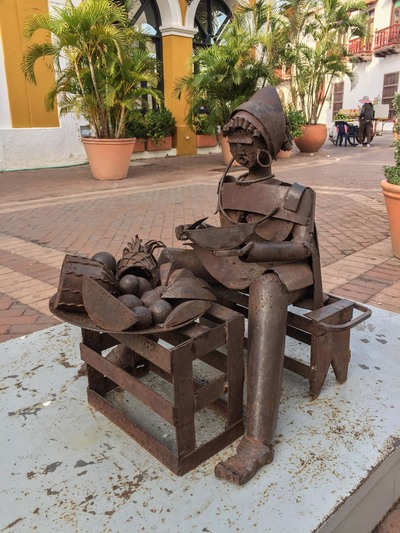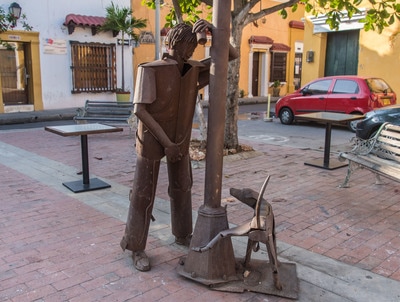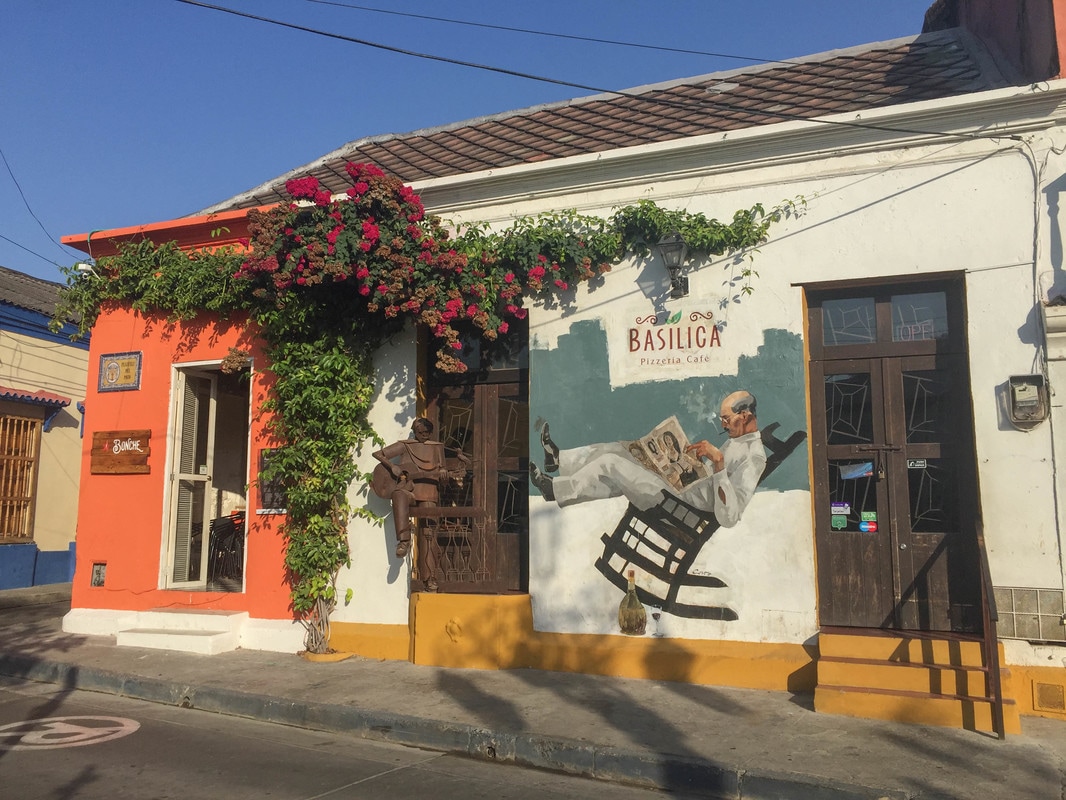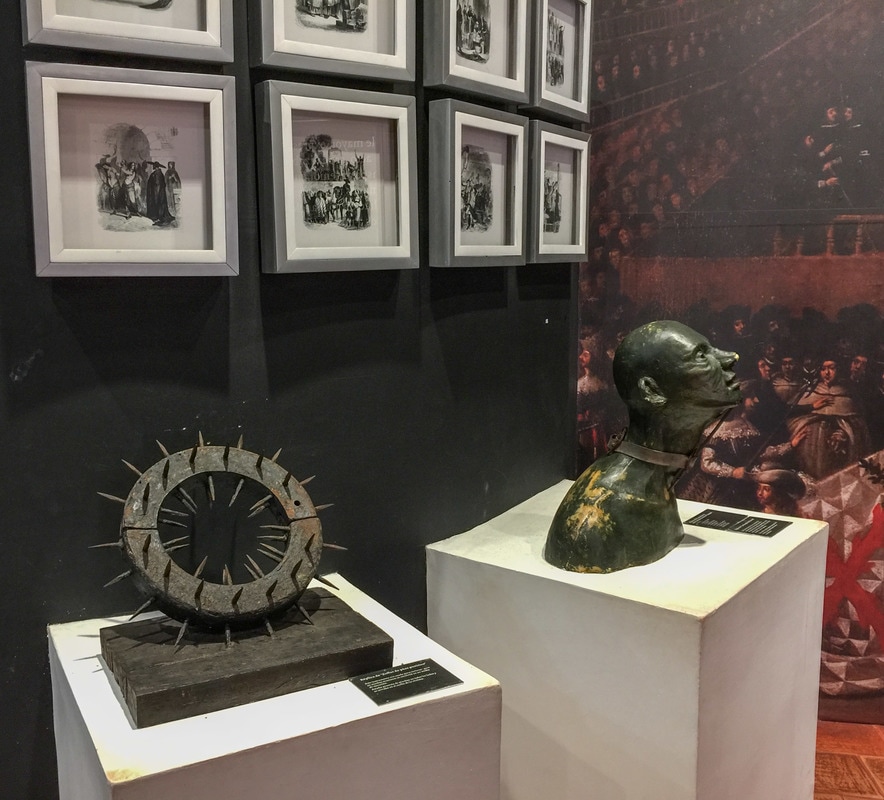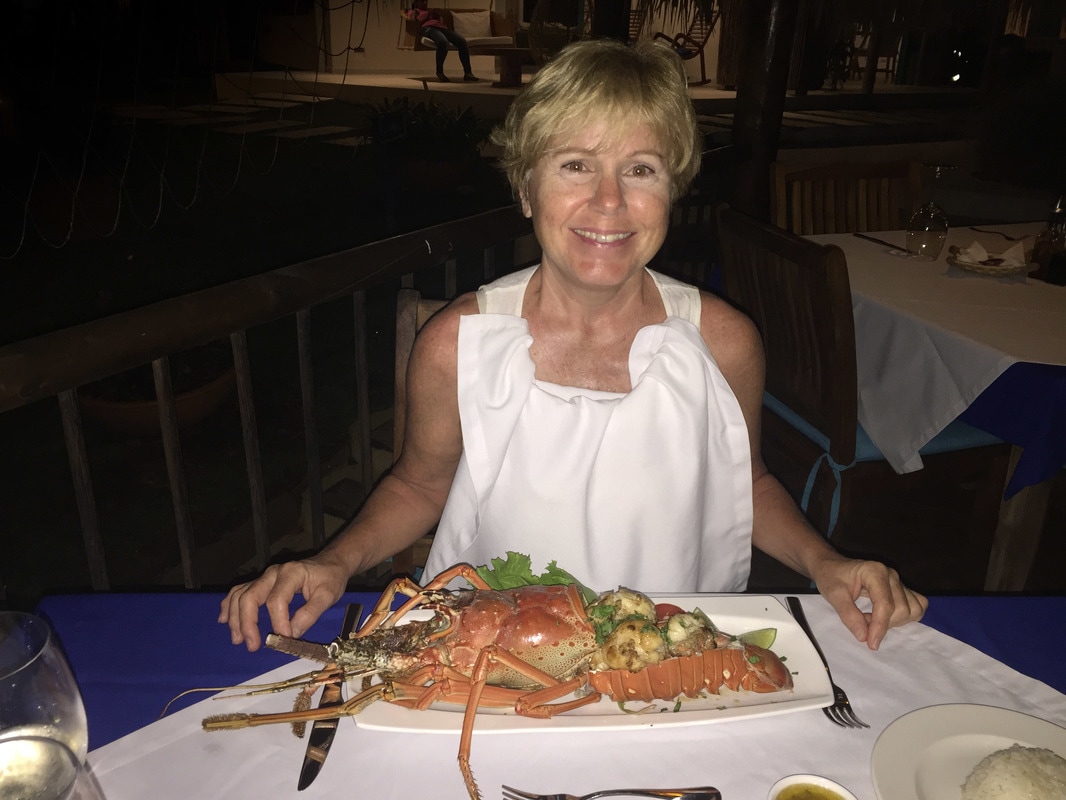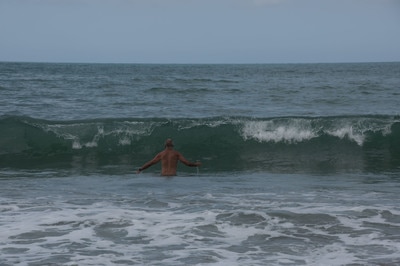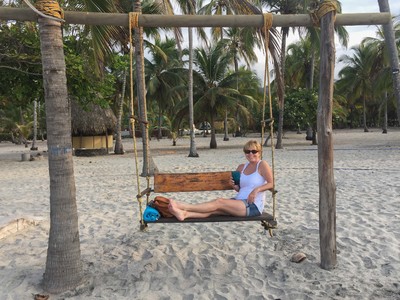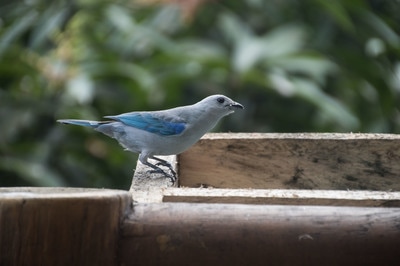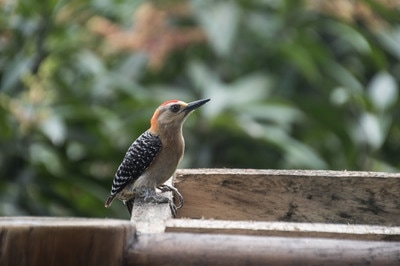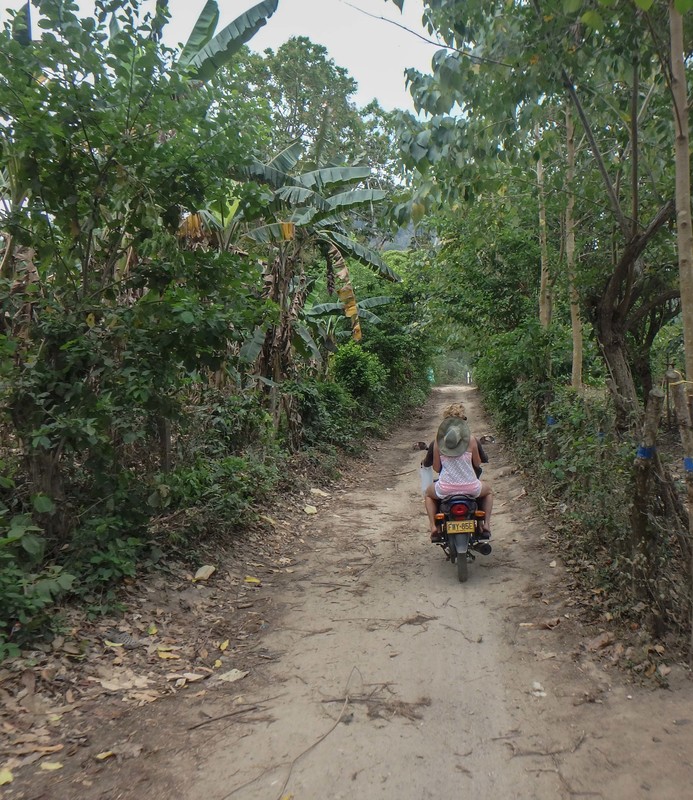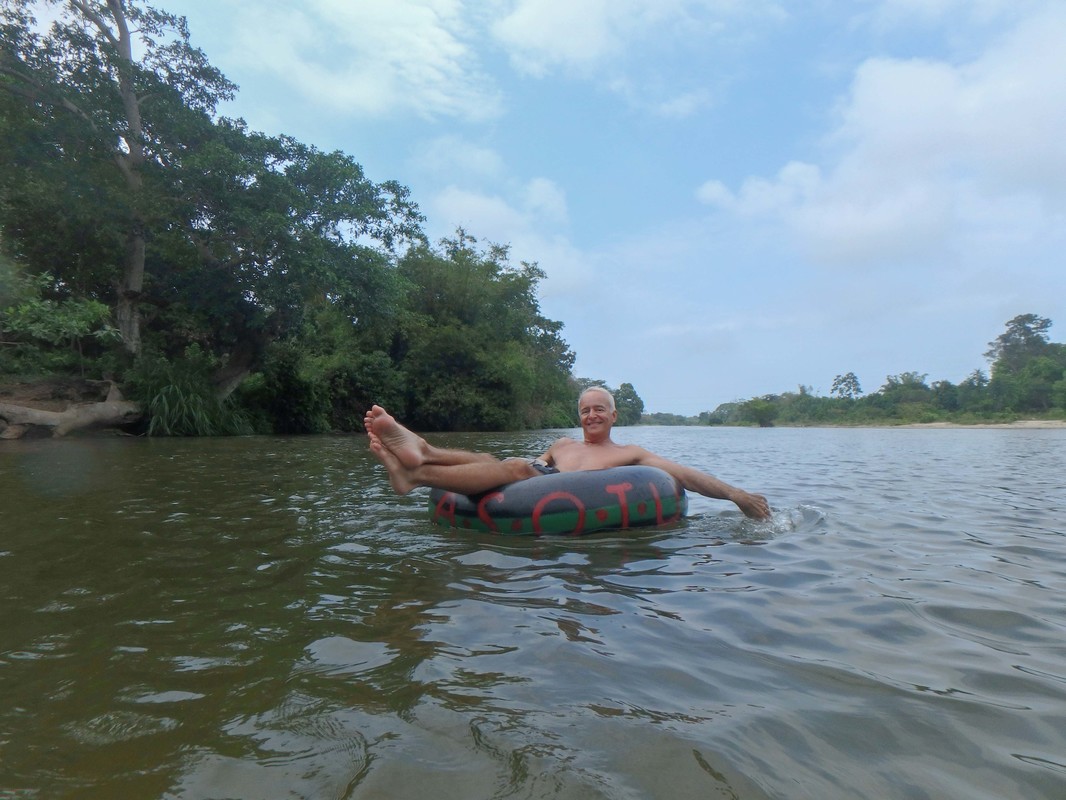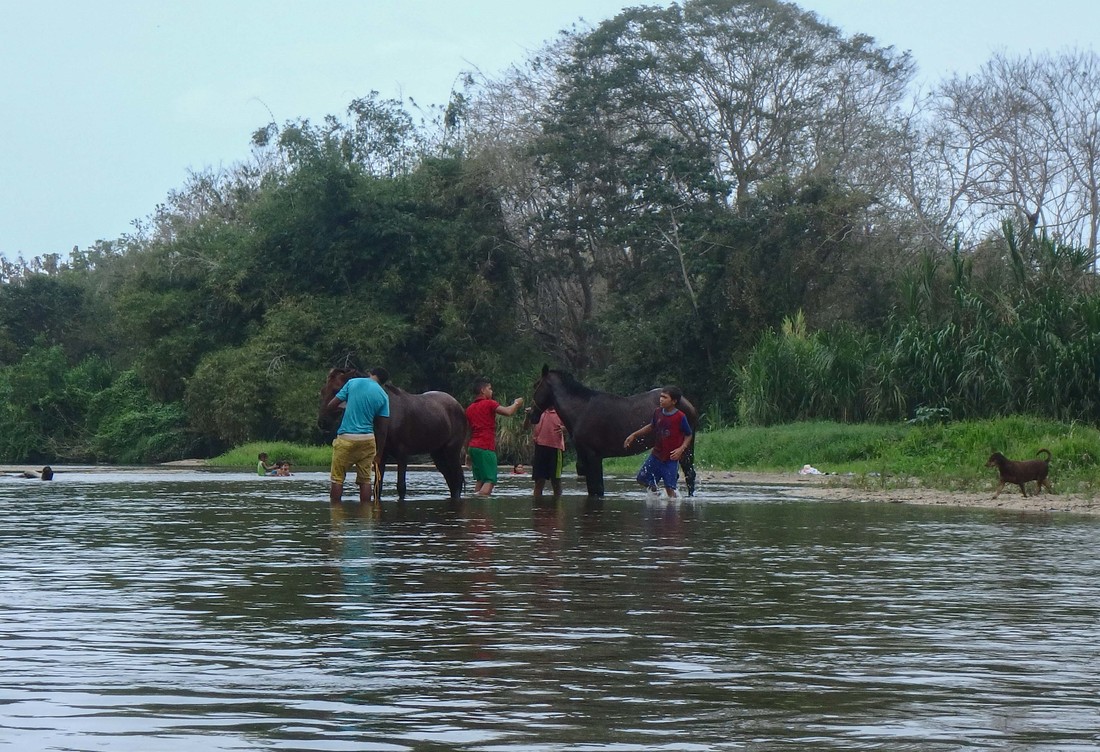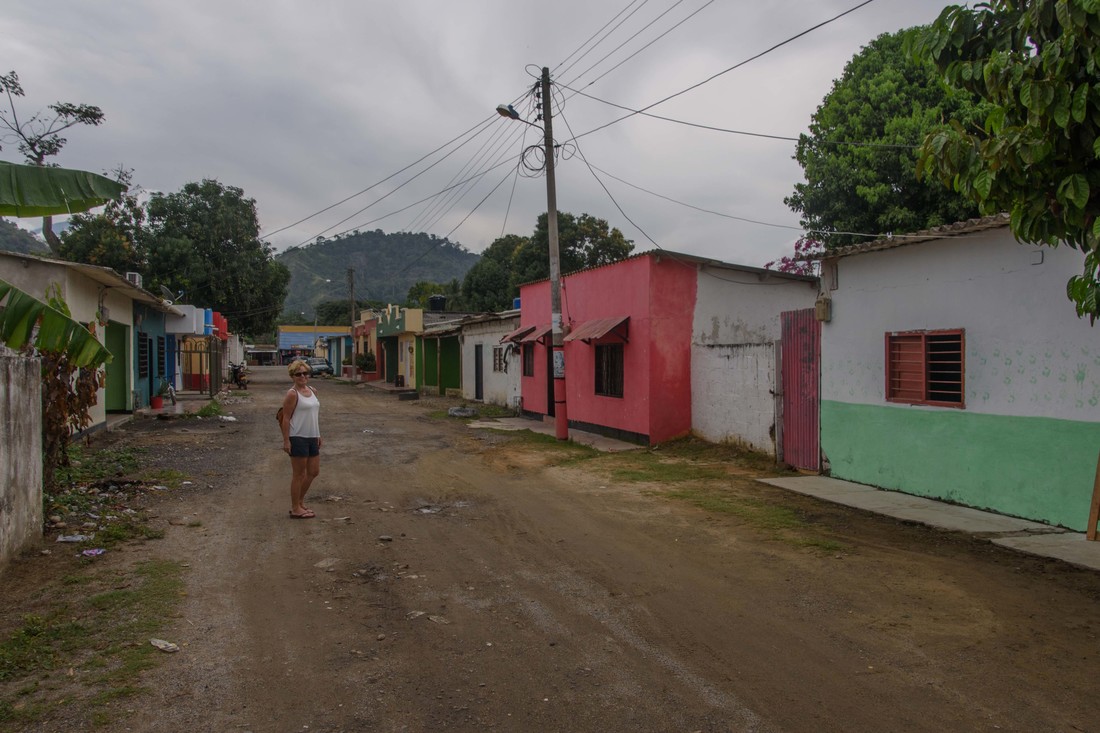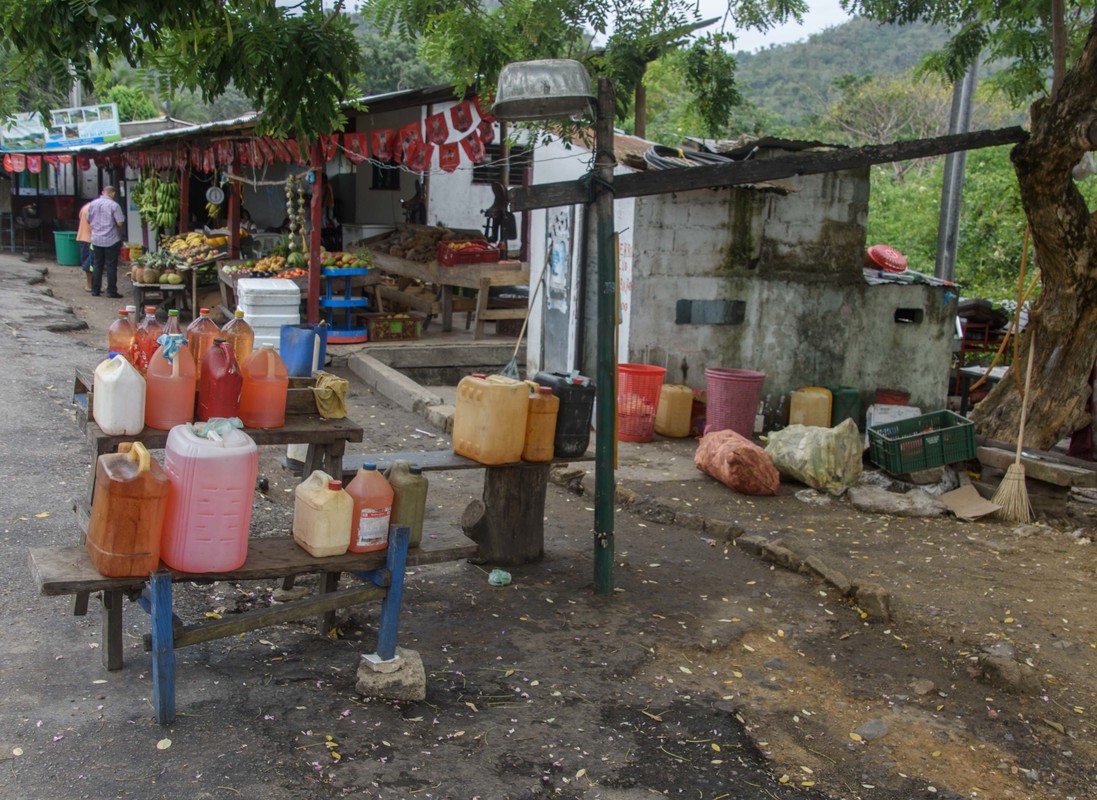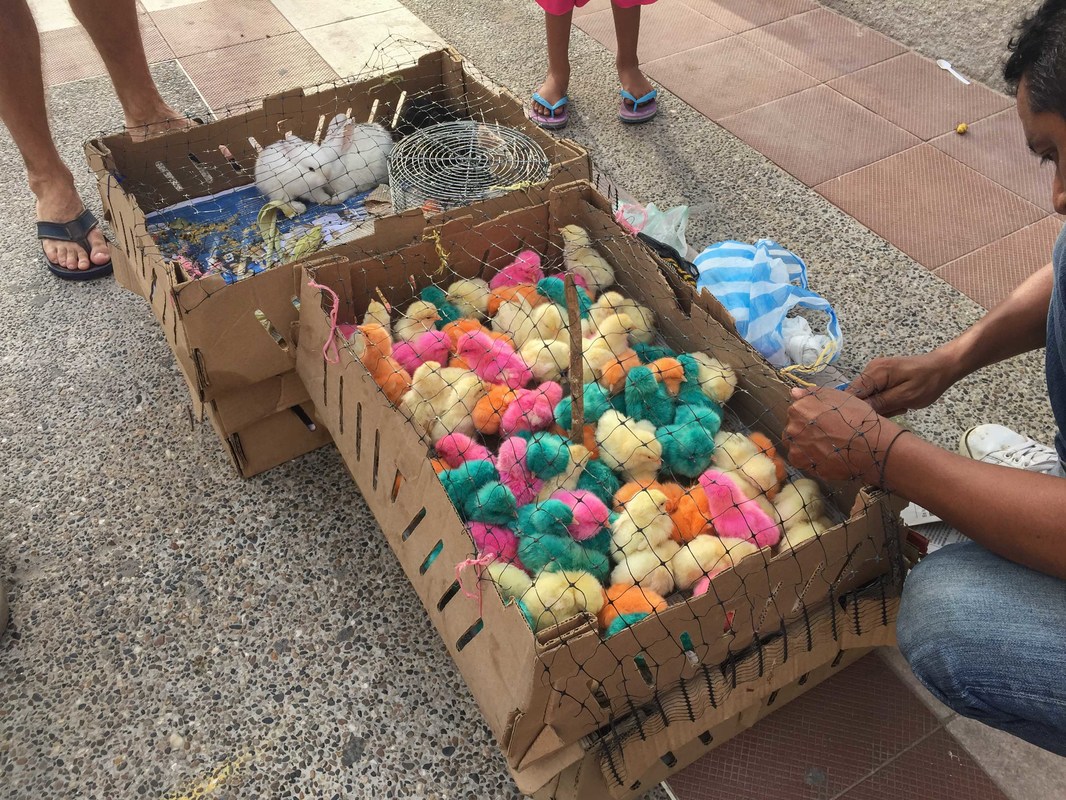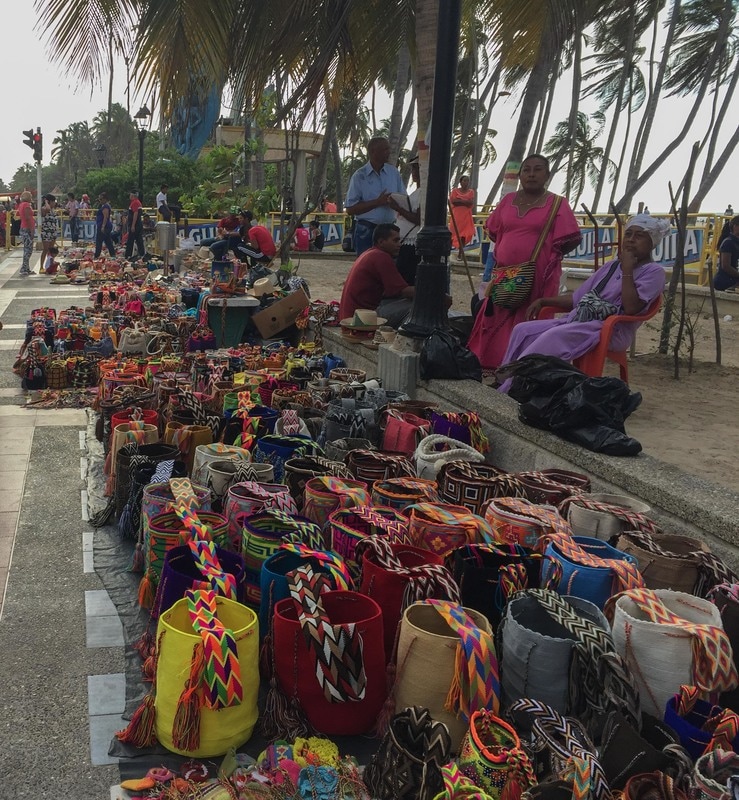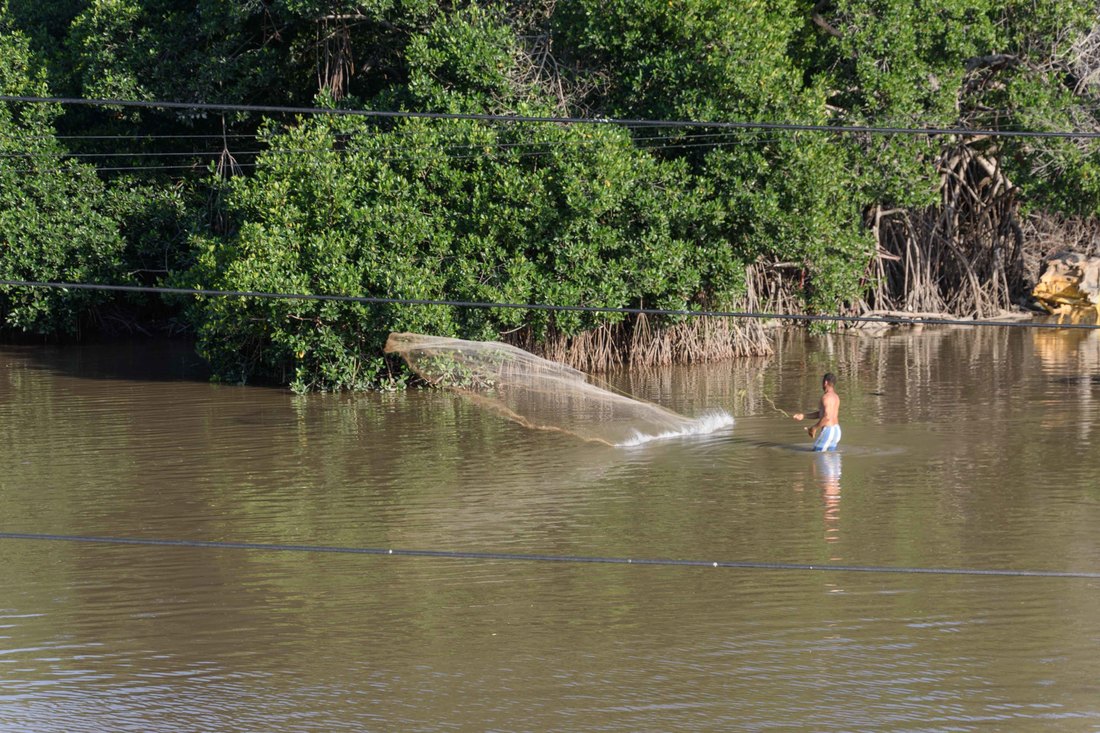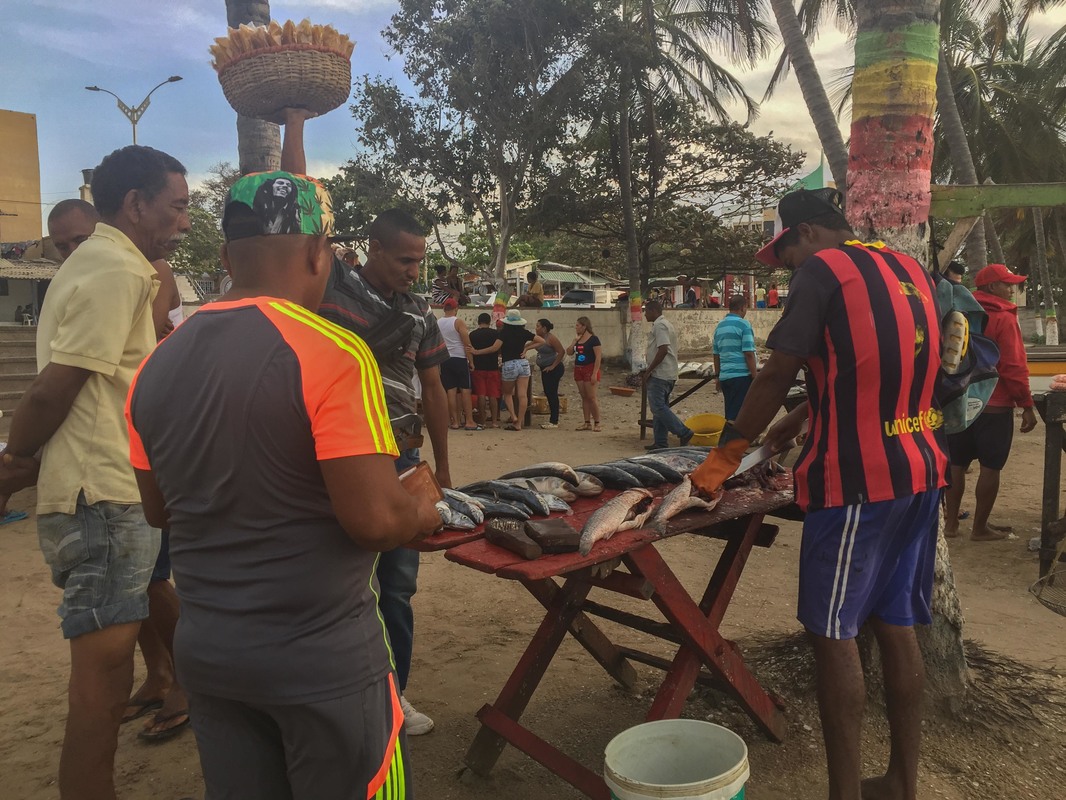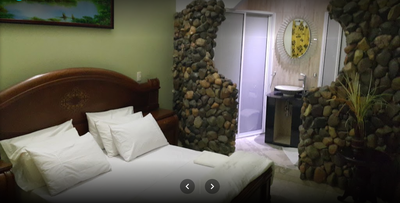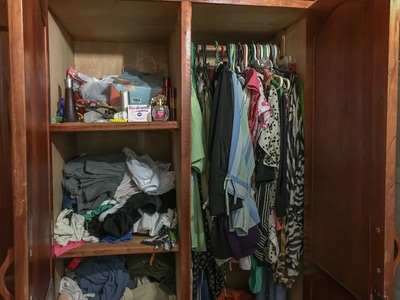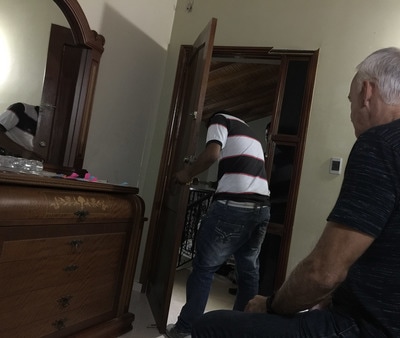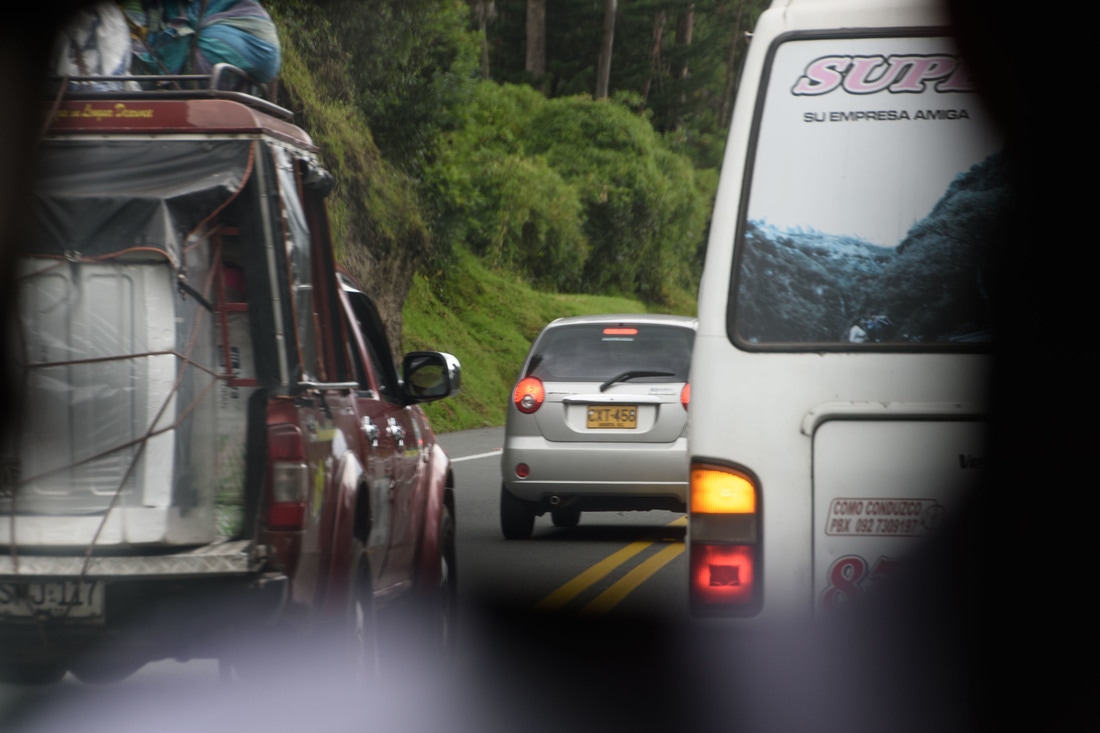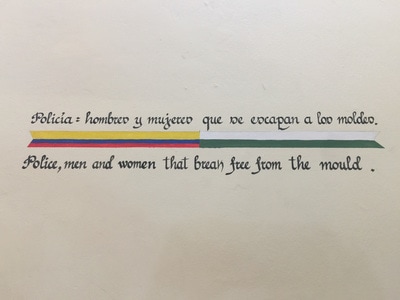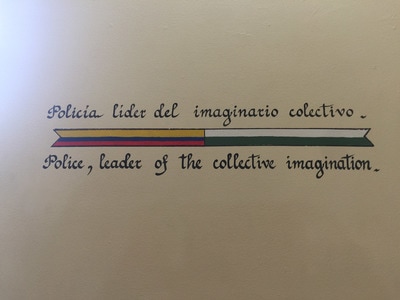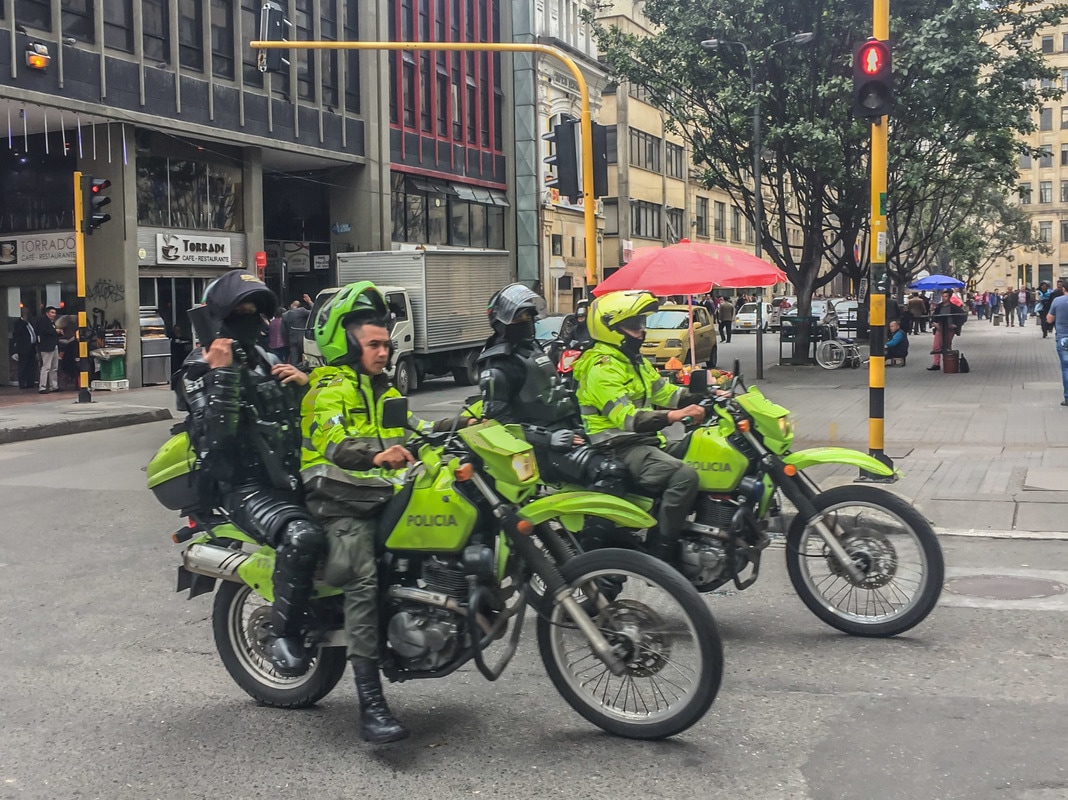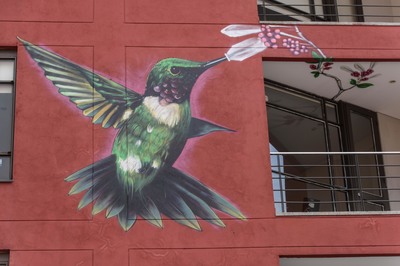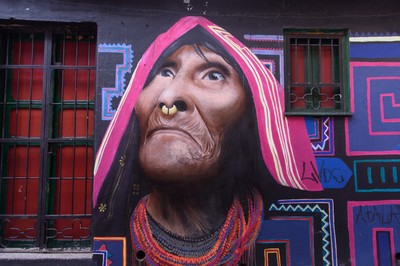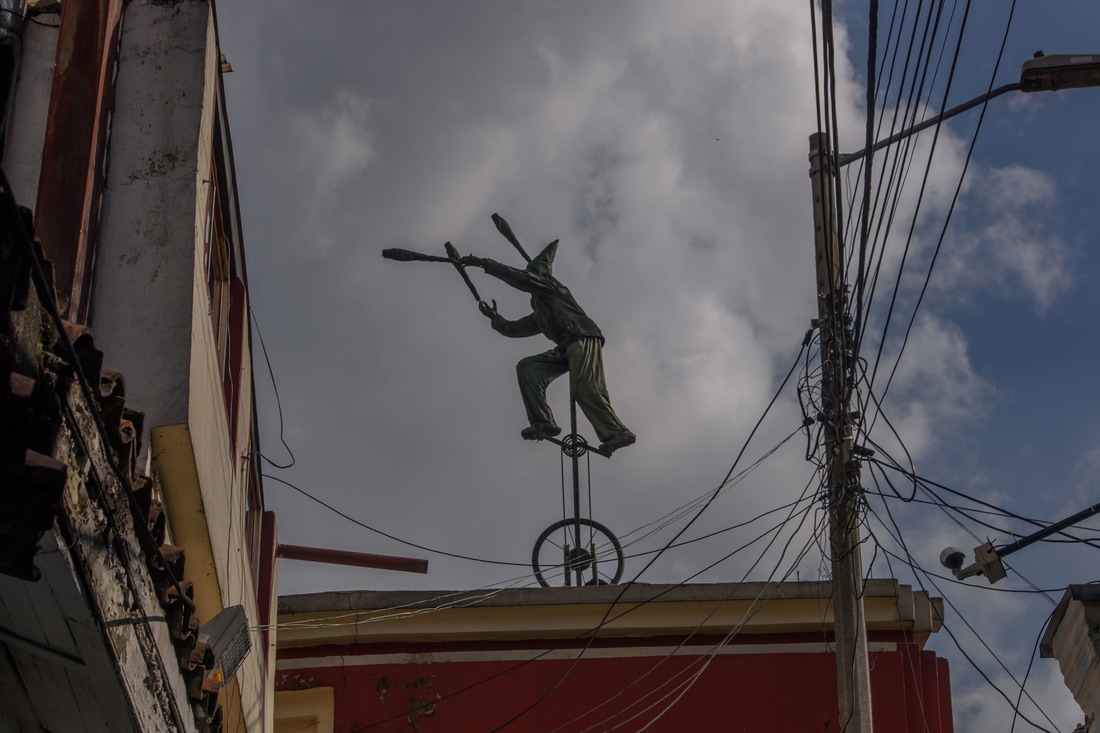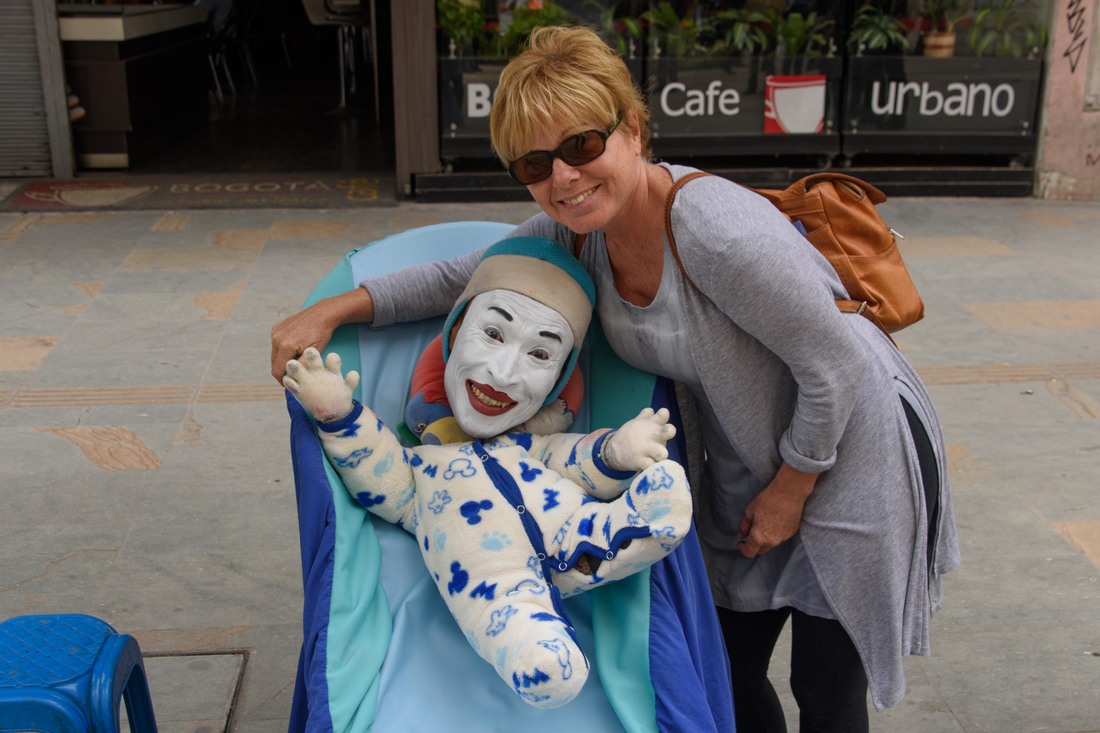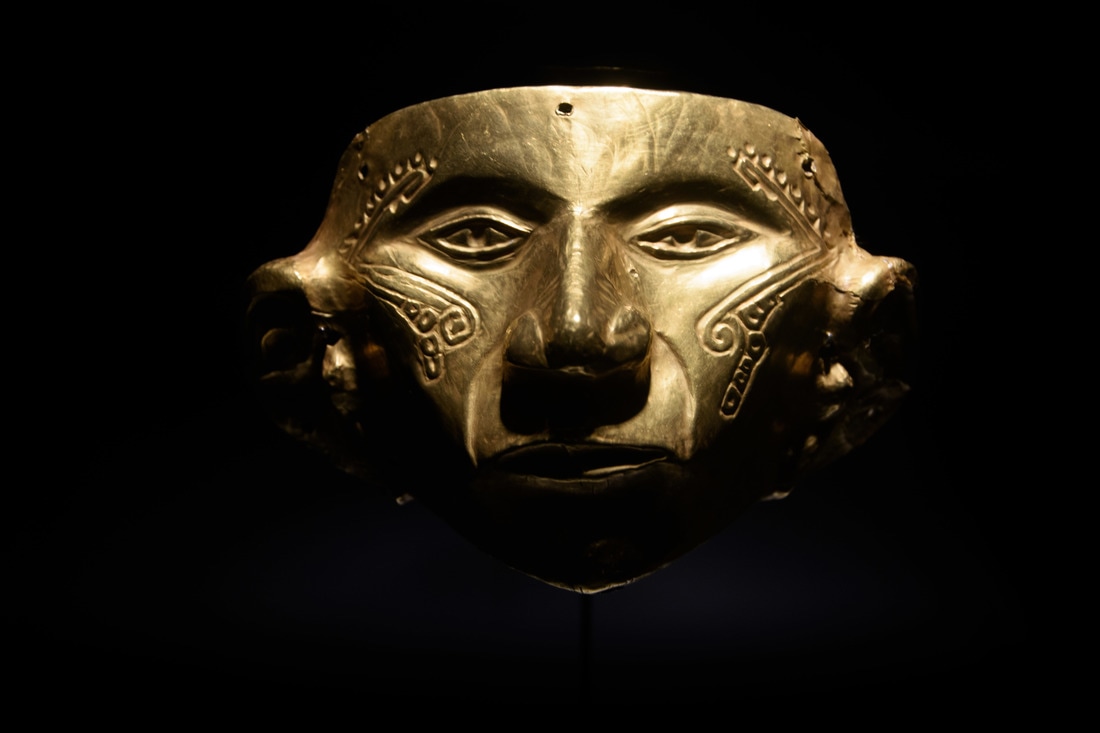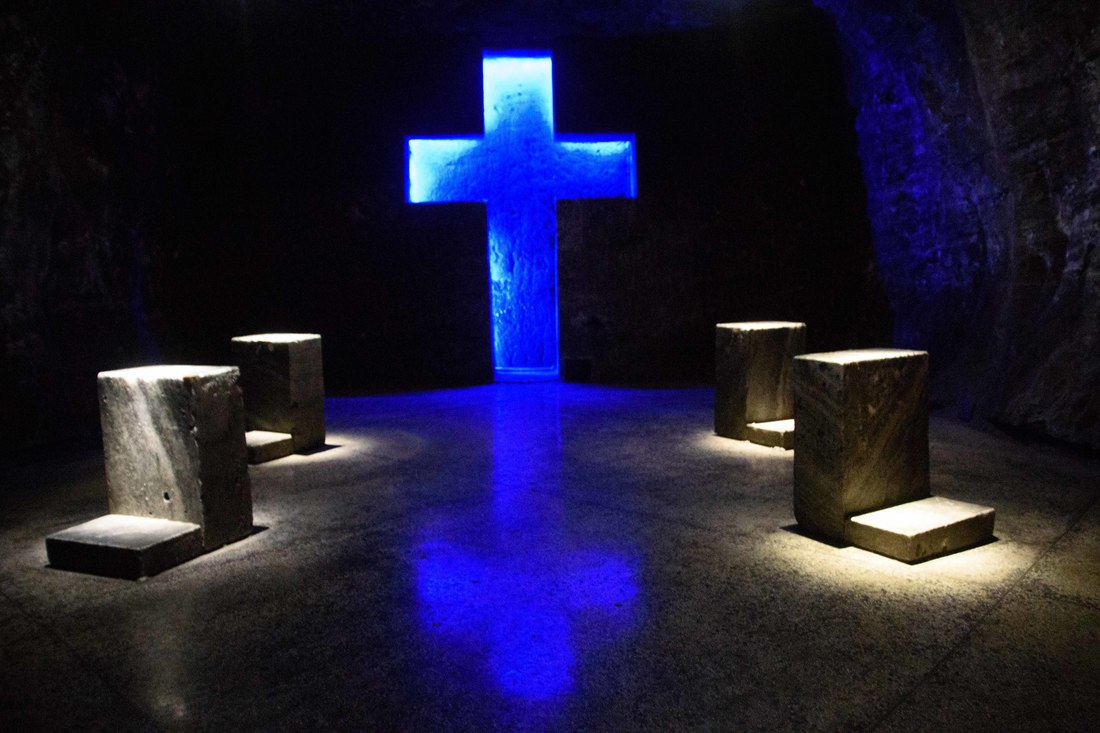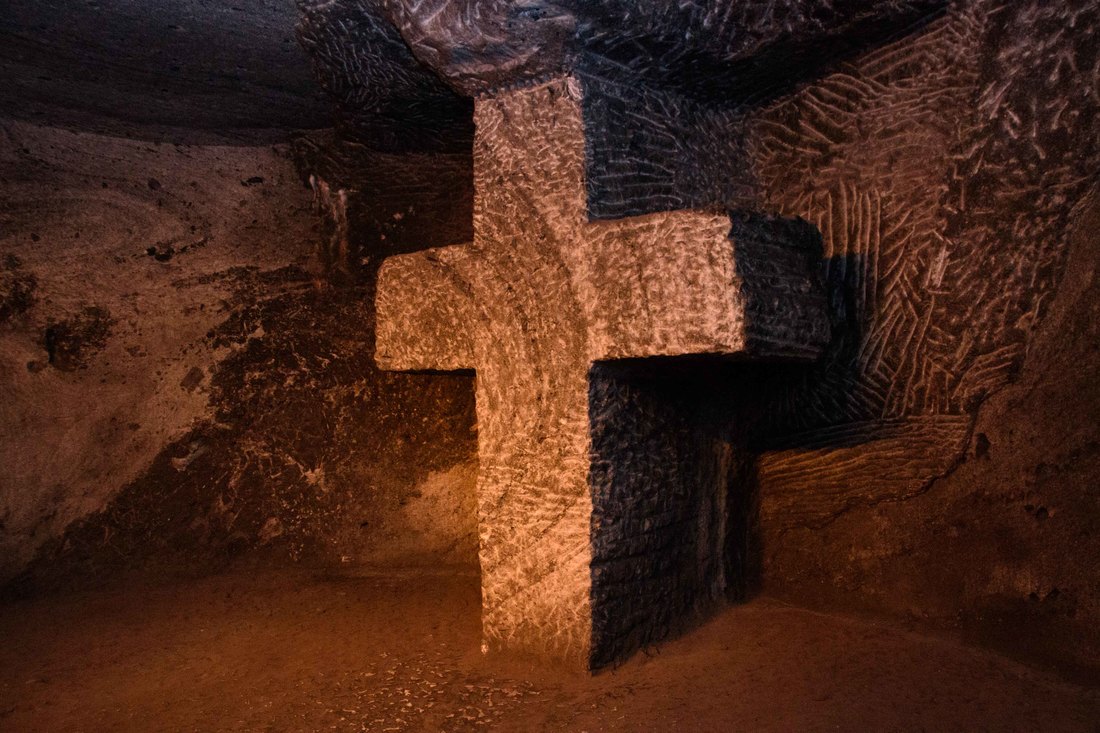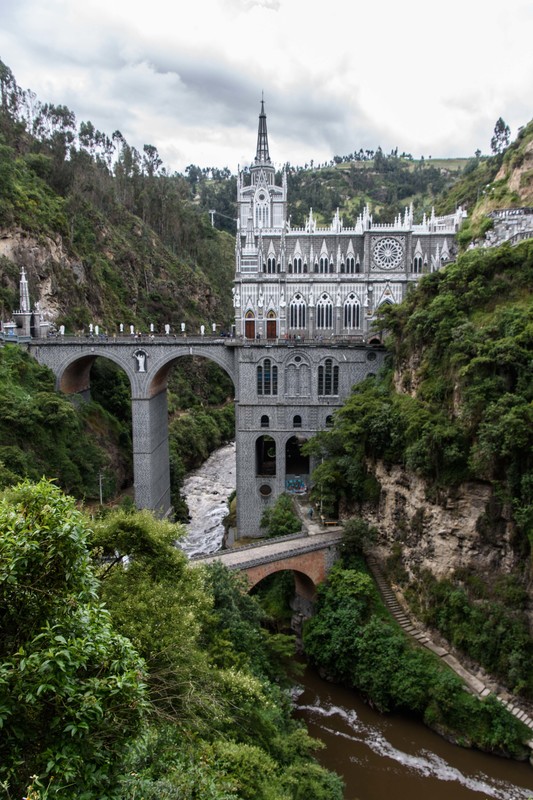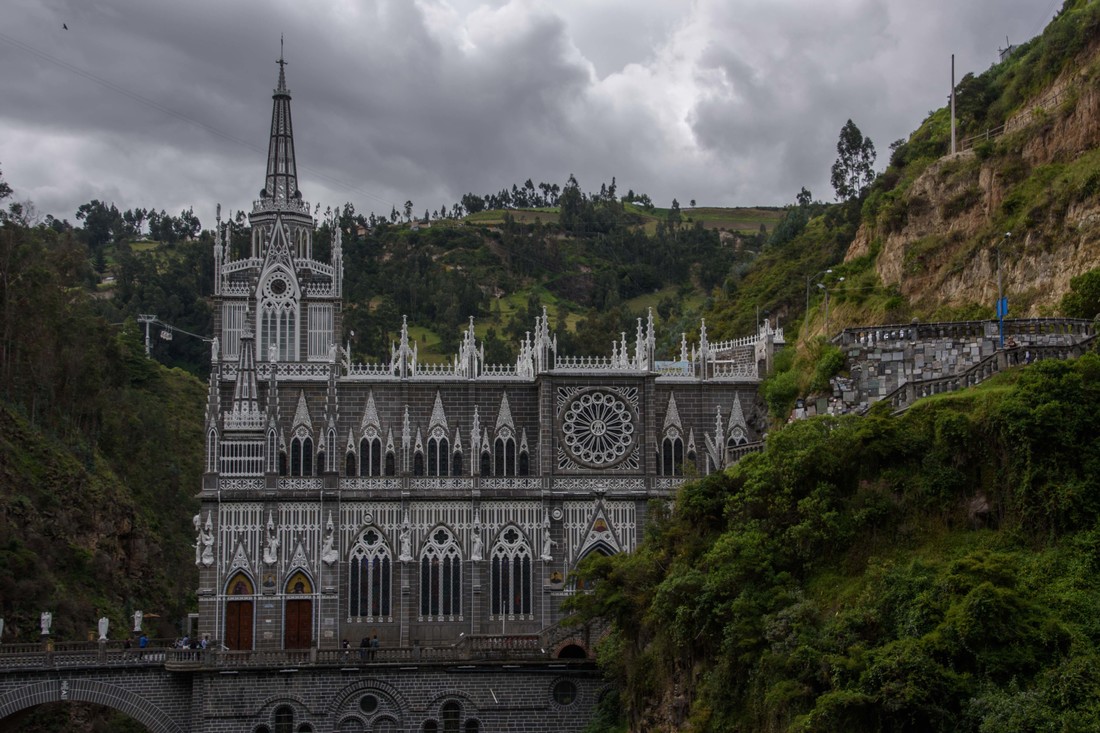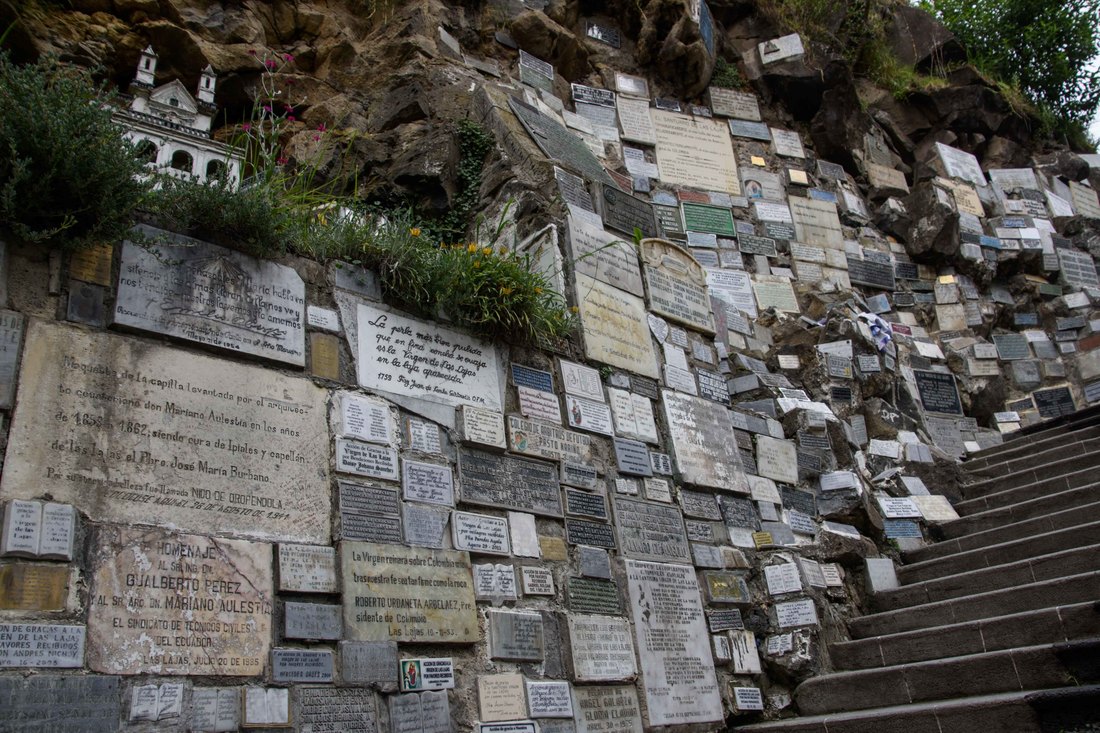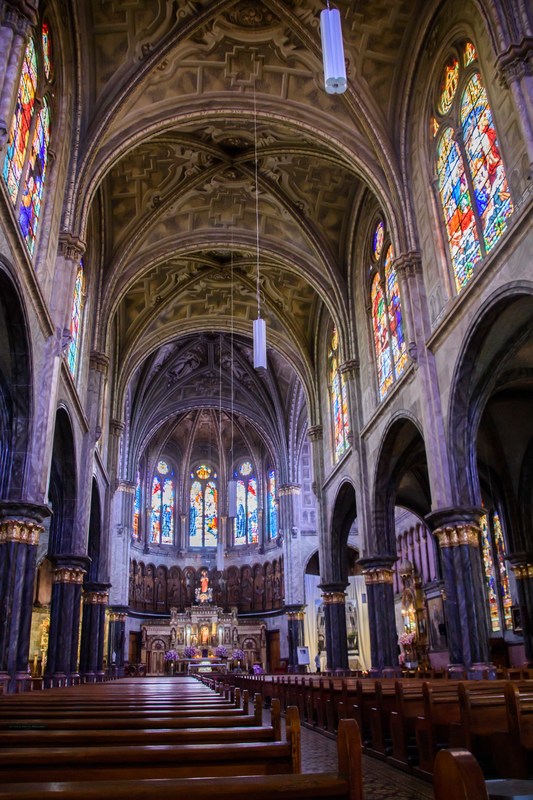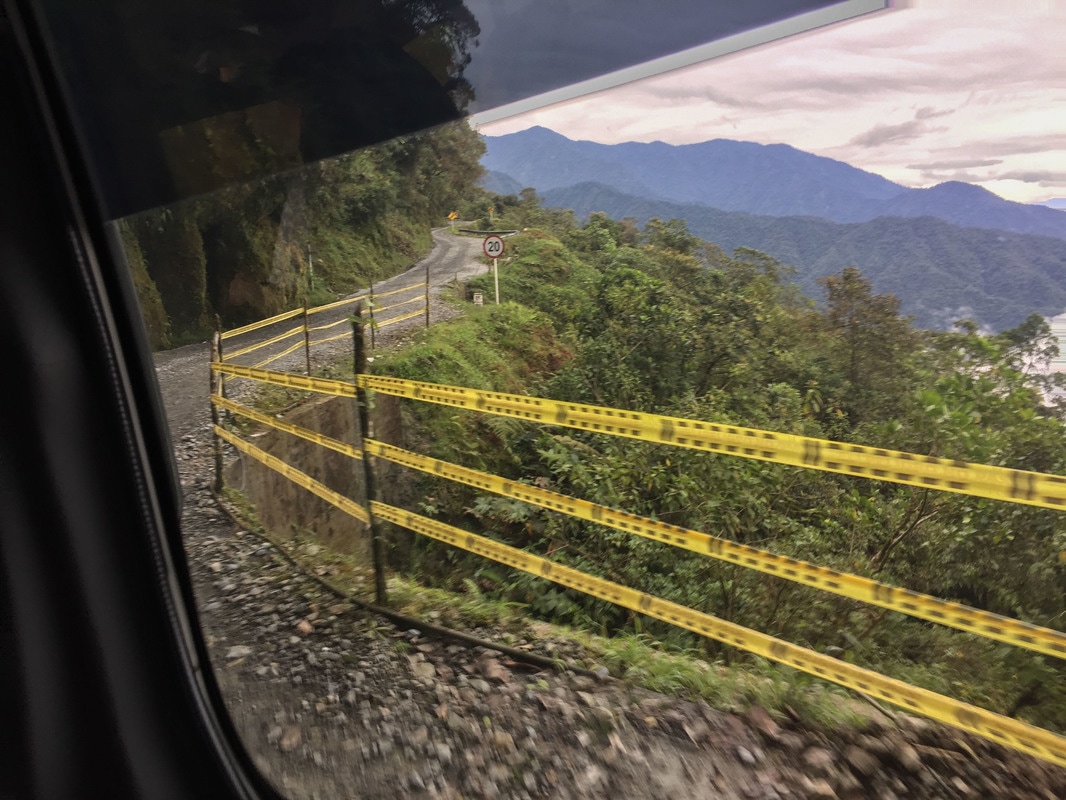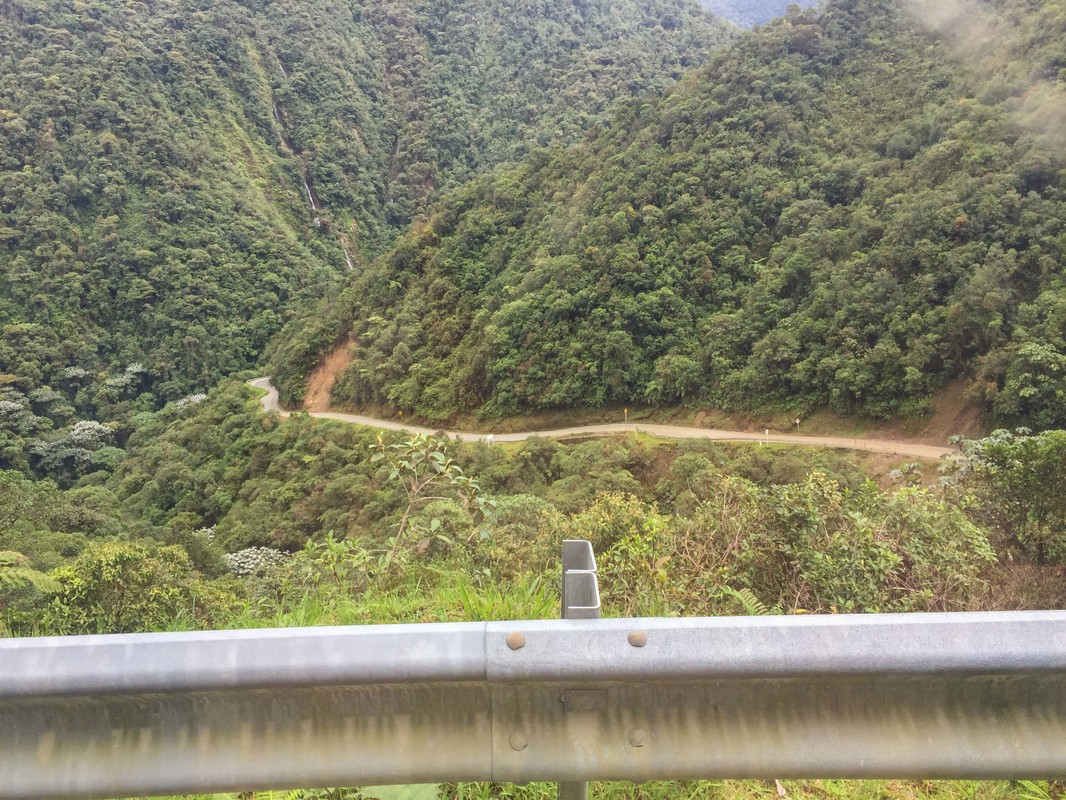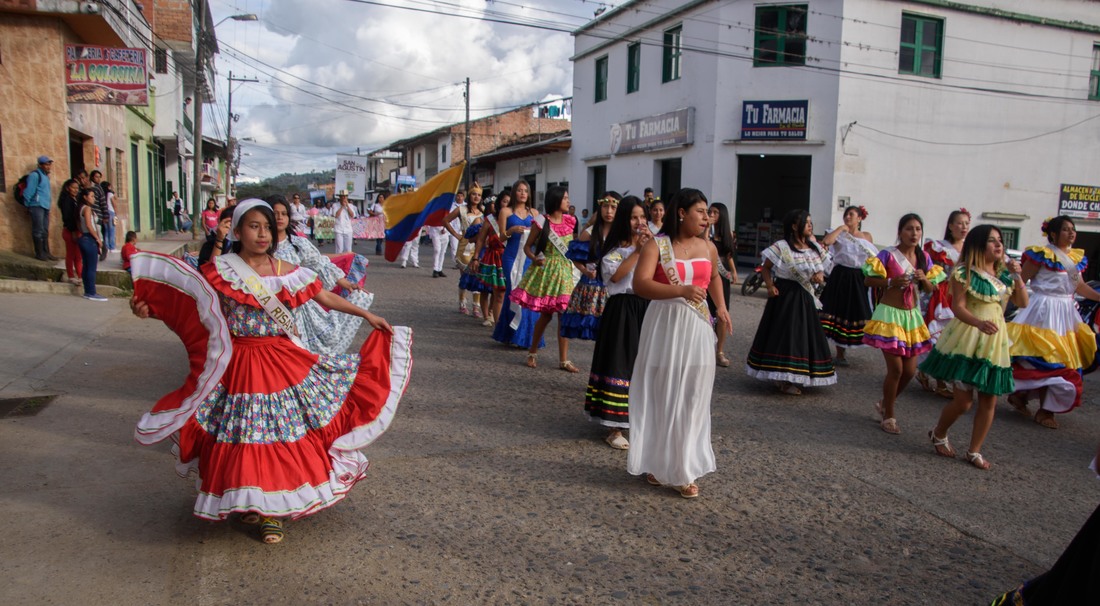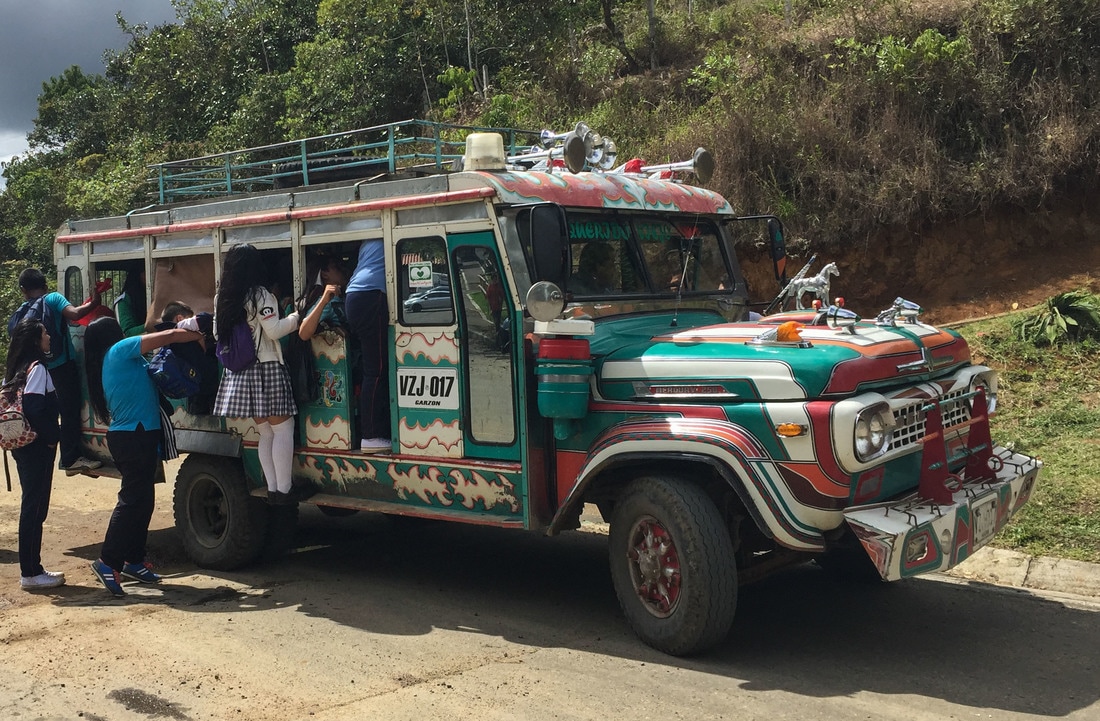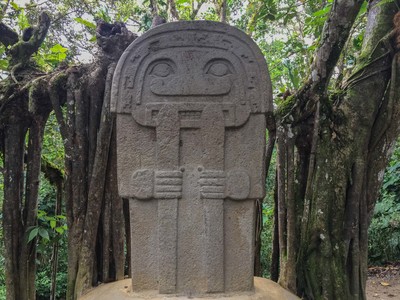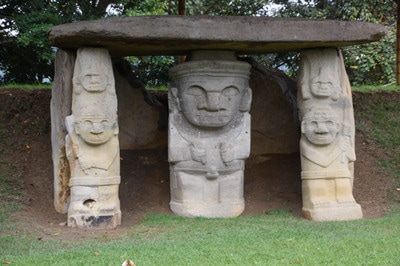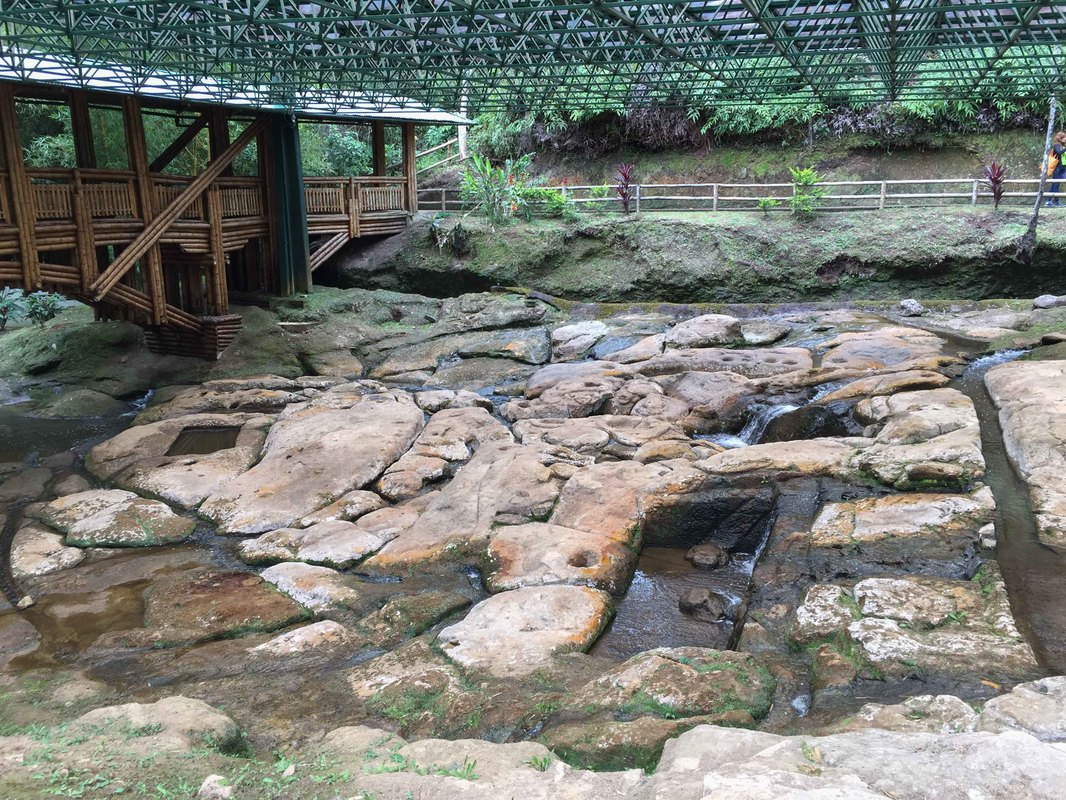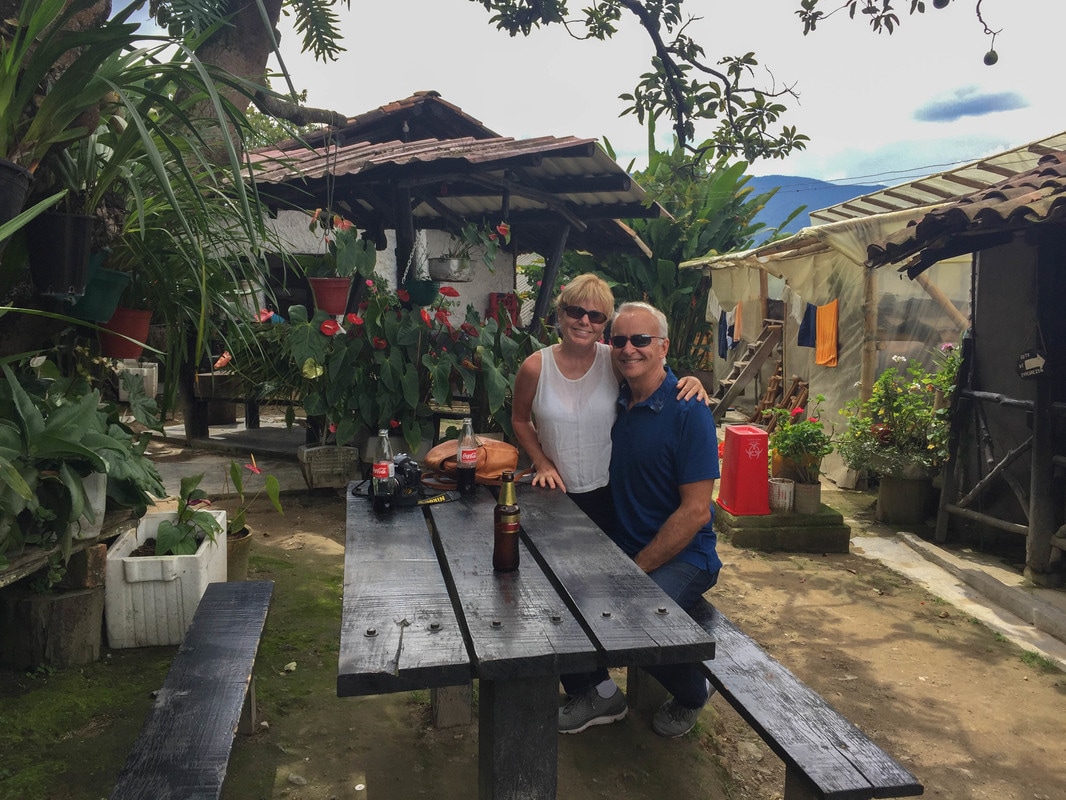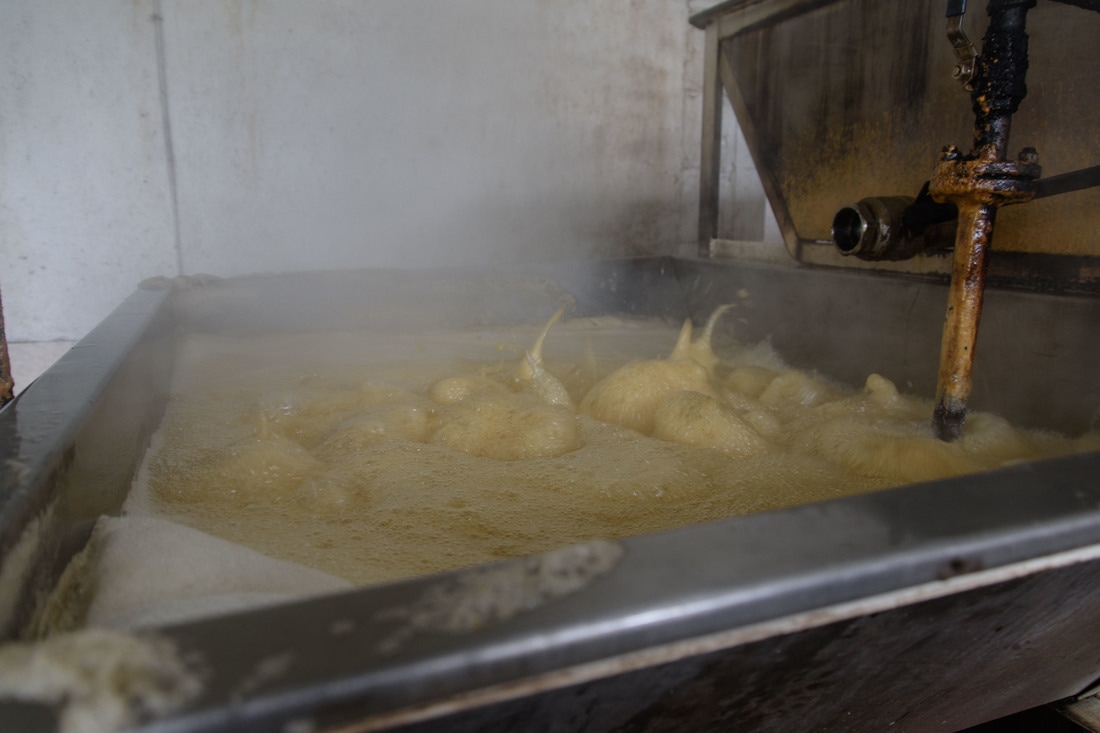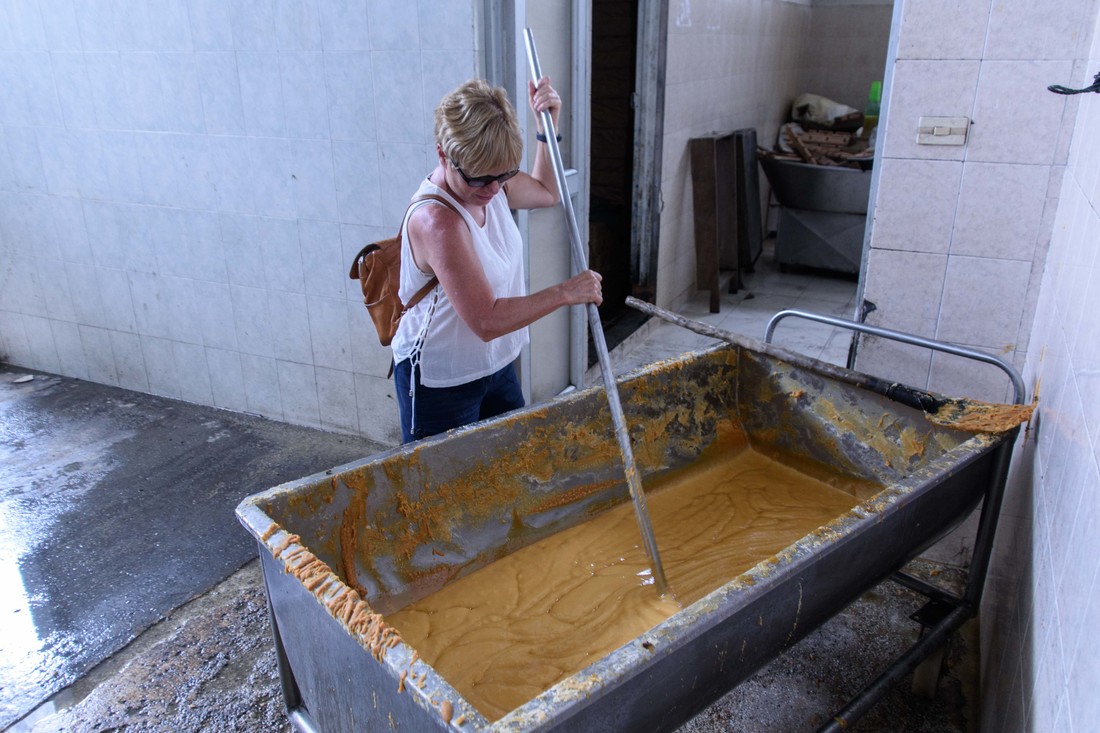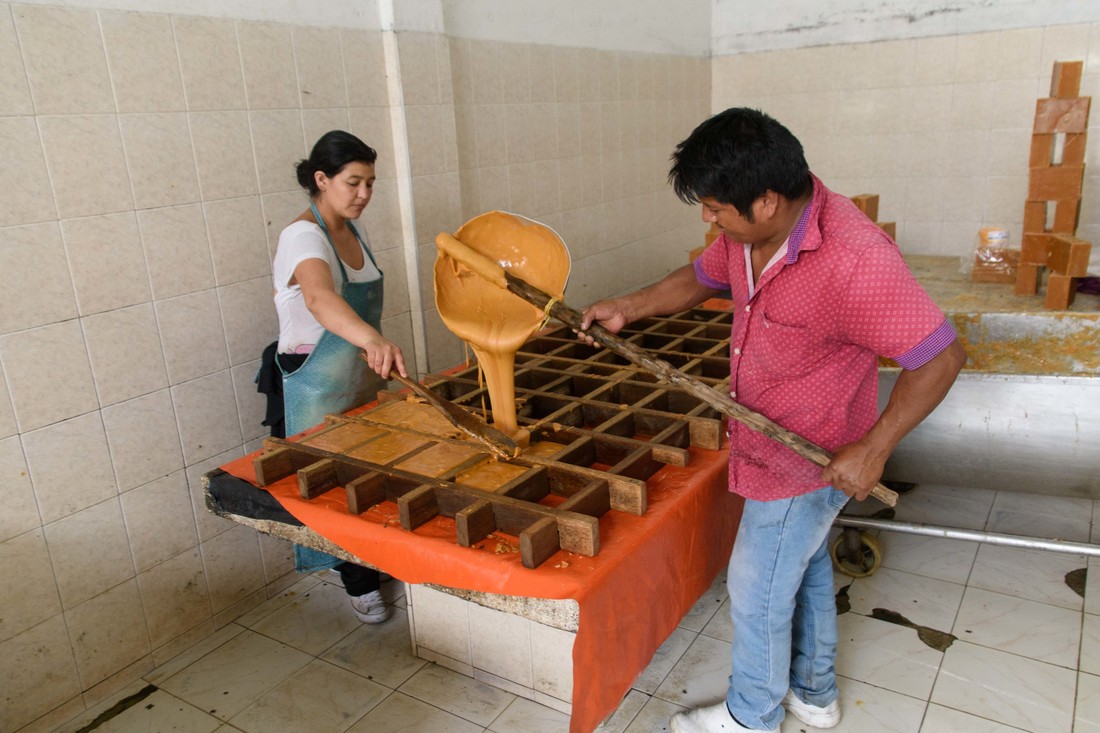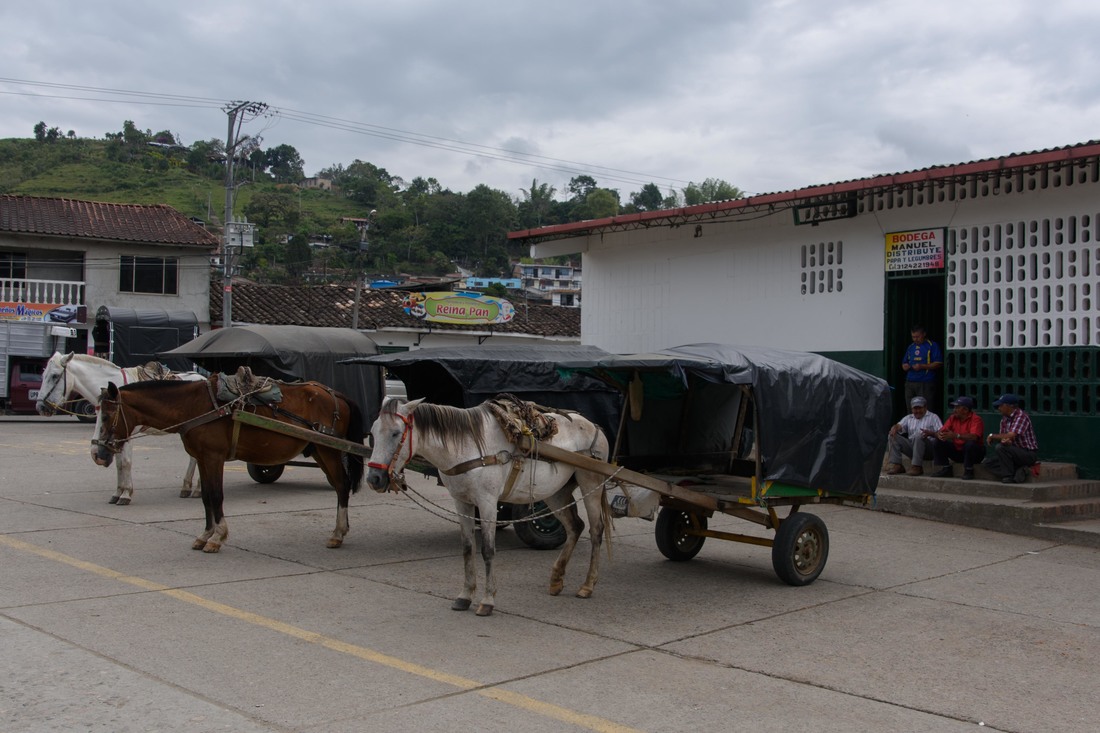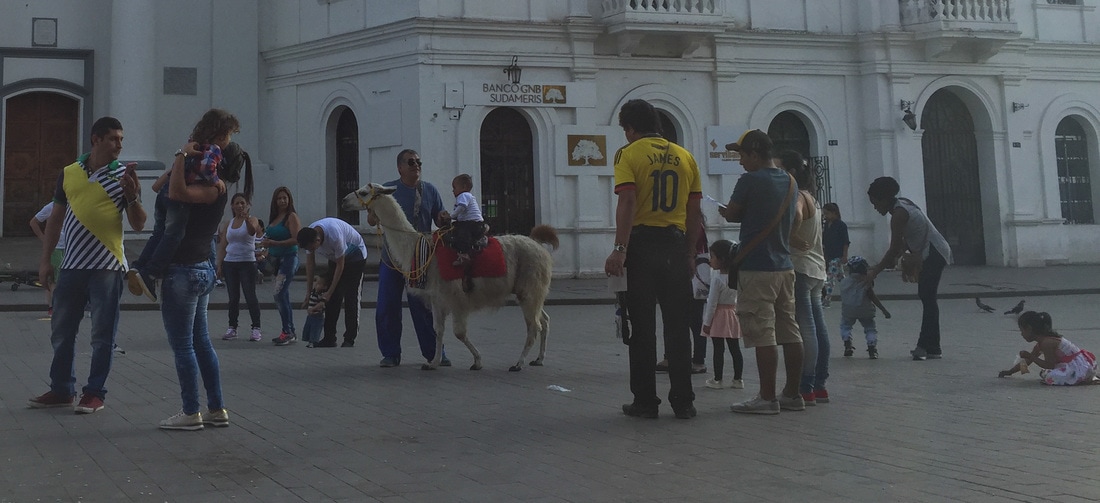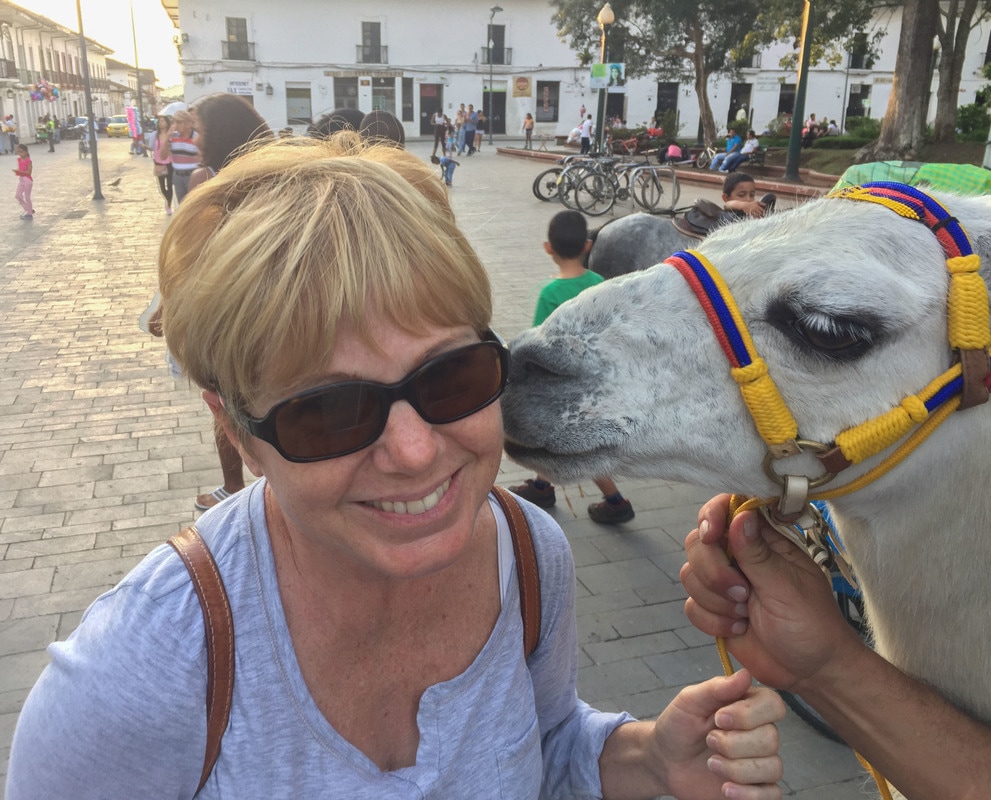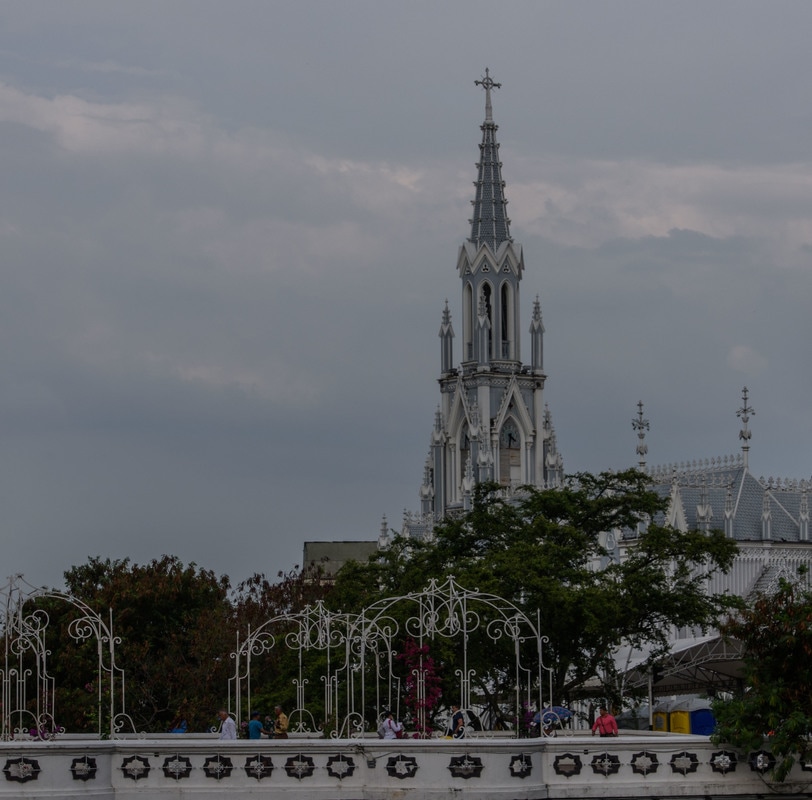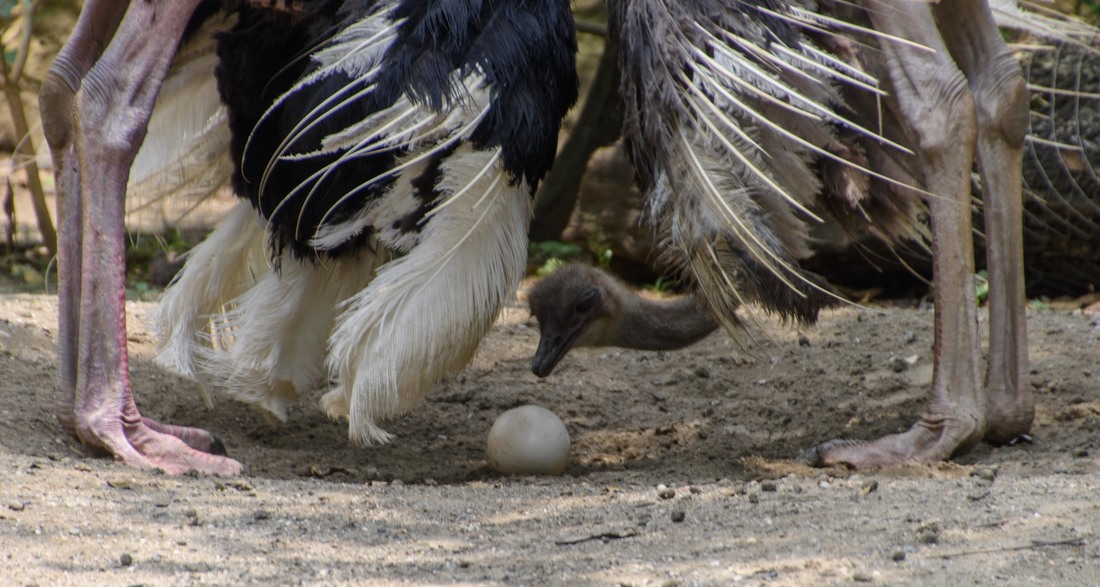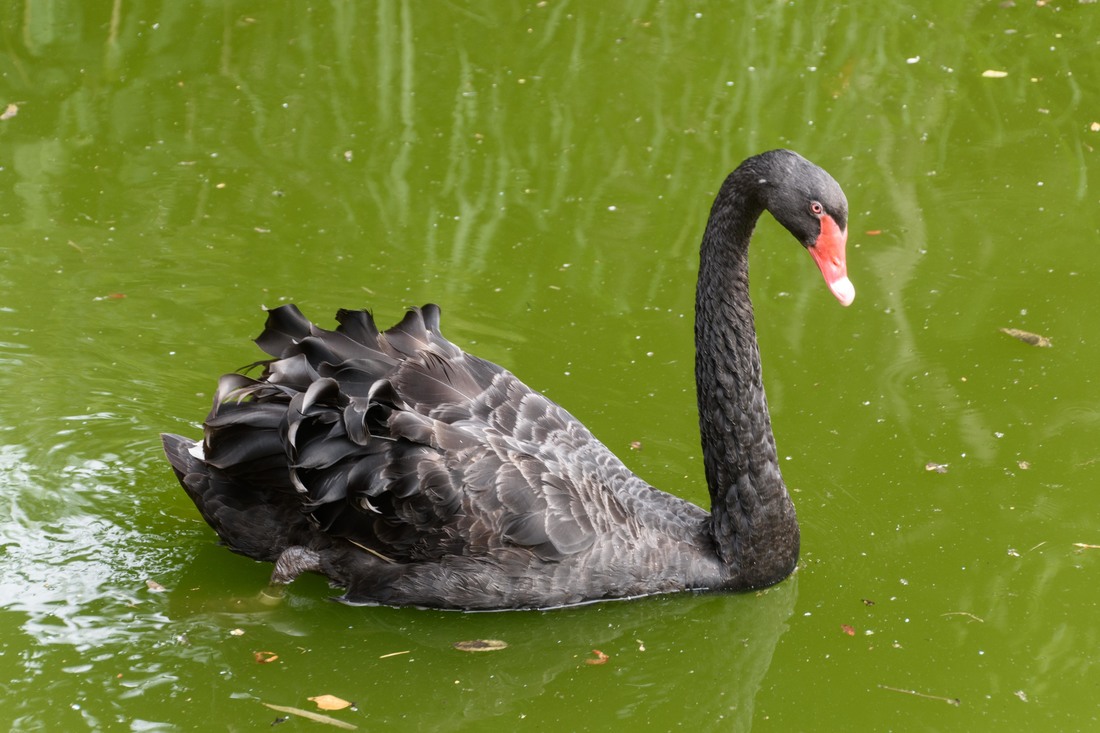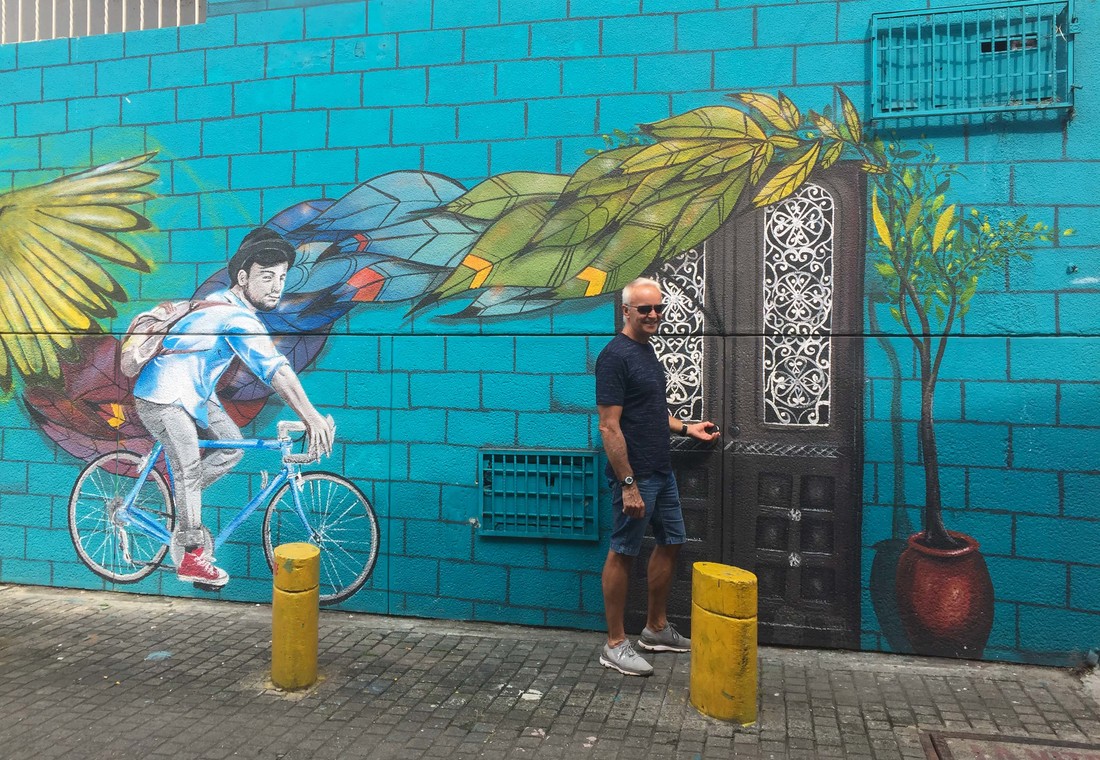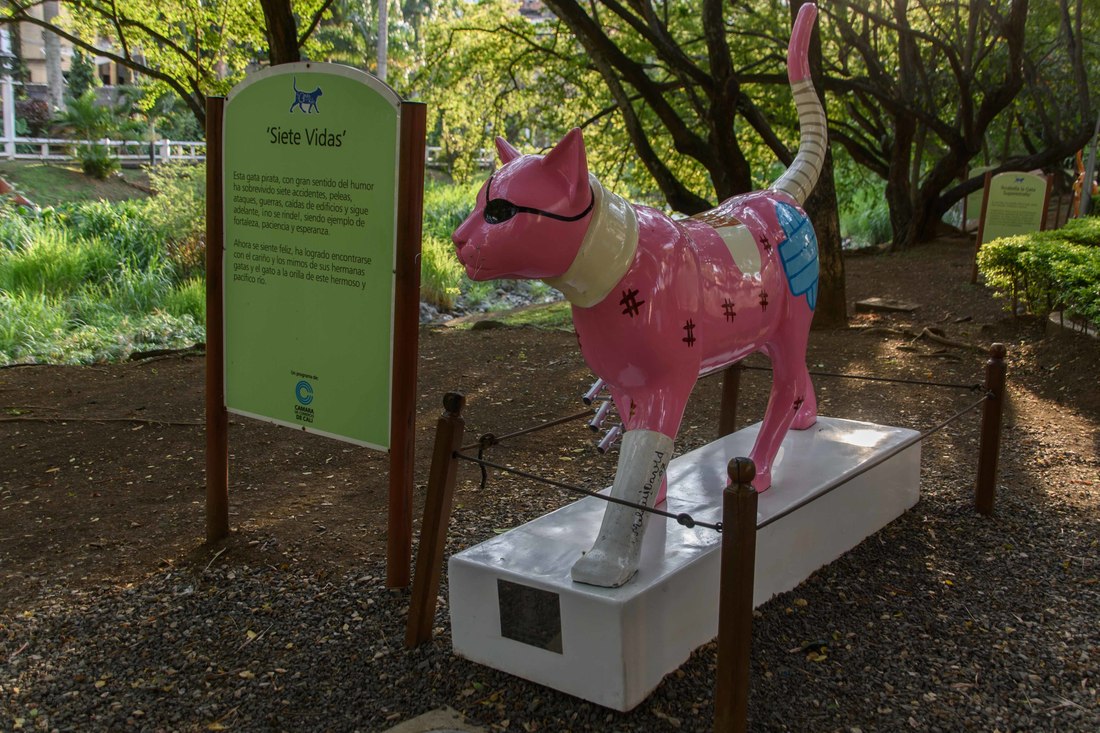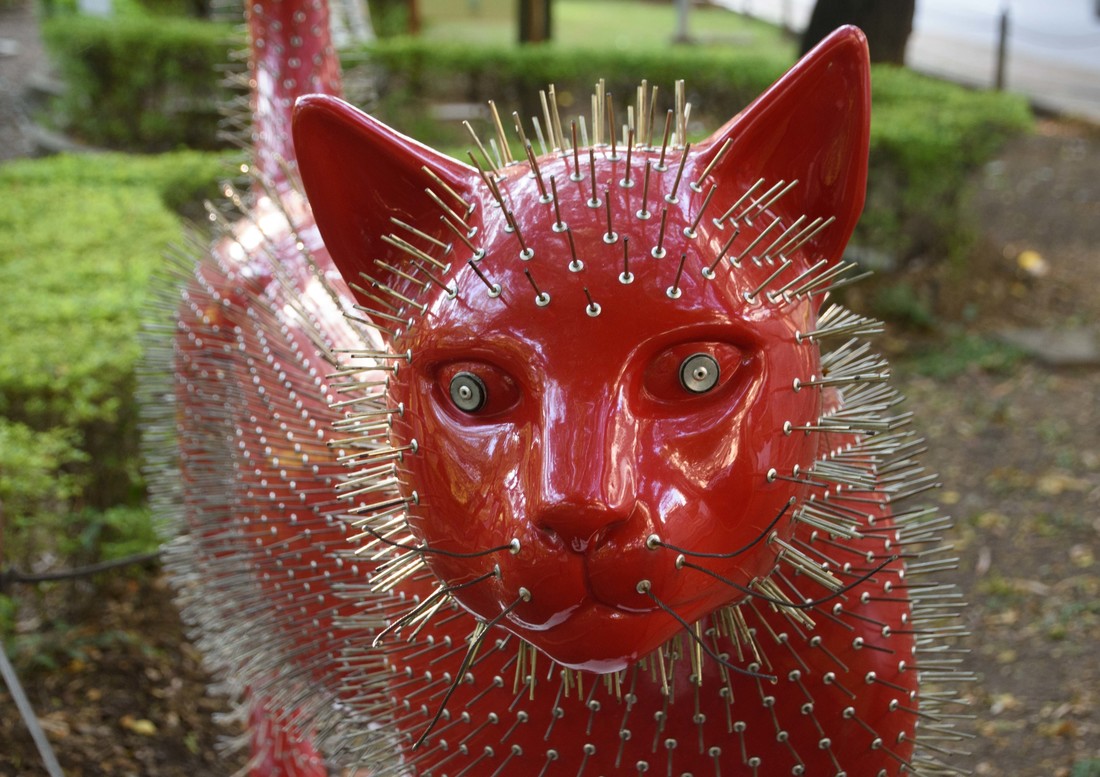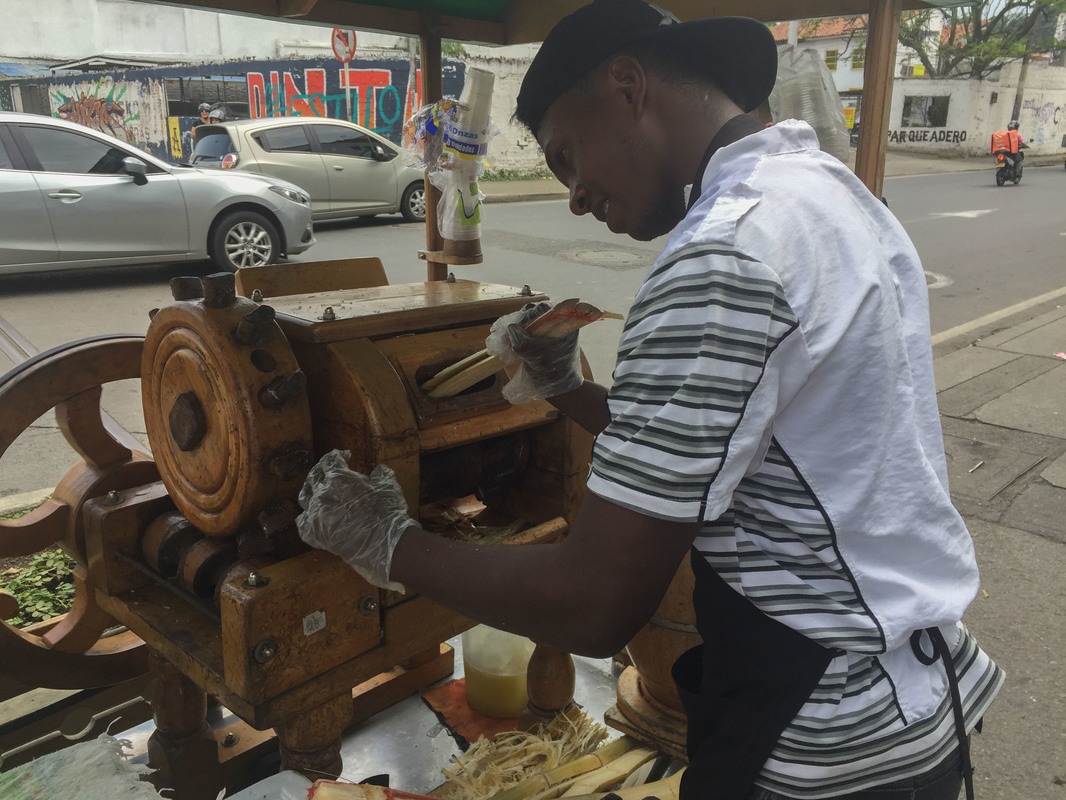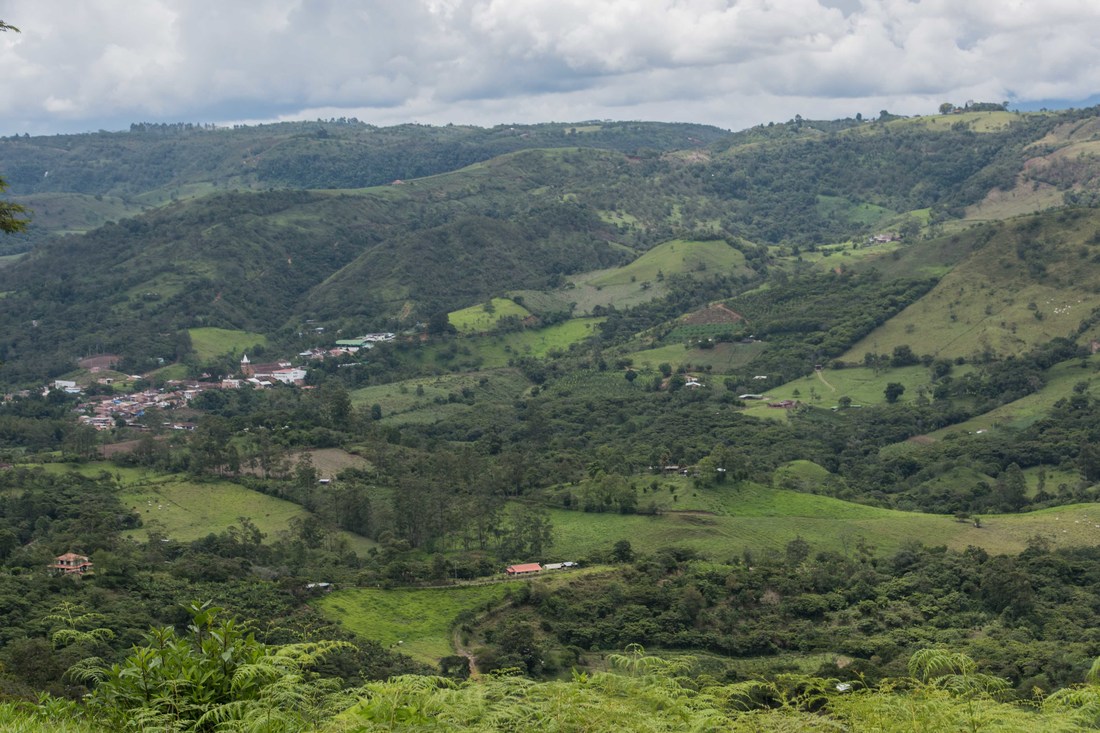
Tomorrow we leave Colombia to begin the next leg of our journey to explore eastern Canada. If we could only use one word to describe what we’ve seen this past 2 months it would be “green”, whether it was jungle draped in vines, copses of bamboo, vibrant coffee plants climbing the hills in neat rows or some myriad other crops. The scenery above has been emblematic of so many hours of travel looking out bus and taxi windows. (May 5/17)
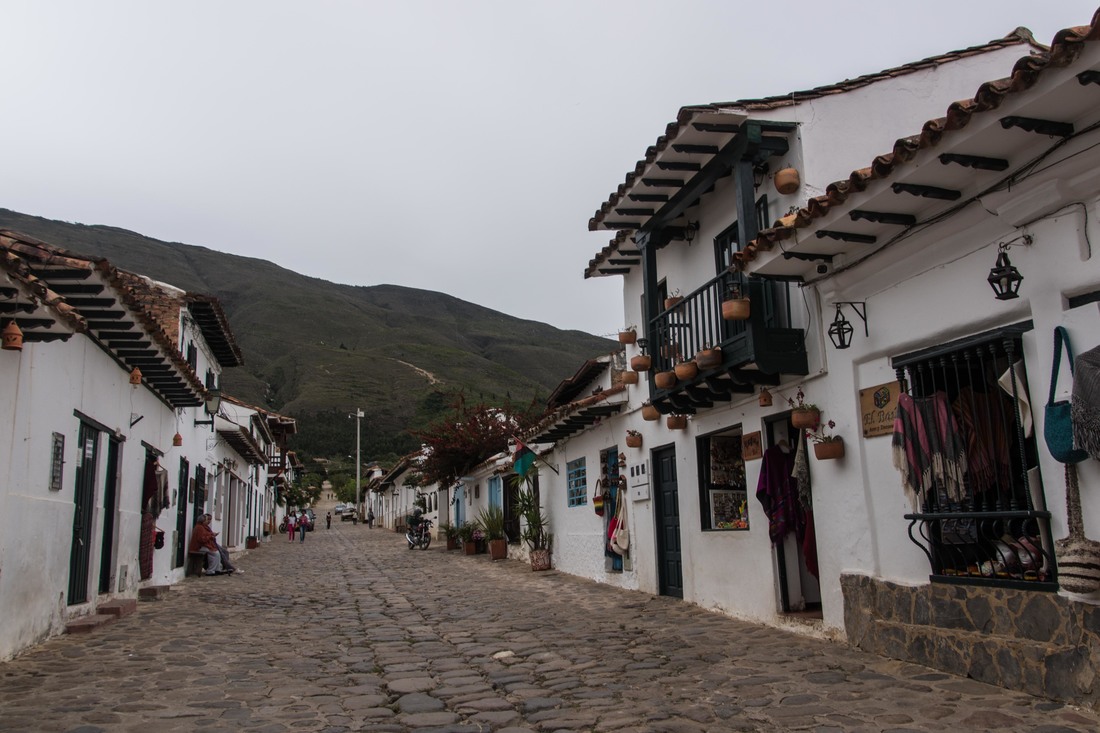
With the northern part of Colombia more heavily invaded by the Spanish in the 1500s, they left behind their colonial architecture, old world communities and a recipe for tourism. Throngs descended here on the weekend, but the quieter mid-week left us in restaurants by ourselves. (Villa de Leyva, May 4)
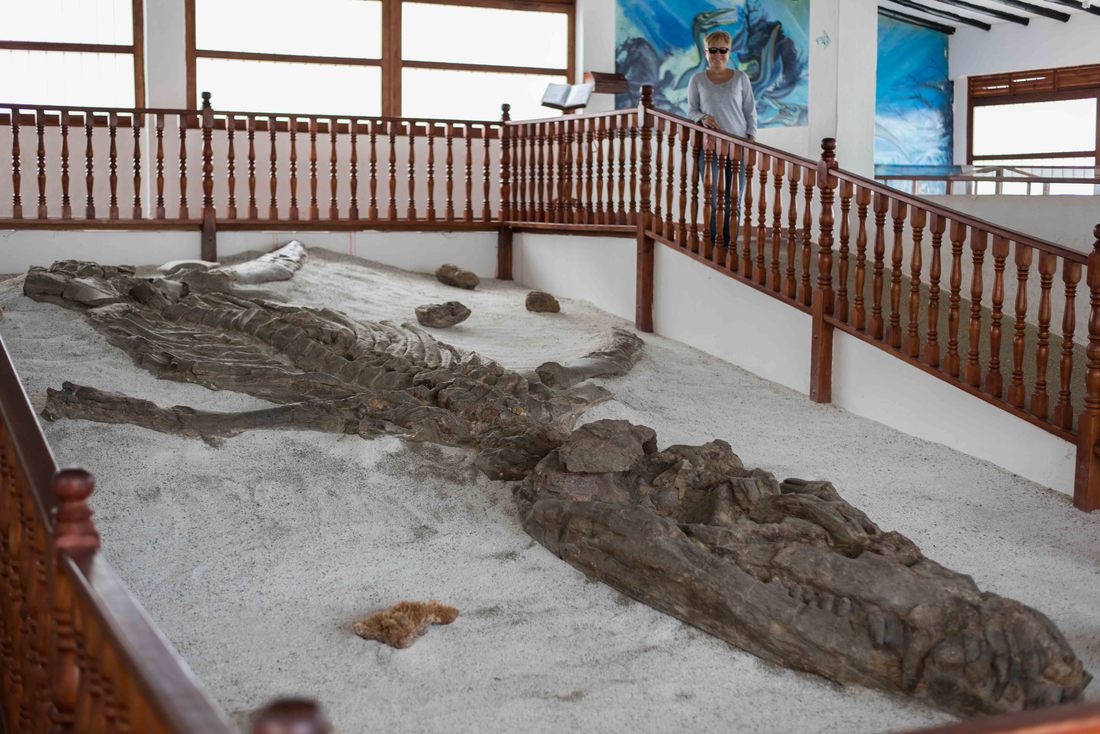
This Kronosaurus Boyacensis dinosaur was found here 40 years ago. Rather than move the exceptionally intact specimen, the excavation proceeded and a museum was built to wrap around it. At 9-10.5m long, the only way we could fit this massive reptile in the photo made it look like it was all head. Because this town and hundreds of miles around it were once under an ancient sea, there was a treasure trove of fossils. (Villa de Leyva, May 3)
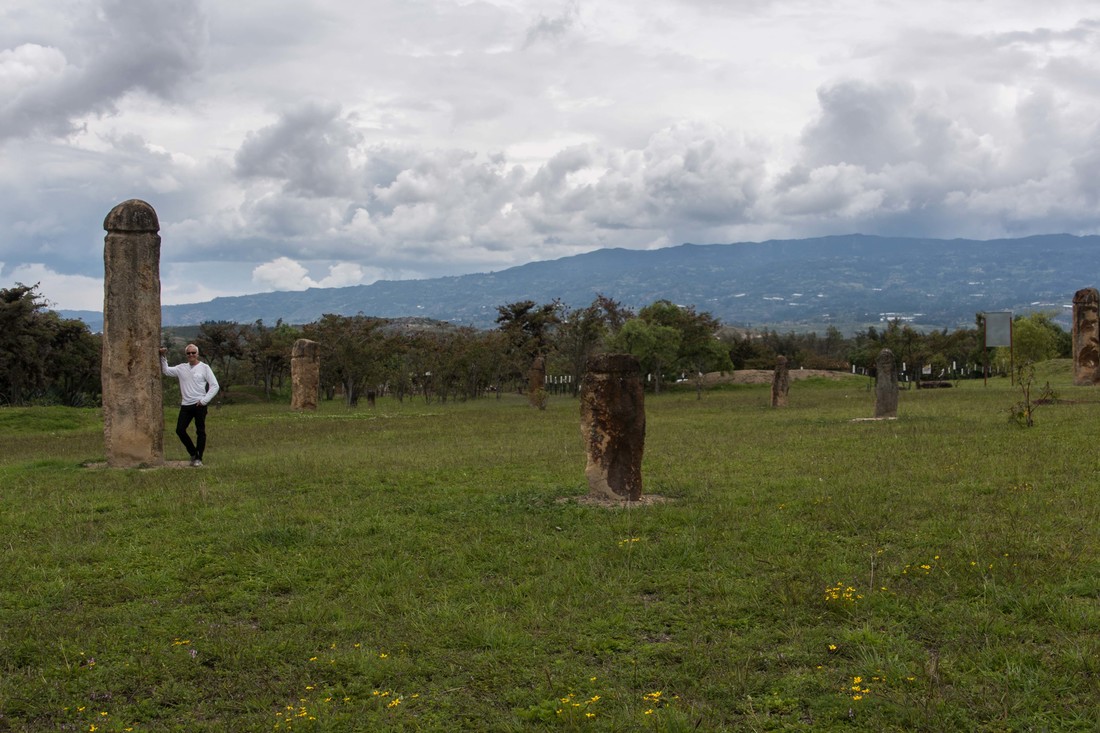
On a large piece of property over a hundred phallic stones were stuck into the ground, with some in rows and others sparsely laid out. The theory is that the Muisca people used the structures to study the sky and with this knowledge determine the seasons and best times for planting crops. The Spanish conquistadors referred to the formations as Little Hell as they believed the Muisca people were going to hell for their taboo shapes. (Villa de Leyva, May 3)
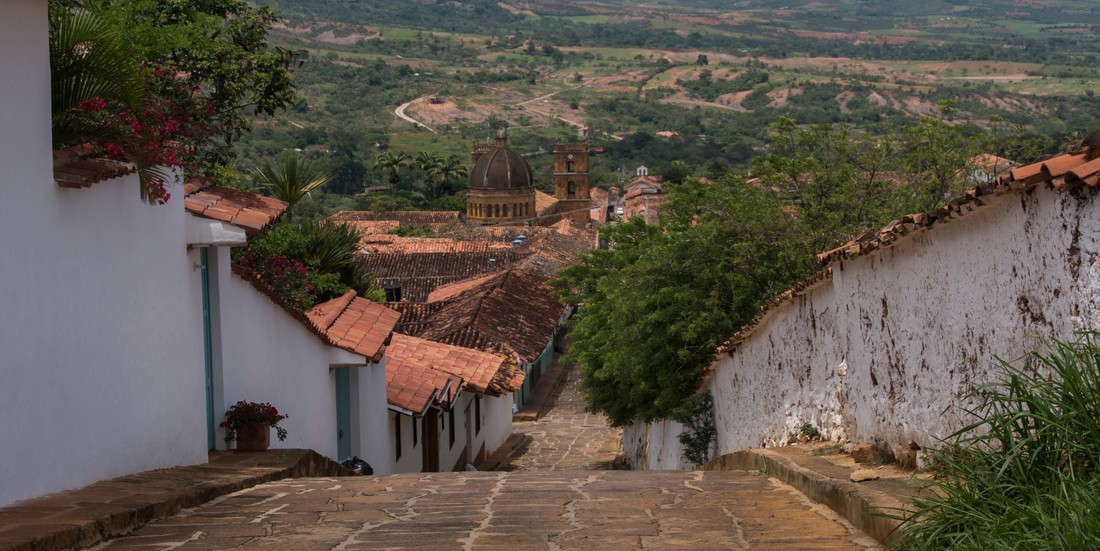
If the concept of a boutique hotel could extend to a place, this 10x10 street town would be its poster child. So perfectly quaint, it was declared a national monument in the '70s and is used to film Spanish language films. The streets were blissfully quiet during the day and by 9pm they were deserted. We came for 3 nights, declared it our favorite Colombian town (with Cartagena in 2nd) and stayed for 9. (Barichara, Apr 30)
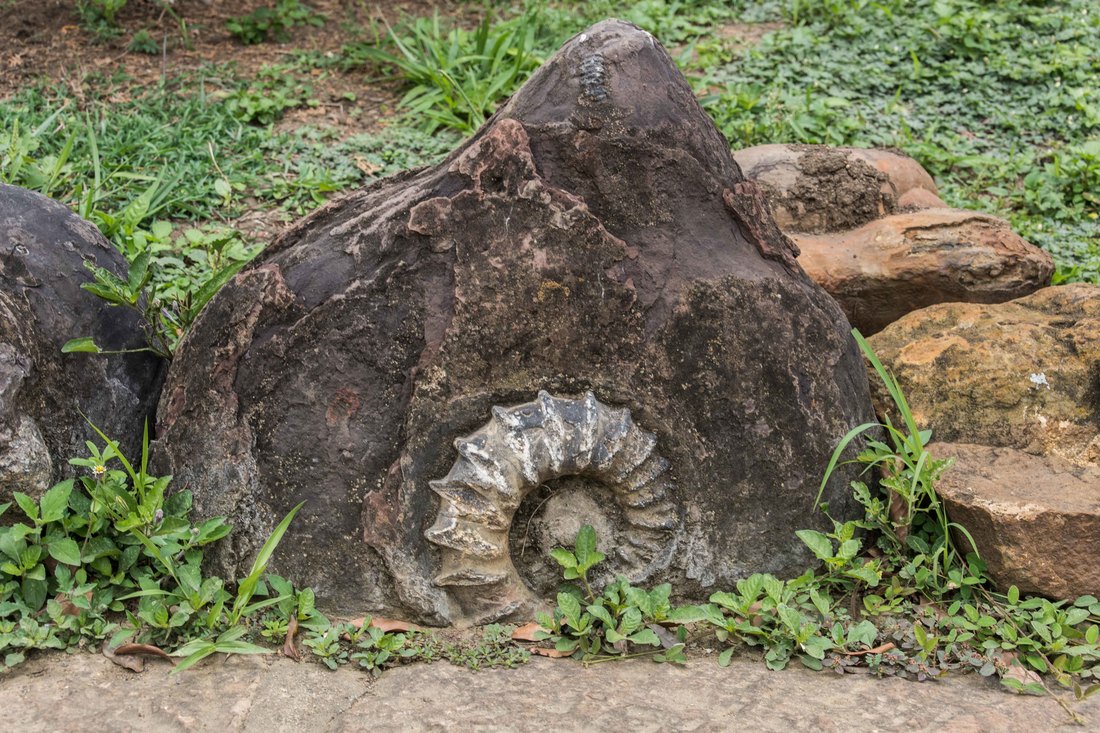
At the end of our hike we arrived in the hamlet of Guane to find that it was synonymous with fossils. Ammonite fossils filled the town’s museum (most impressive ones there, but no pics allowed), decorated the greenspace around the church, and when we paid attention, their outlines were imprinted on rocks along the path we took to get here. Fun facts: Some ammonites grew up to 6.5ft in diameter! There are 2 places in the world where they appear iridescent to the point of being considered gem quality and Alberta is one, so checking out the Badlands in a few months will be fun. (Guane, Apr 29)
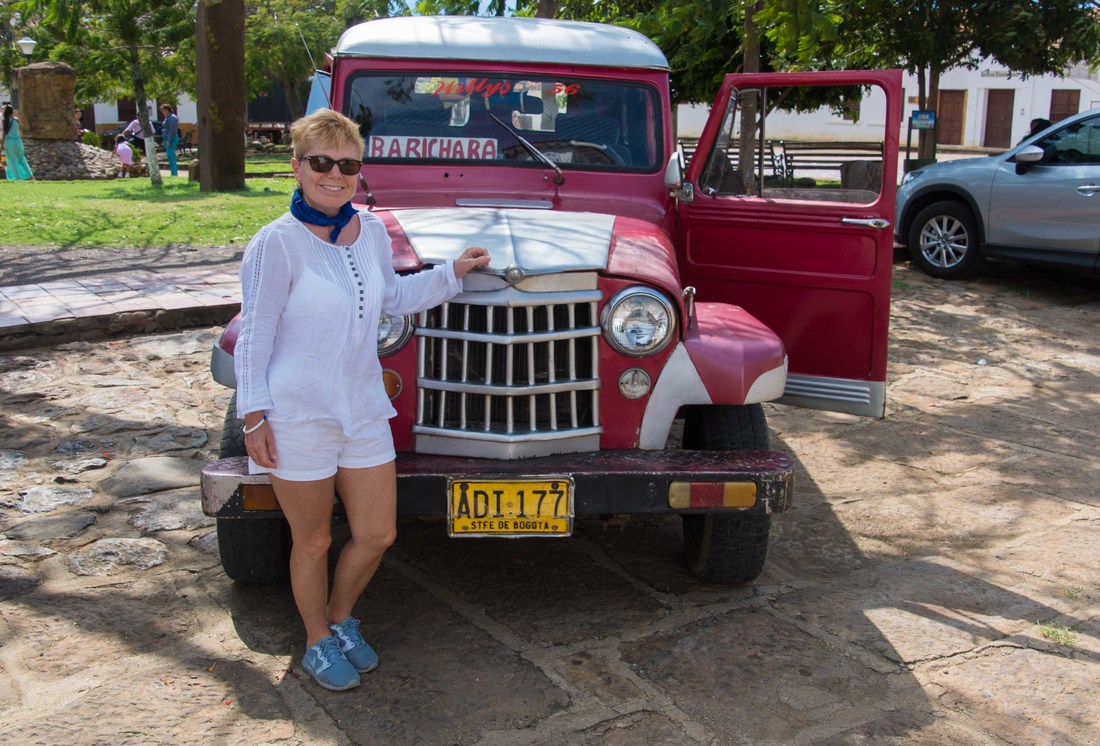
On one particularly hot day, I felt mild symptoms of heat stroke, so we opted to return from our hike with a ride in a Willy jeep. Introduced for WWII, these vehicles were a ‘must do’ here. After our 1956 model coughed and sputtered itself to life and the driver crossed himself as we left his town limits (a common practice for all drivers) we held on - my front seat wasn't actually attached to the floor and Rick bounced around on a back bench inhaling fumes. (Guane, Apr 28)
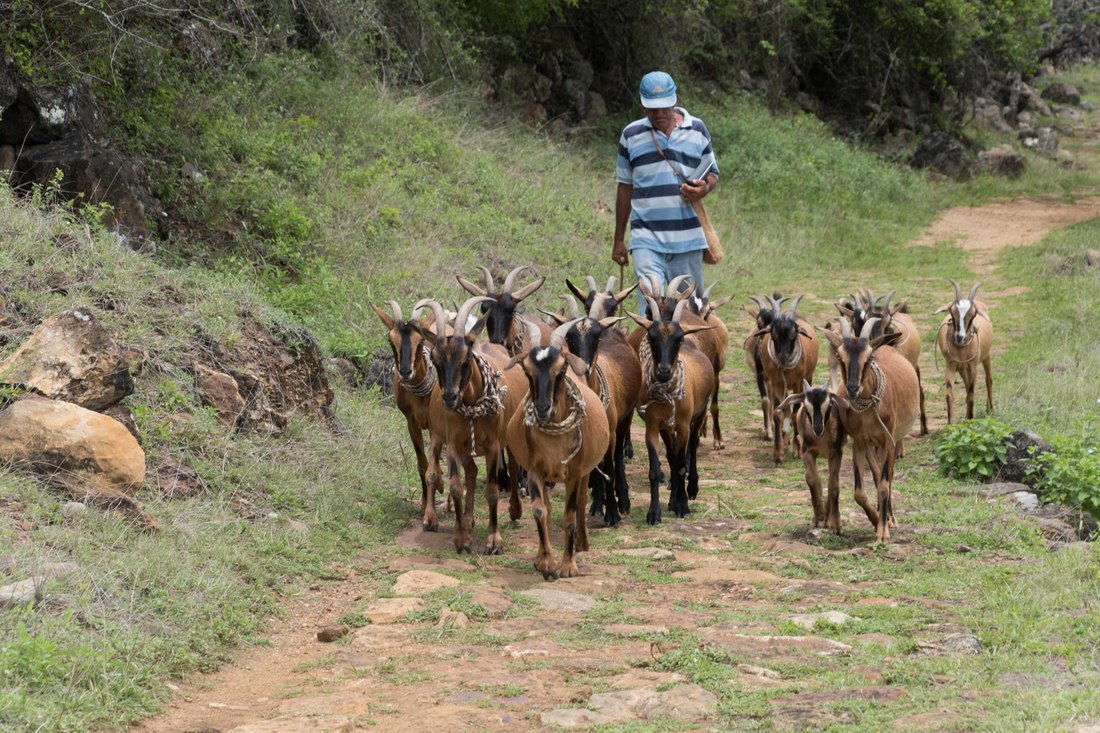
With so many days here, Rick got up early to do a couple of solo return trips on the Camino Real, with of course his fitbit clocking him… yeah, yeah the overachiever halved the average time to do the trail :) One day an entrepreneurial goat herder sold him one of the walking sticks he made while overseeing his small herd. (Barichara to Guane, Apr 27)
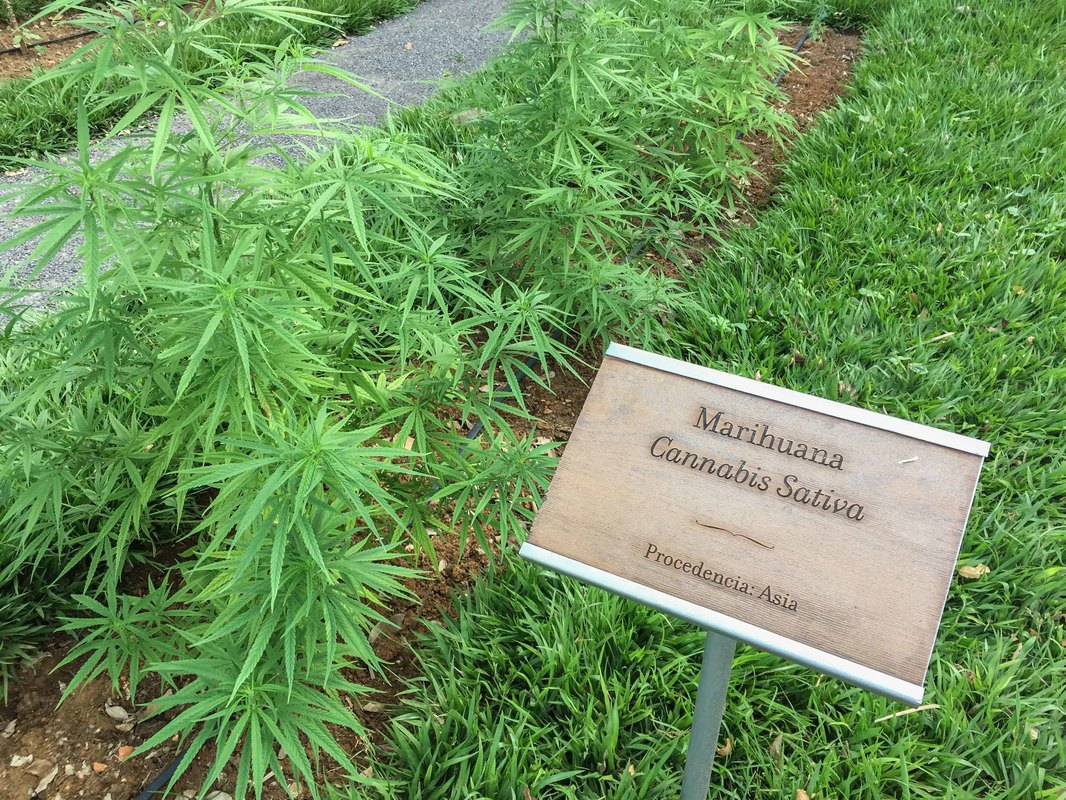
A local paper making company gave ad hoc tours of their operation (only in Spanish, but we got the general idea). Lead through a garden filled with a sampling of 50+ plants we were told which, and what part of, them were used to either make paper or provide a natural colorant (onion skins for yellow, anil plants for blue, achiote tree seeds for red, etc). Of the selection, the marijuana plant was one of the first plants to be processed into fibre 10,000 years ago, the pineapple plant made the most expensive paper and the humble linen plant, so coveted for both clothing and paper, was the most interesting one for us to see. (Barichara, Apr 26)
A surprising number of machines and steps were used to transform the plants into the end product (hence so many pics). For paper, most often the outer layer of stems or leaves were stripped away leaving their fibrous insides which were dried and chopped into shavings. These were soaked in a solution for several days until they broke down into a thick sludge which was occasionally stirred washing machine style. Once it was the right consistency it was moved to a tub and again left to further break down. A flat strainer was scooped through the slurry with the excess water draining away. The remaining layer of pulp was dumped upside down onto a piece of cloth, left to rest and dry a bit before being hung to fully dry over a period of days.
Thicker fibers, like those from the plentiful fiqua plant (tallest in the back) were sometimes destined for weaving – these were boiled in stages, dried and sometimes dyed with a natural colorant. As an aside, the unique rocks (nicknamed "turtle rocks") bordering the garden were also common in this area.
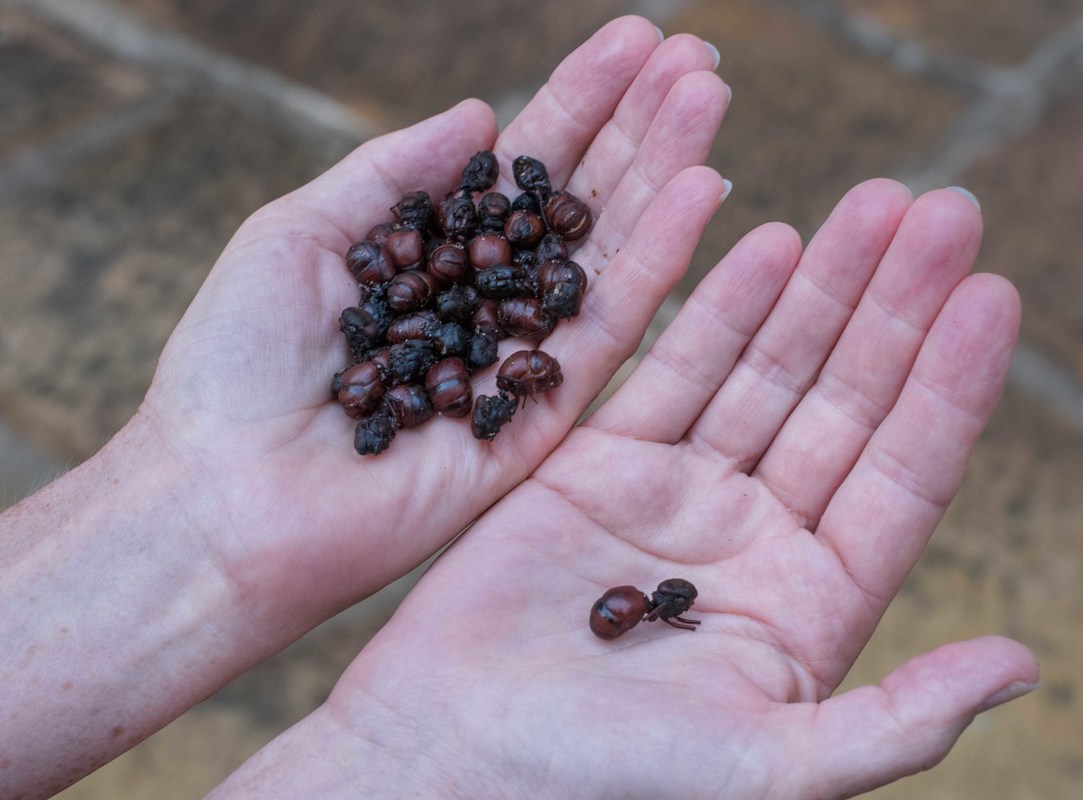
Lucky us, this was the month that the fat-bottom ants (hormigas) came out of the ground in all their plump glory, ready to be caught and roasted by the locals. Hundreds of years ago they were an important source of protein for the indigenous Guane people and today they’re an annual tradition. (Barichara, Apr 26)
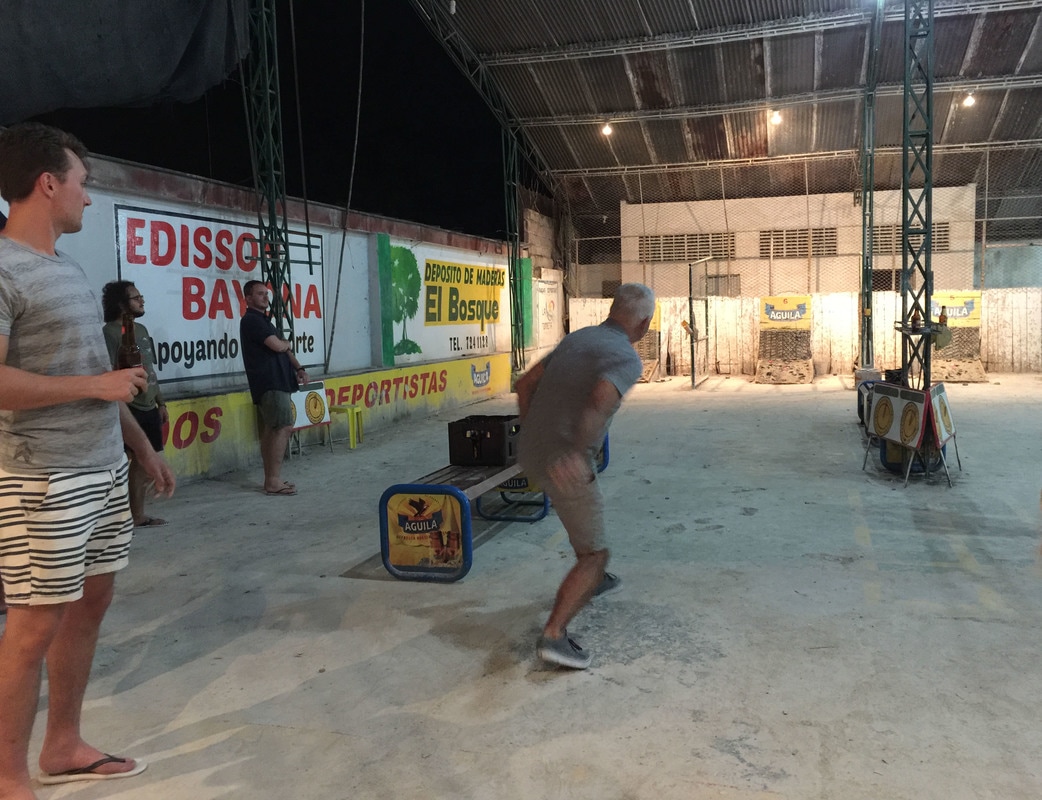
A night out to play the local game of Tejo…we, along with a group of 20 somethings, took a convoy of taxis out to a large hall filled with lanes resembling the game of horseshoes with pits of clay in lieu of sand. While we all dug into a crate of beer our guide talked us through the safety rules and object of the game – toss a 4lb lead puck down your lane, aiming for the metal ring and 680g (pink & white) packets of ready-to-explode gunpowder in the centre of the pit. Extra points were earned when the gunpowder was hit, startling everyone with it’s flash and bang. (San Gil, Apr 25)
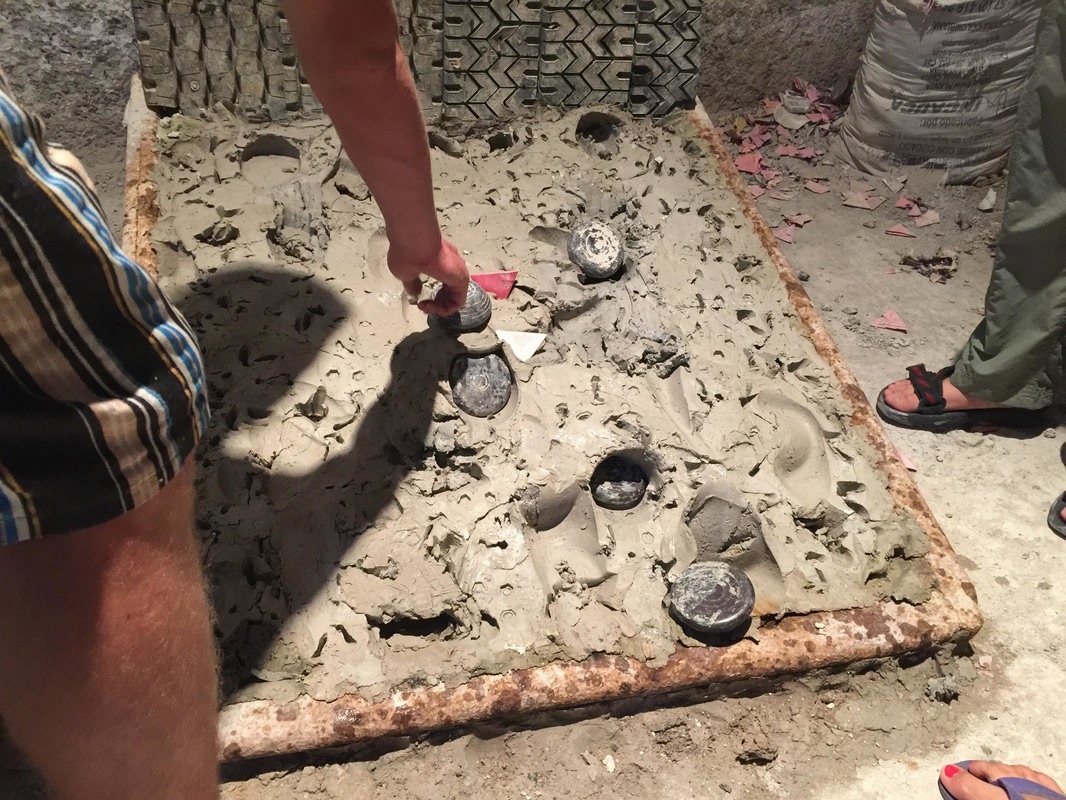
As the beer crate emptied and the first hour turned into the second, the safety rules seemed to fade from memory and cigarettes were lit with buckets of gunpowder packets hanging nearby... Rick totally rocked at the game; he was the first of only 2 players to hit the gunpowder all night and earned more points than anyone else on his team. In contrast, my performance was abysmal.
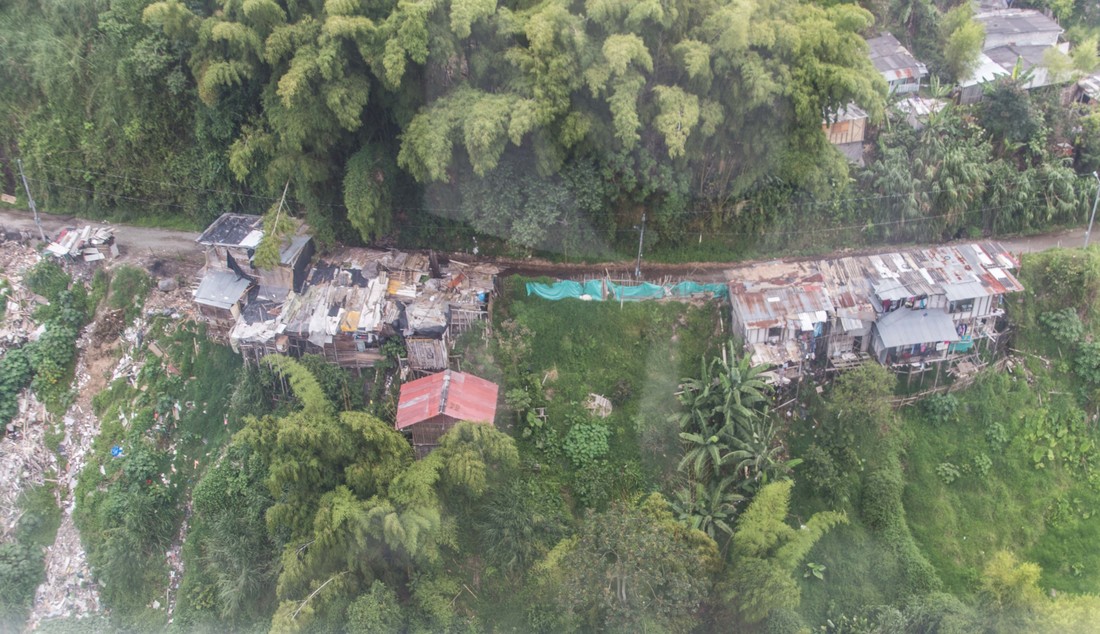
Gondolas have been popular in several cities including this one which had 4 lines with one even extending to a nearby city. On one rainy day, we passed over a string of homes sitting precariously along a ridge and remarked how vulnerable they looked. Since then each afternoon the dark clouds have moved in, releasing torrential downpours, followed by thunder and lightening. Then this morning we were told that a local landslide had claimed several homes and lives with the death toll on the rise. With Colombia experiencing its heaviest rainfall in recent memory, this is the third city we’ve visited where mother nature has wreaked havoc. (Manizales, Apr 19)
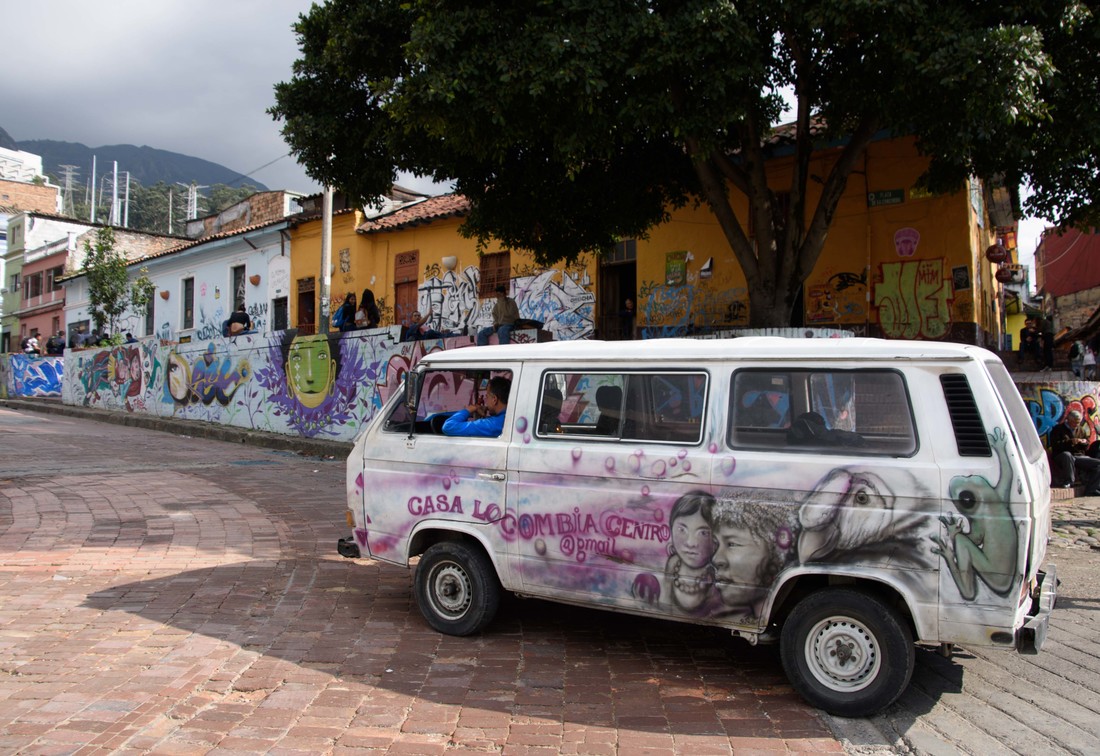
It’s been a year today since we left home to begin our journey! Although we really miss family and friends along with certain comfort foods, the freedom of our RV, (and all Kate's shoes), its been an adventure and learning experience, where after so many bumps along the way our mantra has become “well… that was a lesson learned”. (Apr 18)
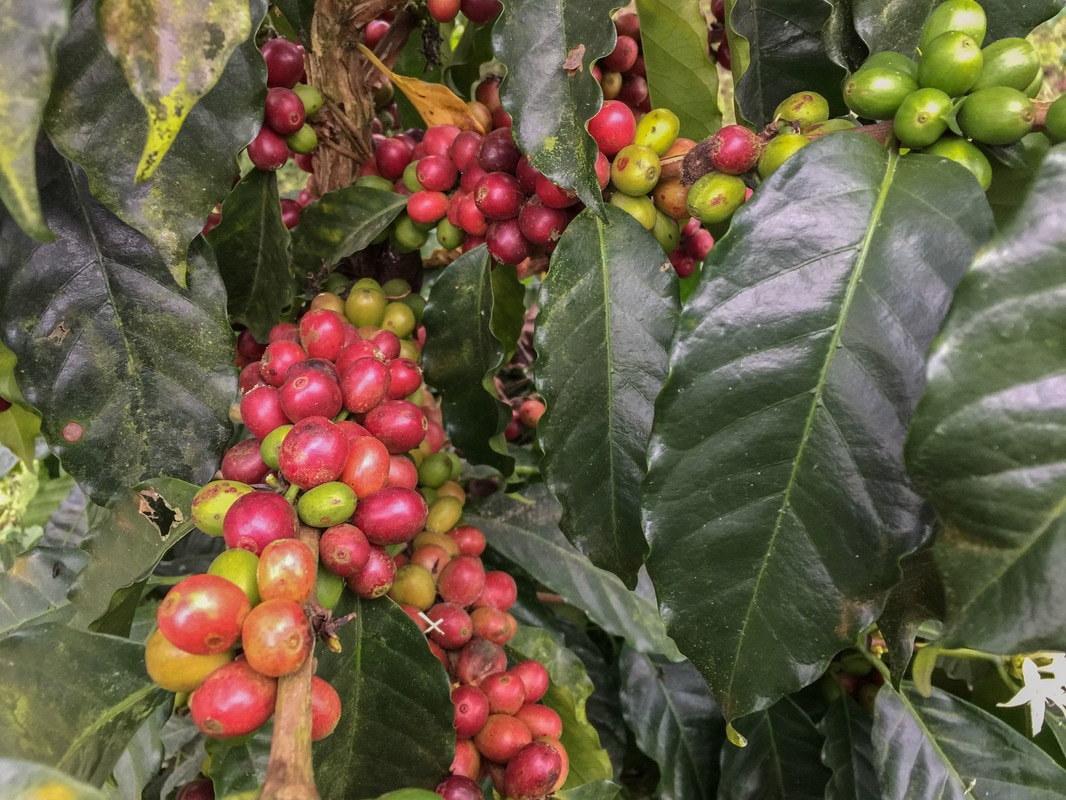
A democratically run coffee cooperative manages coffee export revenues and allocates funds to schools, civic centers, etc. They also operate the ubiquitous Juan Valdez cafes (think Starbucks) that serve delicious coffee straight from the farmers – no middlemen to dilute their profits. As much as we seek out a good cup of coffee, Colombians generally prefer hot chocolate – a breakfast staple.
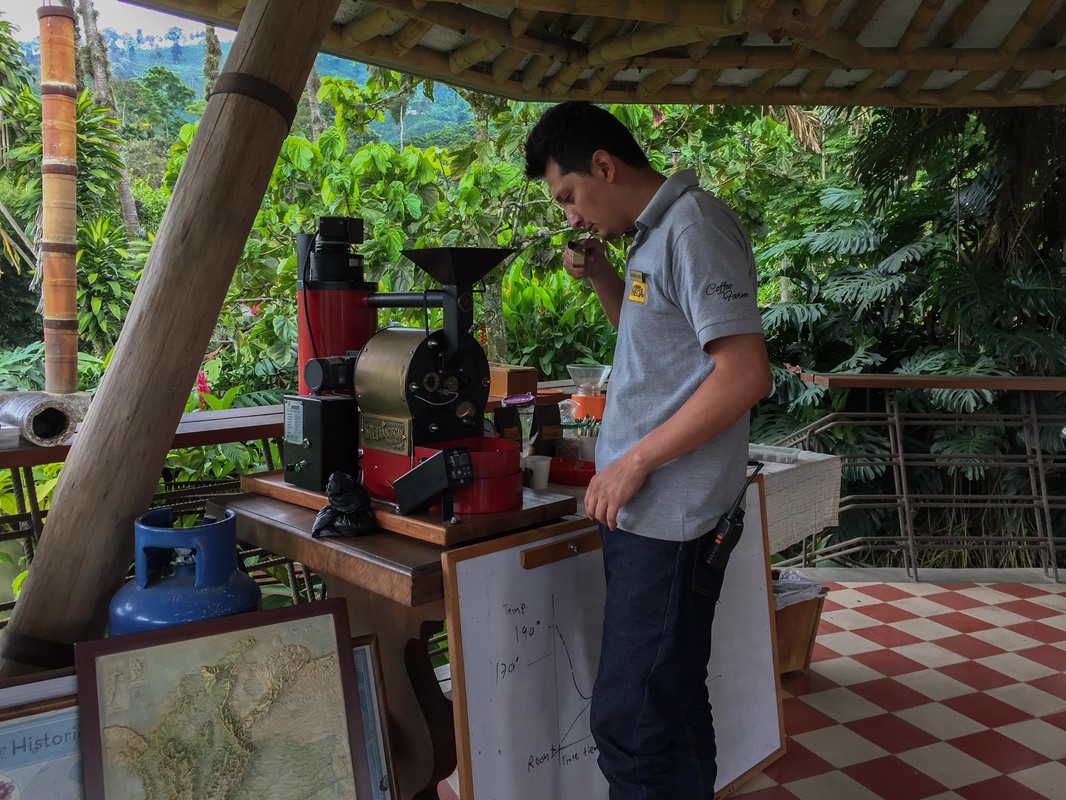
At one point, a San Francisco Coffee Roaster worked away at a batch of beans. Our guide pulled a dipstick style taster rod out of the roaster at various stages so that we could smell the beans as they progressed through the stages, from baking bread at the start, popcorn in the middle and recognizable light to dark roast at the finish.
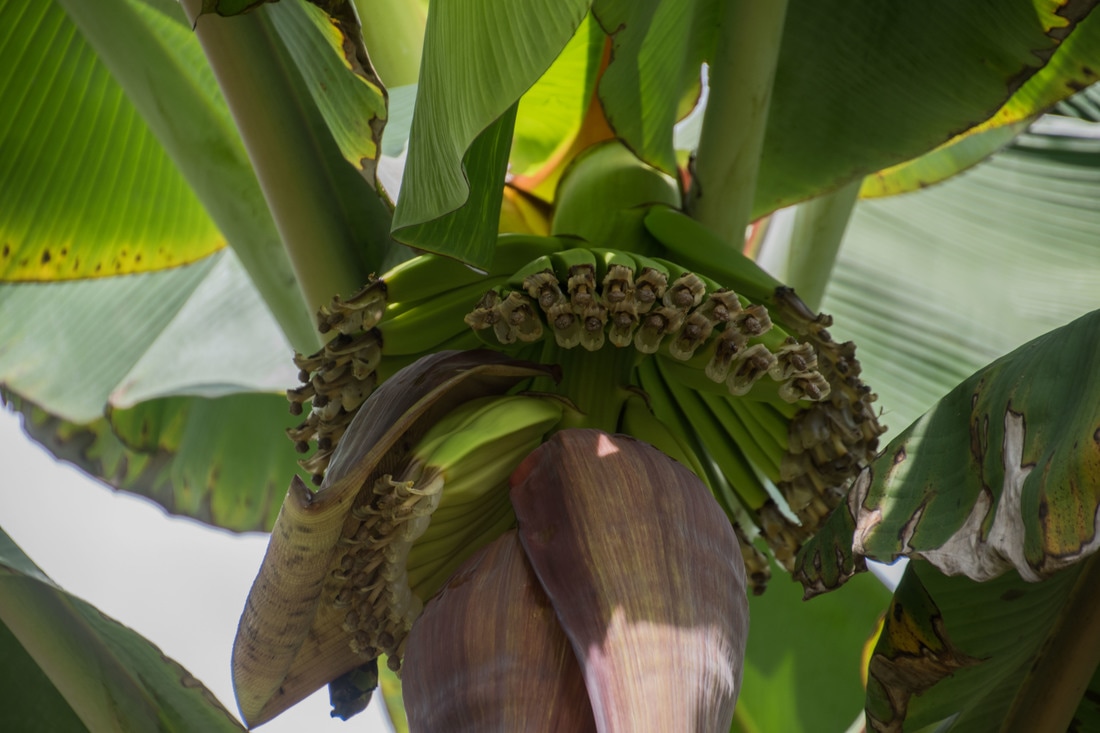
Farmers have reallocated part of their land to grow plantains and other crops to mitigate the fluctuating value of their coffee. Fun fact: To maintain Colombia’s coffee cache, only the highest quality beans are exported and for these the farmers are paid $1.50USD/kilo (unroasted). Much of the roasting is done overseas according to the taste and aroma preferences of the destination countries.
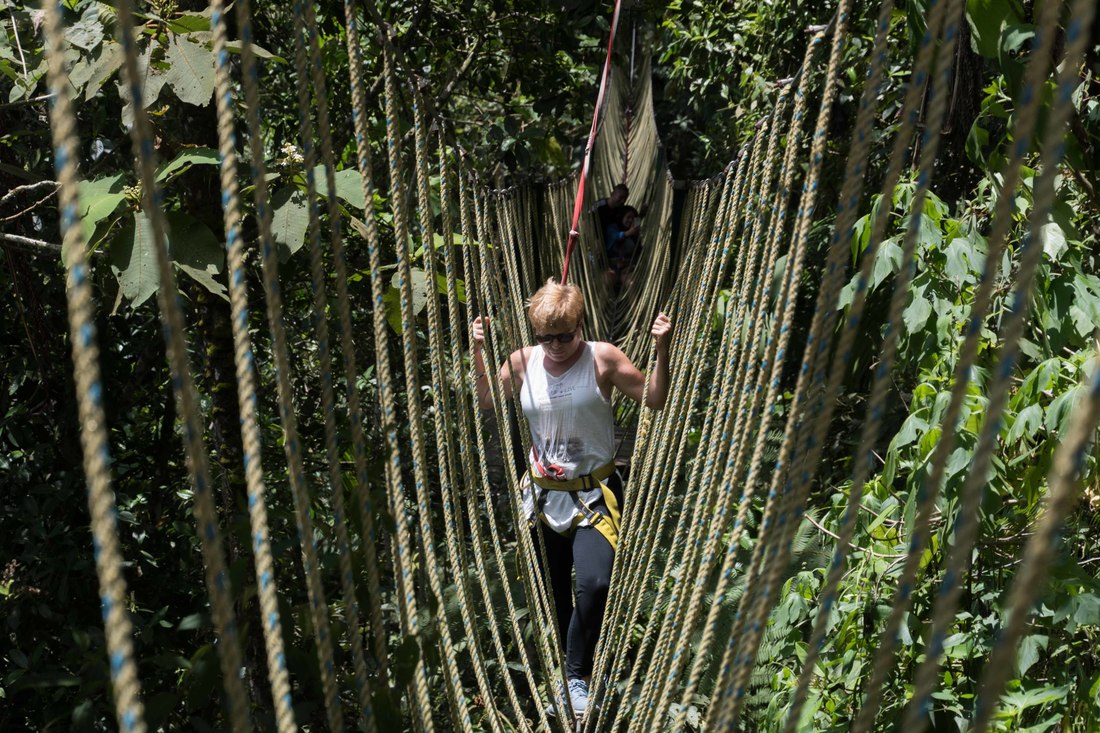
Back home I doubt I’d have passed the height requirement for this Tibetan bridge… At some point, I could no longer reach the taught metal cable for balance, leaving me with the floppier side ropes...bit of a core workout. Because it was over 100m long it had a couple of resting platforms - at 70m above the ground they swayed, adding to the adrenaline rush. (Manizales, Apr 14)
Our boat stopped at one island to see the only house that had survived the flood. Curtains of Spanish Moss hung from the old trees – it looked wedding scene romantic as it swayed in the breeze.
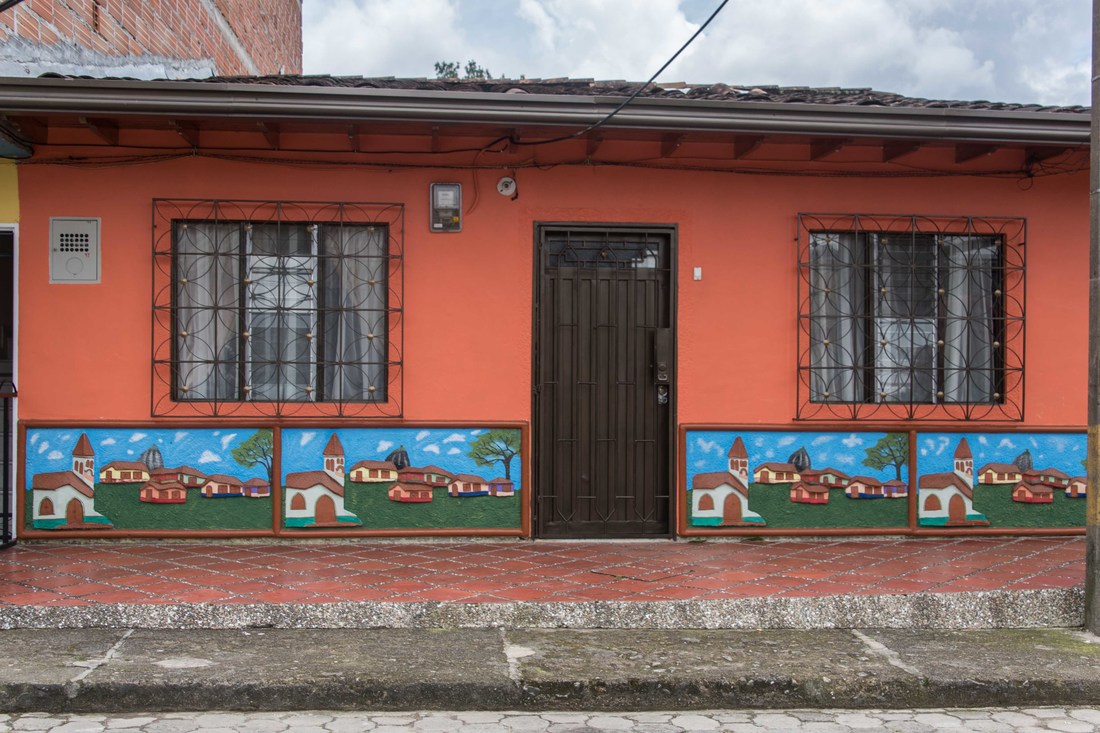
We loved this adorable town… buildings were painted with bas-relief scenes of everyday life and unlike some places where a kitschy theme carries only as far as the main couple of streets, the frescolike adornments and immaculately painted homes extended to the town’s furthest reaches. (Guatape, Apr 10)
A sample of some of the bas-reliefs... we especially liked the moto chiva on the left. They were the only taxis in town and with barely any siding to hold you in, they were OK for around town, but the 15 min ride from town to our cabana along the highway was a little unnerving. (Guatape, Apr 10)
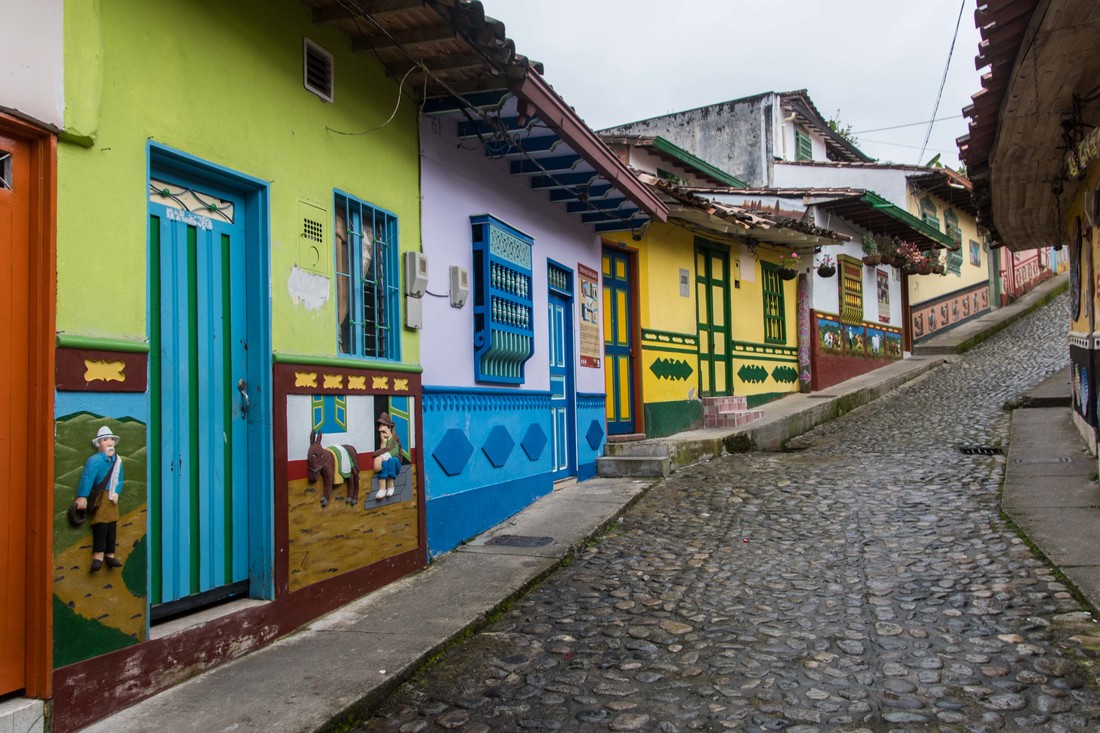
Although our travels keep us constantly researching and organizing, there have been so many times we are relieved we're not with an organized tour - for 4 hours each day an onslaught of buses hit town, hoards filled the streets so that you couldn't ever take an unobstructed picture and then they all got back on the bus. The mob totally missed the quiet charm of this quaint town. (Guatape, Apr 10)
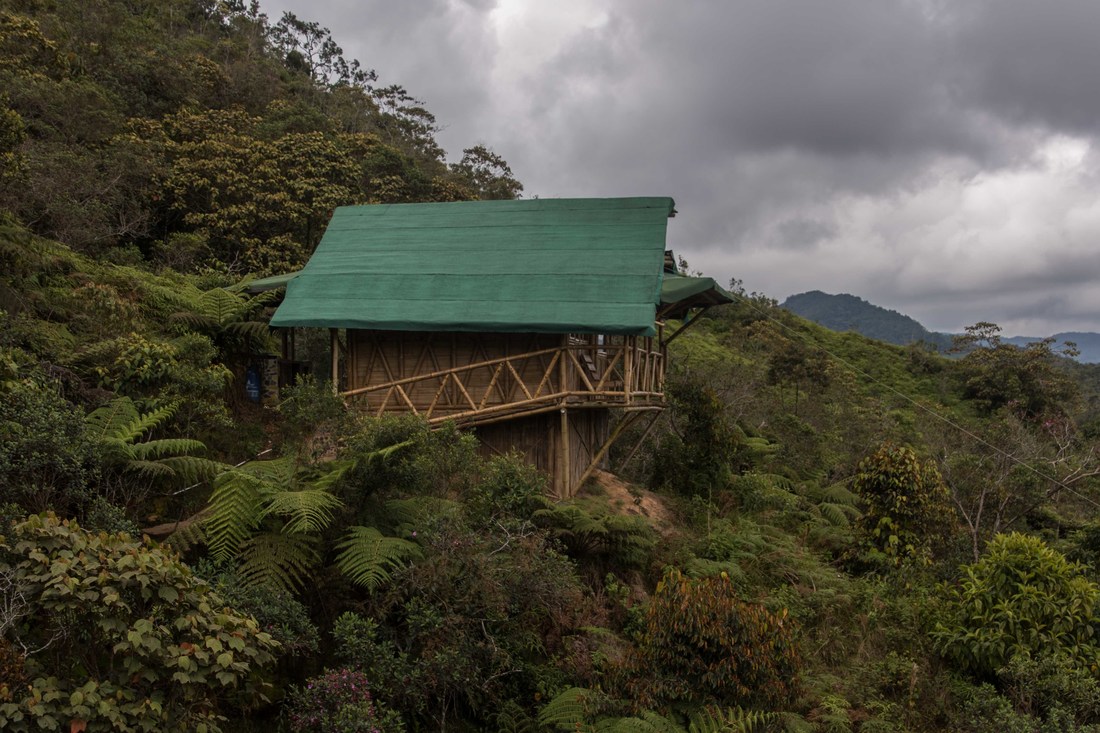
An entrepreneurial and warm couple, along with their English speaking helper, built the above and 2 other private bamboo cabanas on their spacious property. They wanted to do anything to make our stay wonderful so much that during our good-bye, gifts and kind words were exchanged by all. In a time when multi-nationals are carving out their piece of the tourism industry, we wished them every success. (Guatape, Apr 9)

With 5 1/2 months of S.A. travel behind us and a few weeks to go, we've become another statistic under the Dangers and Annoyances section of every travel guide book. Week 1, Peru: both our personal bank account ATM cards were hacked and thousands stolen (later reimbursed). Not trusting ATMs, we switched to Visa cash advances with bank personnel. Week 9, Argentina: Visa advances weren't an option so with trepidation we switched to using our business account bank cards. In this cash based economy each ATM only gave $180 for a $9 fee. Week 24, Colombia: with our first (& only) Visa cash advance with personnel we were double charged. Visa assured us of all the reasons why that would be impossible and how it would take moooonths for security to prove - 3 days later our account was credited. Week 25, Colombia: we switched to Western Union but with their website woefully out of date for locations we've had to spend hours being passed from one outdated location to another before finding the correct one. Week 32, Colombia: Rick's iPhone was stolen. Our hotel front desk's only question was if it was at knifepoint... no it was only a painless pickpocket. (Medellin, Apr 8)
Fernando Botero is the most celebrated artist in Colombia and with this being his hometown, several of his high-value sculptures dot this plaza. His work plays with the themes of volume and disproportion, which are particularly fun in his paintings - once home we plan on ordering one, as safely mailing items from Colombia is challenging. We’ve trialed with an envelope and a package and that was enough for us. (Medellin, Apr 8)
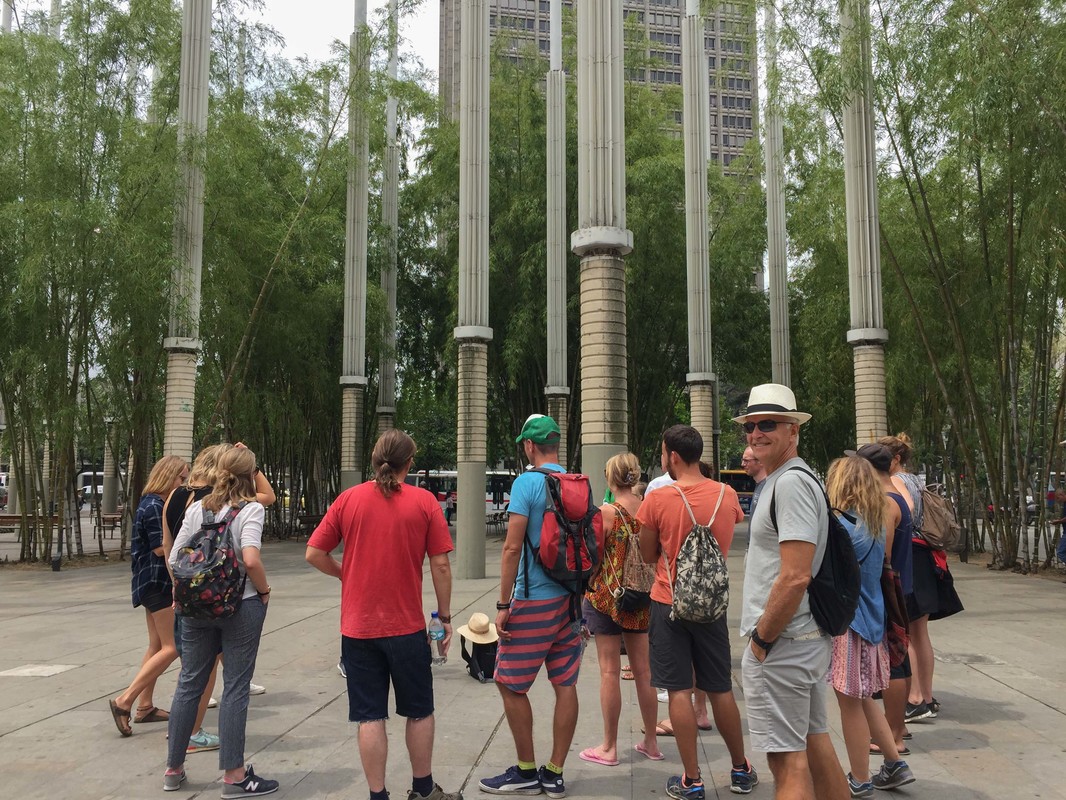
On a walking tour our guide warned us that with tourism being relatively new, we could be stared at. It's not uncommon for this to happen to us but with a mob of 20 tourists the effect was magnified. If our guide wanted our close attention she would have us gather in a tight circle to reduce the number of distractions from passerbys who wanted to say hi, welcome us to their country, etc. But even then, one young woman nudged into our circle and made it clear she wanted to show off her baby. She approached a few of us so that we could get a good look and perhaps coo at her dressed up little girl. As with the other "visitors", our guide gave her the time to do this and then gently wished her a good day. (Medellin, Apr 8)
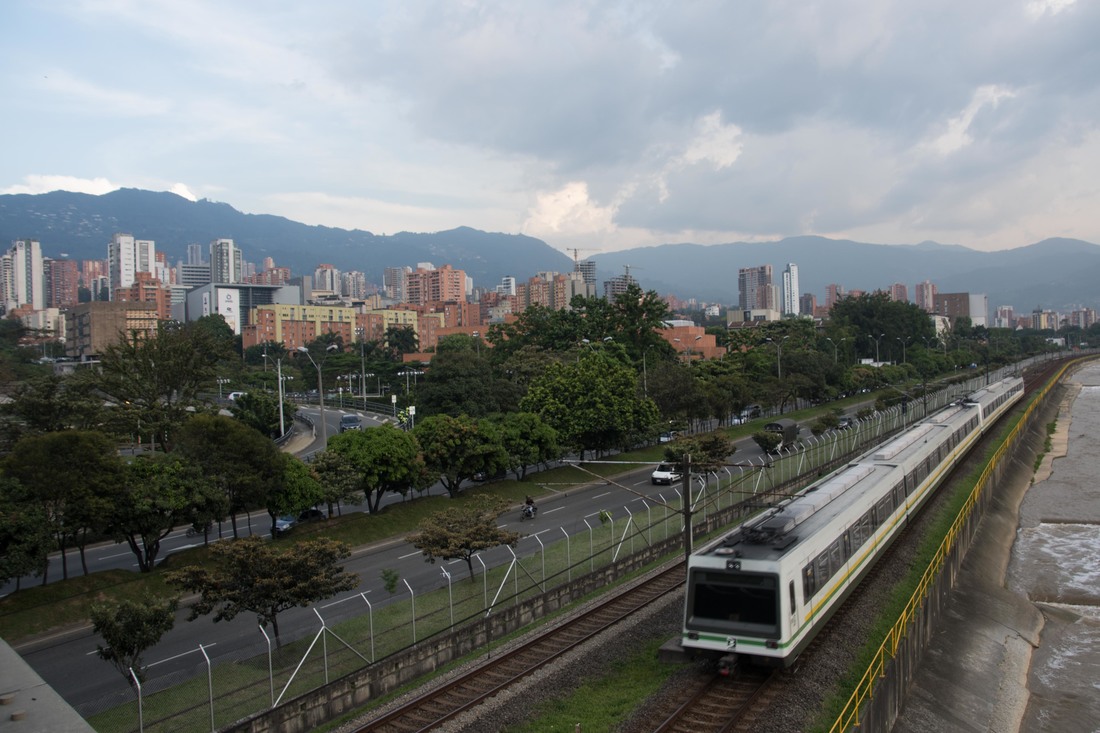
Today Medellin is a modern, affluent city, yet 20 years ago it was deemed the most dangerous in the world. As part of its transition, this LRT (ground and above ground sections) was built to extend out to the poorer neighbourhoods in an effort to reduce poverty by facilitating easy access to the city and its opportunities. Soon the transit system earned international awards. Their next stage was adding comprehensive civic centres in each barrio, as safe places to learn and play outside of school. (Medellin, Apr 7)
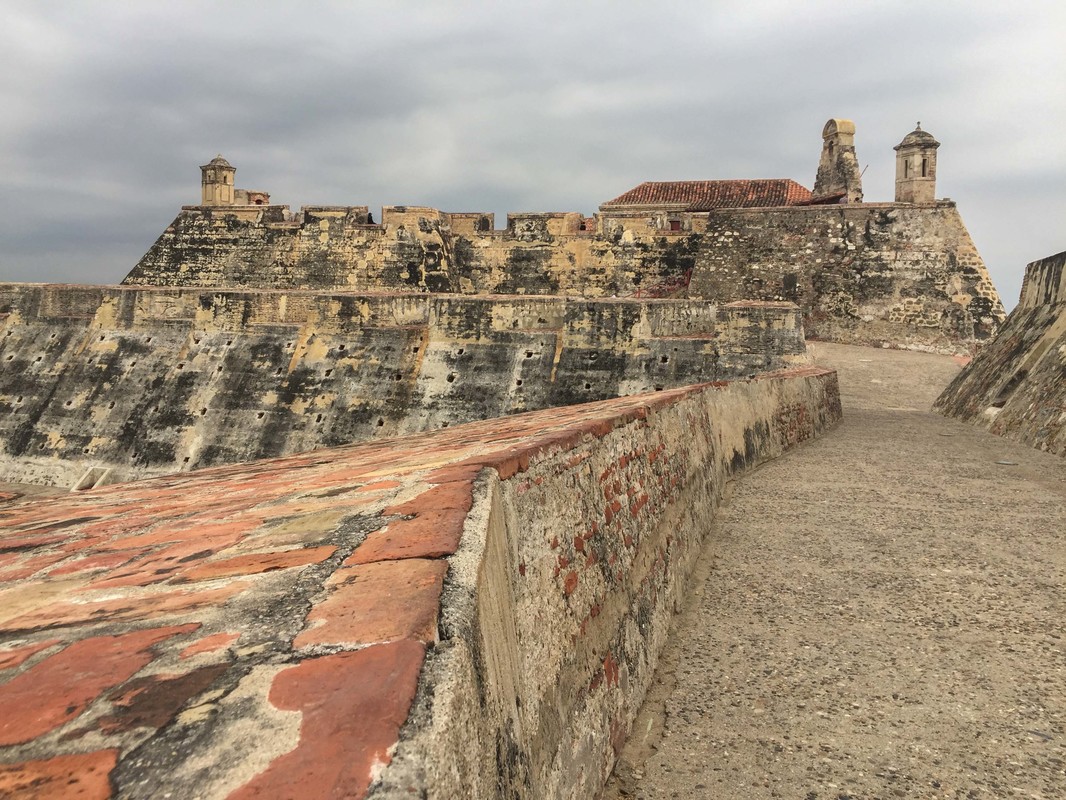
In the mid 1500s the Spanish founded this key port city to use as a transfer point for their various plunder from as far north as Florida and south to Peru. With that much wealth, pirates and invasions soon followed so the Spanish built Castillo San Felipe de Barajas, their largest castle fortress in S America. (Cartagena, Apr 3)
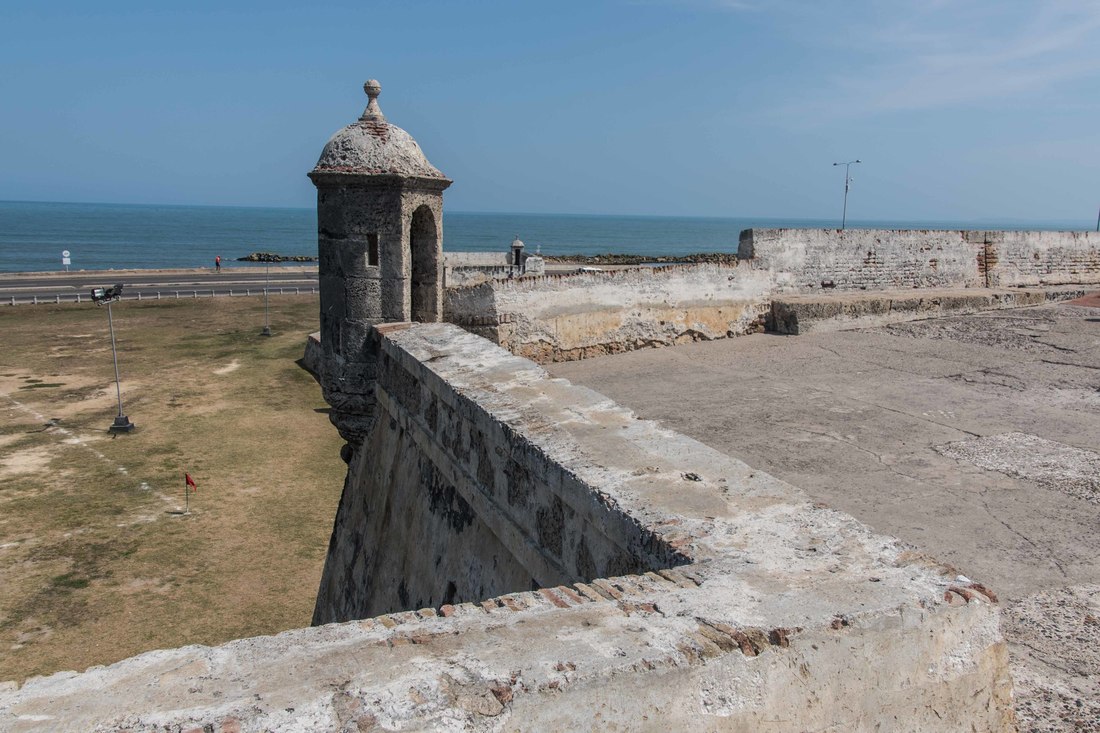
Along with the castle and fort to protect it, the Spanish fortified the city with an 11km long wraparound wall that for the most part remains today. With several access points to its top it made for a great birds-eye view stroll. In one corner, each night the crowds clustered for cocktails to watch the sun set. (Cartagena, Apr 3)
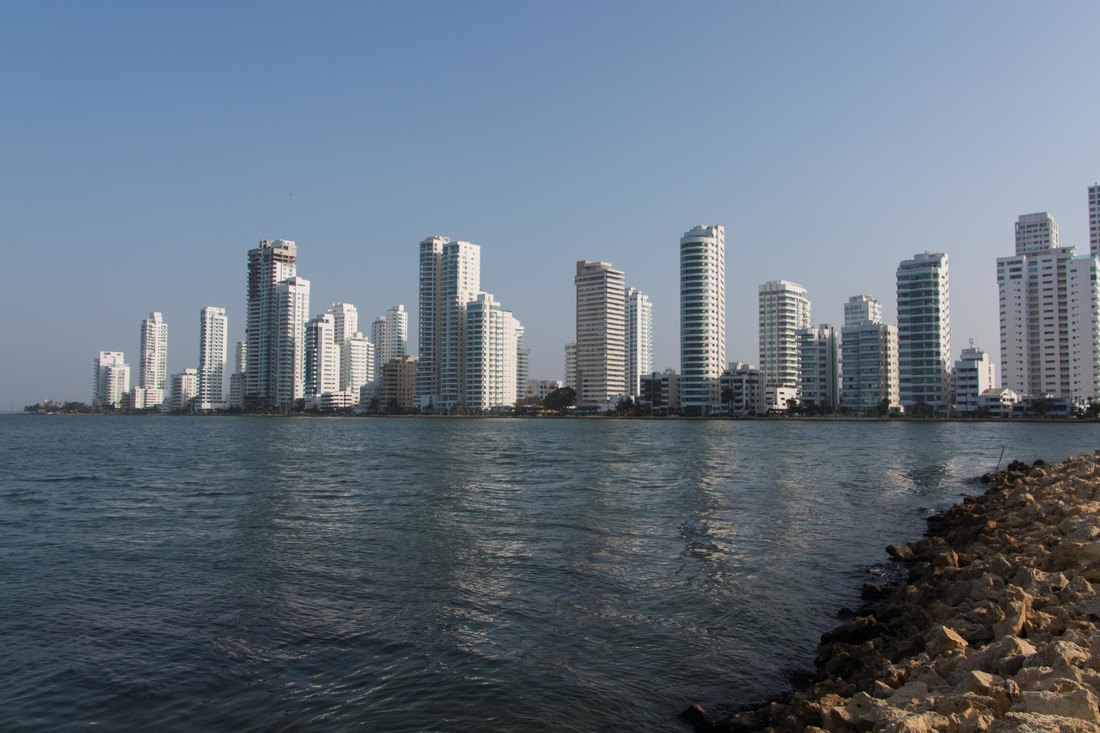
Outside the old city wall a modern new one has developed along a spit of land. Almost every apartment building was white with blue windows or accents which made for a stunning skyline. As we walked its long promenade, what struck us was the number of nannies wearing nurse style uniforms, pushing their small charges in their strollers. (Cartagena, Apr 2)
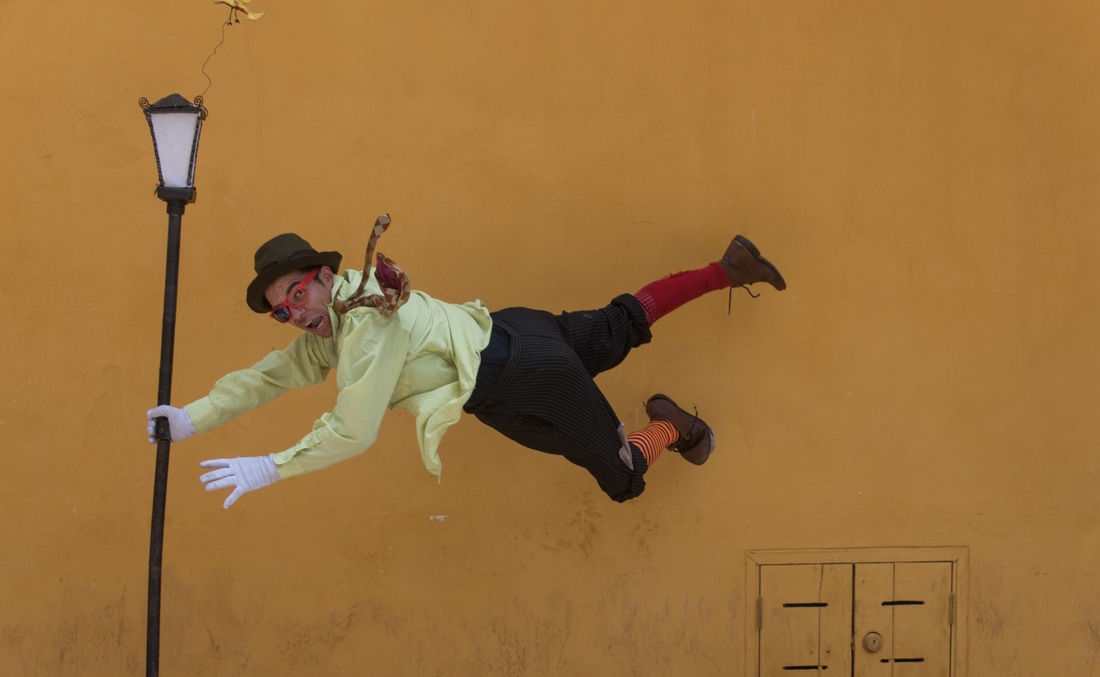
With so many tourists, the buskers were out in numbers with these suspended-in-air stunts becoming the rage. While we sat eating dinner in a plaza, we watched he and his girlfriend go through a 1/2hr elaborate set up with their homemade contraption - we gave him pesos just for that show. Then to our disappointment we saw several international tourists take pics and not give a tip. Given that 45% of Colombians live below the poverty line, by comparison the foreign tourists would be beyond wealthy. For them not to part with a few pesos saddened us to the point that we made a generous donation on behalf of the inconsiderate. OK, we're off our soap box now... (Cartagena, Apr 1)
Artistic expression certainly is part of the Colombian culture whether it’s graffiti, sculptures, street performers, vibrant colored buildings, tricked-out buses or music... always music playing. A number of everyday moments were captured in metal. (Cartagena, Apr 1)
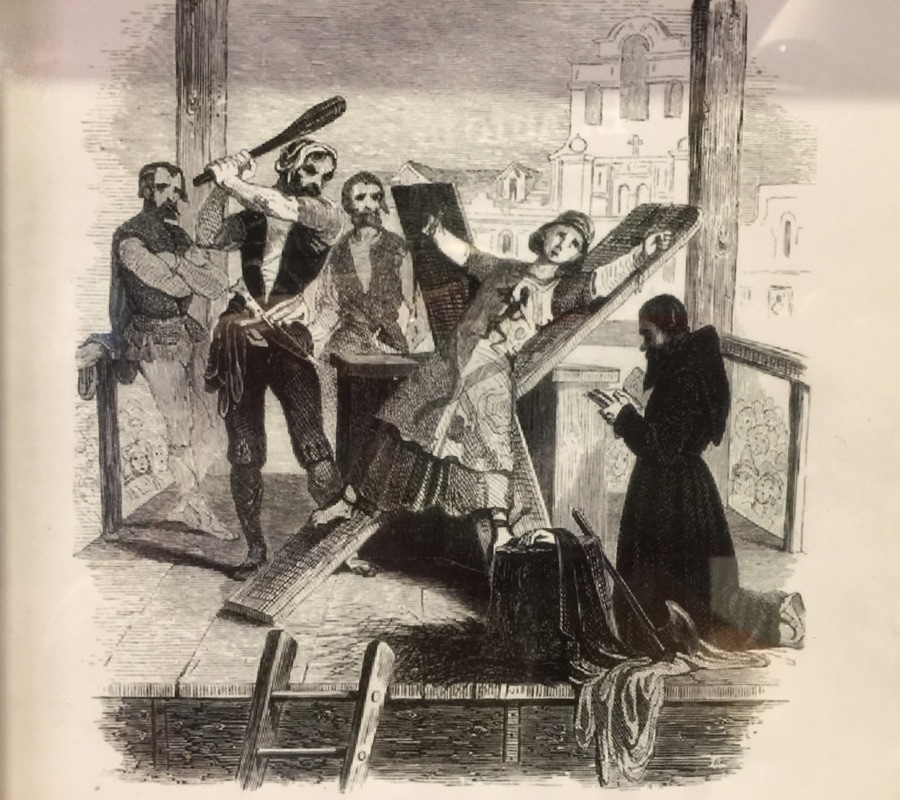
We toured the building used by the Catholic church to carry out the torturing of “heretics” during the 200 year Inquisition starting in 1610. A heretic could include anyone whose belief system didn’t match the churches or whose behaviour was misunderstood. Above: Apparently, I wouldn’t have fared too well as the demons causing epileptic seizures had to be beaten out of a person – not sure why they had to go through all that effort when the poor soul was eventually just killed anyway. (Cartagena, Mar 31)
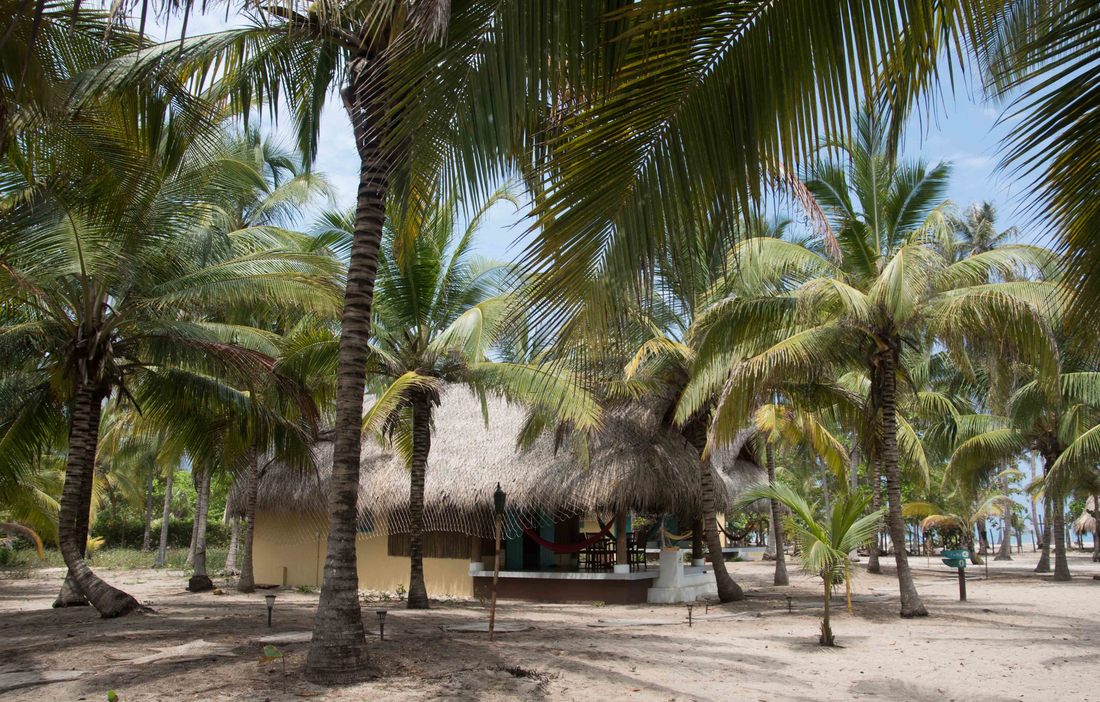
After talking to a local we decided to take a detour from being travelers to vacationers. Finding a great shoulder season special we came for 3 days, loved it and ended up booking for 9. With check-in complete two tropical dress clad receptionists waved us goodbye as we rode off in a golf cart toward our beach cabana - in perfect unison we looked at each other and laughed saying it felt like an episode from that 80's show Fantasy Island. (Aite Resort in Palomino, Mar 27)
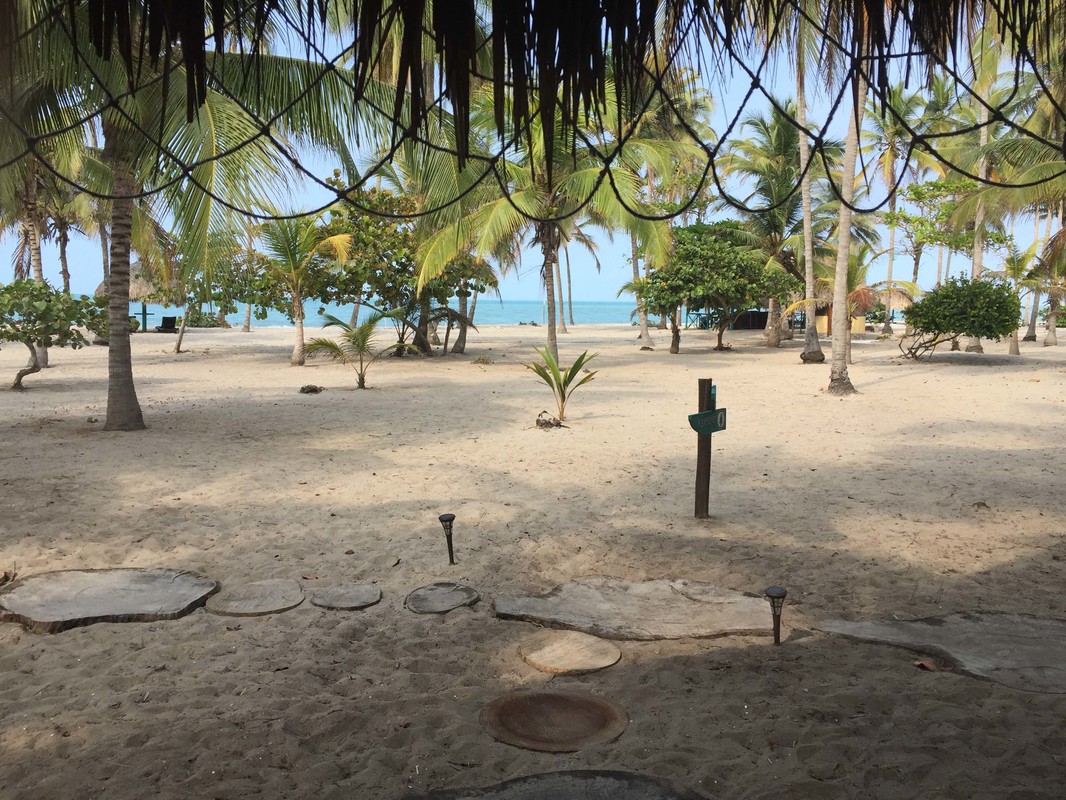
The morning coffee view from our patio. Our side of the property only has 2 cabanas and the other one is usually vacant, giving us complete privacy. Not sure how long this rare find will last...with tourism hitting its stride in Colombia, there is talk of foreign development along this almost deserted beach trimmed with just a few small quiet hostels and a couple of properties like ours.
This coastline isn't known for calm water, but Rick swears he can't feel a rip current. With a yellow flag along our stretch and red flags elsewhere, the deal is that he only swims if I'm there to watch... not sure what I'm offering since there isn't any rescue equipment and I'm nervous to go in :)
After arriving at the restaurant with our large camera and intently taking pics of the breakfast time bird feeding, it seems the table with the best vantage point has been permanently reserved for us. The general manager is interested in adding pics to his website so we've been on a bit of a photo shoot - our first commission has earned each of us a free glass of wine ... hmmm could we expense our whole stay :)
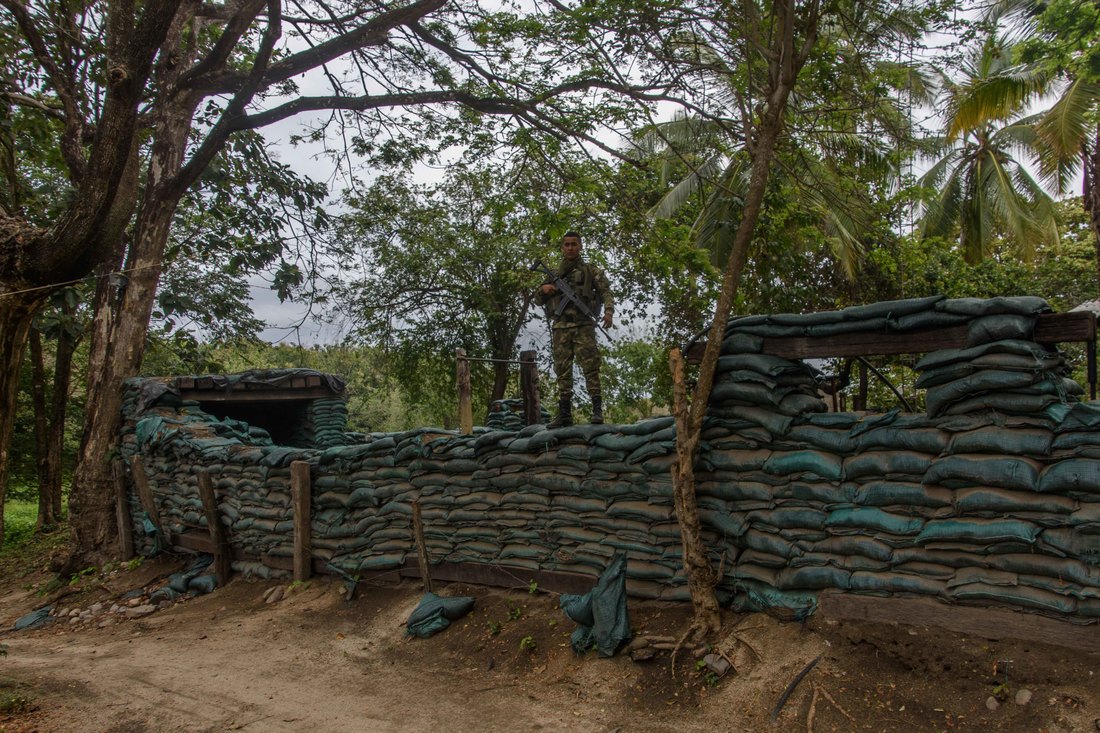
Along the 15 min path from beach to town sat this wraparound police compound. We asked the officer if we could take a picture thinking he would remain on his perch at the corner, but he strode over to this vantage point and ran through a series of poses for us. It's difficult to see, but he was in the process of giving a thumbs up, Colombia's ubiquitous "all's OK" symbol. (Palomino, Mar 23)
A Booking.com moment gone wrong… (First) What we reserved and paid for in full for 3 nights. (Second) What we got (someone’s dirty bedroom). (Third) A fruitless effort to file down a random key to make it fit the door lock. But we didn't have to worry about falling asleep and having our stuff stolen because the family dog barked all night despite my always calm husband yelling out the window at 3am "shut the f%#k up"... a new low LOL. We didn't stick around for the other 2 nights. (Riohacha, Mar 18)
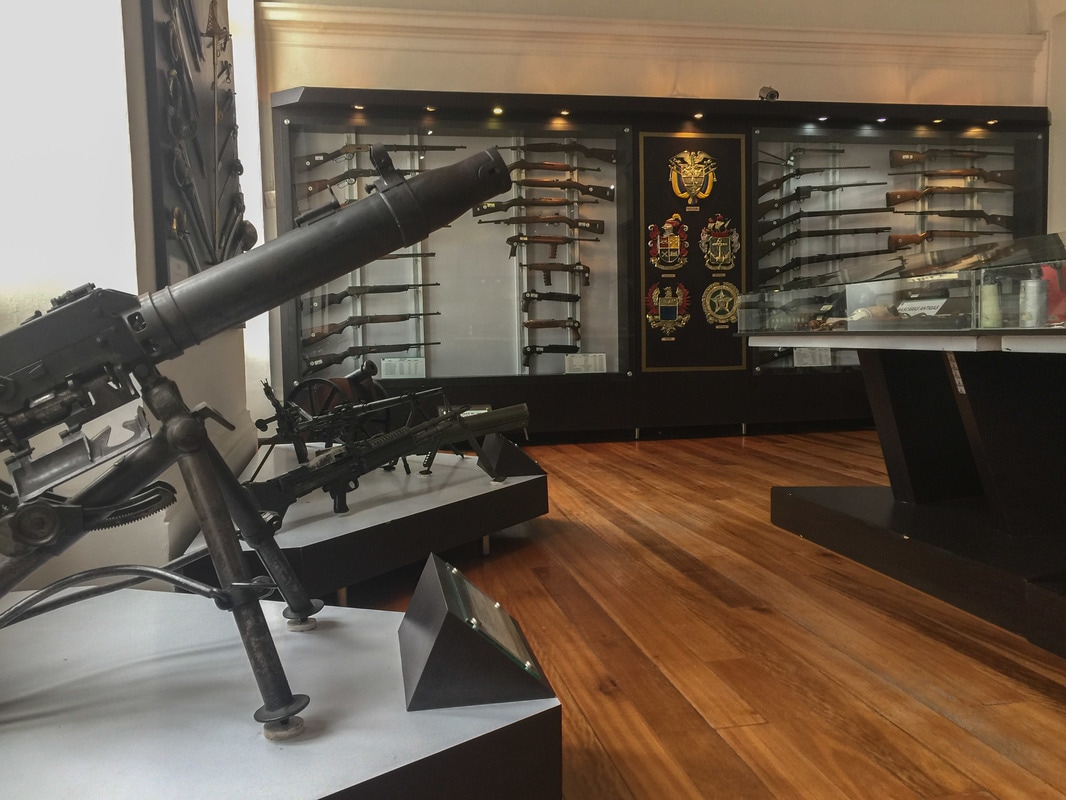
The original police station, now a museum, hosted tours lead by officers. The young man who showed us around explained that all 18yr old males are supposed to volunteer for 1 year of the military service of their choice – the army, navy or police force. Youths can refuse, but this decreases their chance of getting a good job in the future. Although the ruling only applies to males, we are constantly surprised by how many female officers we see. (Bogota, Mar 17)
Throughout the museum there were inspirational sayings penned by the current chief of police which echoed the pride that our guide took in his profession. It seemed that the 90’s was a turning point – kidnapping (especially foreigners) for ransom was rampant, so a task force was set up and today the risk is significantly lower. He said that the police are encouraged to be very approachable on the streets to reinforce a sense of public safety.
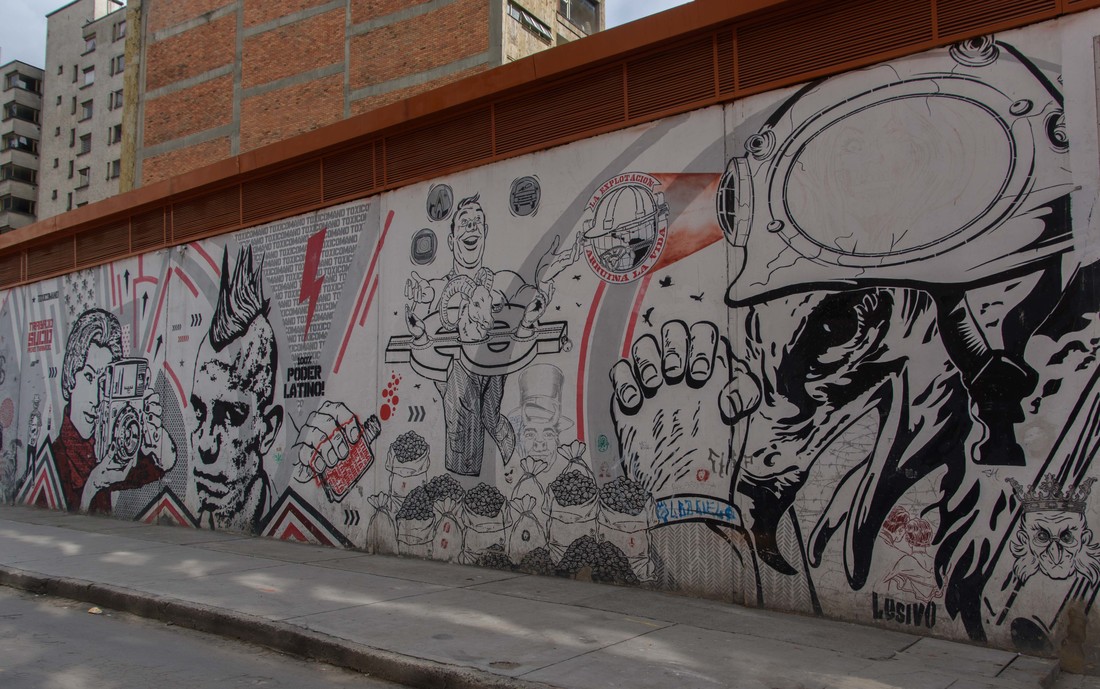
We've mentioned graffiti a couple of times already and we finally had an opportunity to learn more, during a walking tour. An anthropologist, with a connection to the street art community, lead us around the old city pointing out the significance of the murals (often political) and details about the artists, some who had professional day jobs and many who were art school graduates. (Bogota, Mar 17)
The importance of graffiti and the cultural attachment to it were interesting to us, although we didn’t entirely agree with the legitimization of the practice. At the start of the tour our guide pointed to a park bench that had been “tagged” (names, phrases or symbols – ex. “Sue loves Jeff”) and explained that while some consider that vandalism, others consider it an expression of art. When I asked if a mural was “tagged” would that be vandalism or art, he explained that the tagging was wrong and disrespectful of the artist. We found a dichotomy in the reasoning – the park bench was not the artist’s property but it was OK to “deface” it, yet an artist’s unsolicited mural on private property was not to be “defaced”.
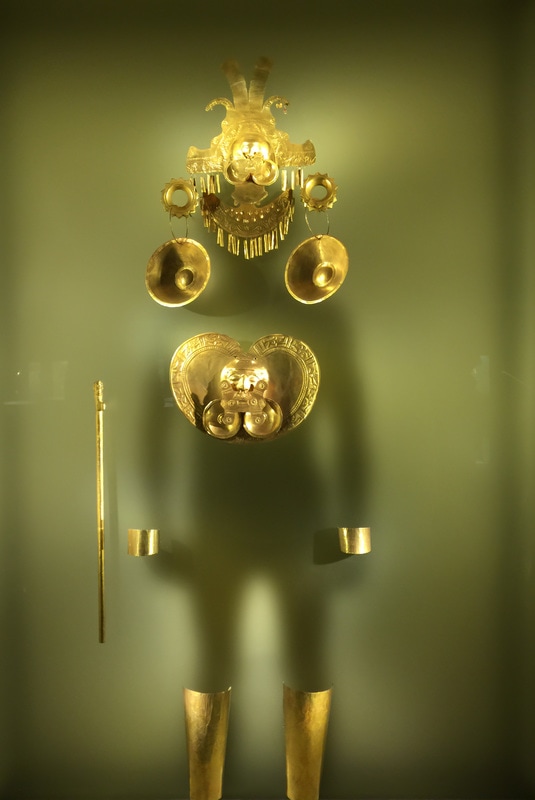
We've visited several museums featuring gold pieces in S. America, but all were eclipsed by this world class Gold Museum both for the intricacy of the pieces and the vastness of the collection. This grouping showed the full armour a chieftain would wear, cleverly presented with the shadow resembling the man. (Bogota, Mar 16)
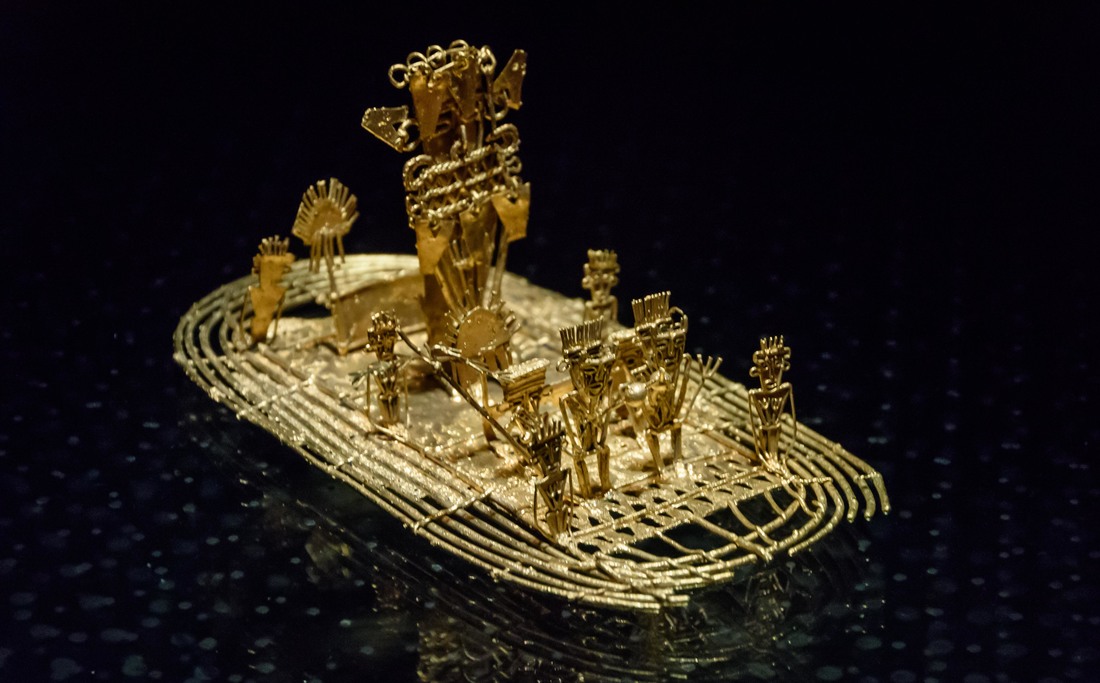
One particularly impressive and famous piece was the "golden raft". Made with the finest threads of gold it depicted a chieftain surrounded by lesser chiefs. The story went that he covered himself in gold dust and after rafting out into Lake Guatavita, dove into the water thereby offering the gold to the gods. This and other claims of gold offerings became part of the El Dorado legend which has inspired failed attempts to rediscover the treasure.
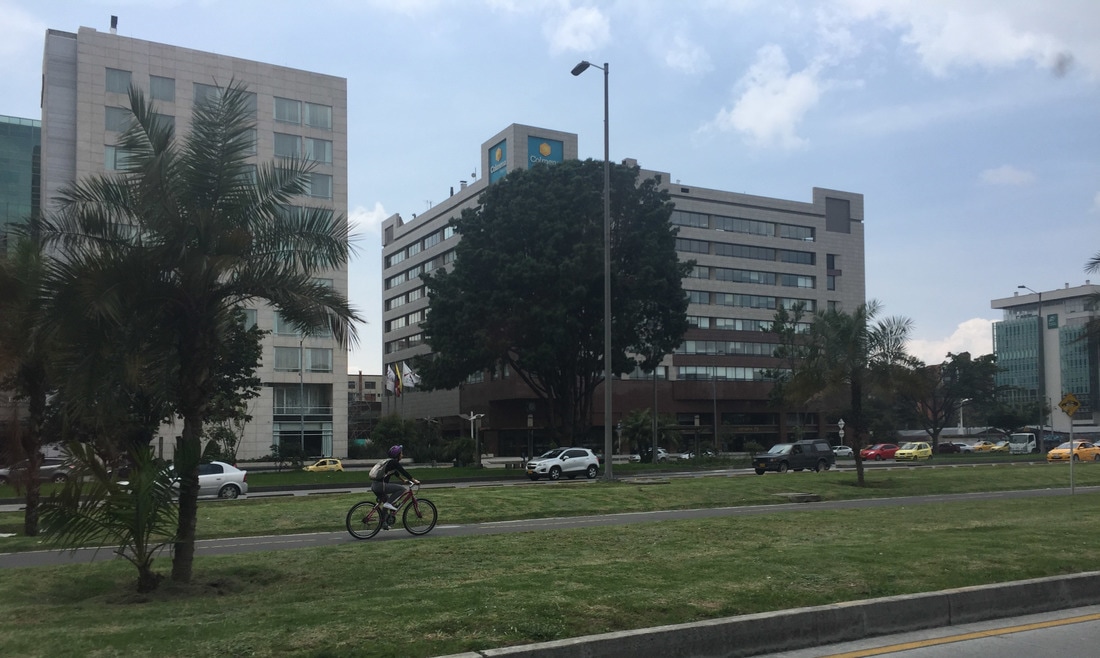
Almost 40 years ago my sister visited a friend in Bogota for a month. At that time, it was a frightening place… she recalled only seeing one streetlight and military everywhere including those standing on the airport runway 5 meters or so apart holding assault type guns. Today we found a modern city, full of traffic lights and mass transportation along with an extensive network of bike paths, augmented by many streets closed to vehicles on Sunday - 1.3 million cyclists take advantage of these dedicated zones on that day. A few years ago this was judged the most active city in the Americas. We checked out the hotel gym and everyone looked like they were about to enter a fitness contest. (Bogota, Mar 15)
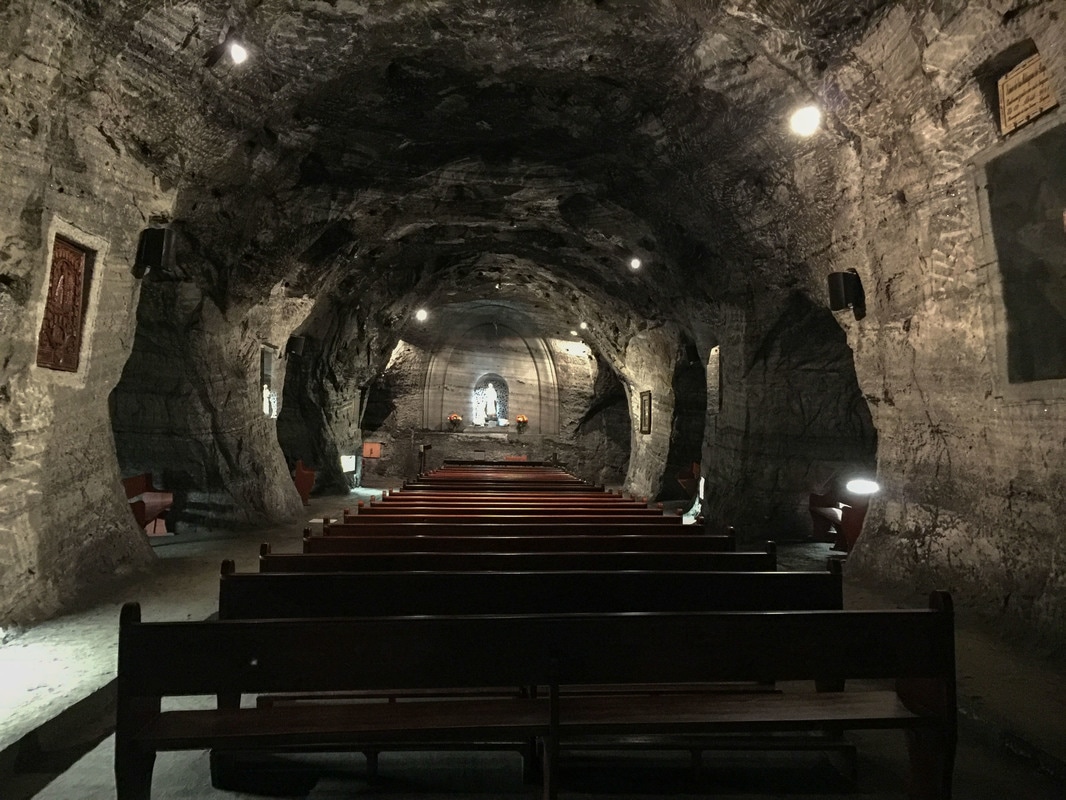
Tunnels leftover from work in this large salt mine have been converted into an underground Salt Cathedral complete with a chapel and religious augmentations added over the years. It was an ethereal feeling walking through the labyrinth of passageways, with nooks showcasing crosses lit up by changing colors, while choral music played in the background. The chapel (much larger than the above offshoot) holds Sunday services and weddings for those willing to pay the price. At one point we came to 3 large pillars that represented the 3 front doors that Cathedrals usually have. Our guide asked us to proceed through the one of our choice. Only after our descent did he explain that the left was used for the pure, the middle for those close to pure, and the right for the sinners. Of course we were the only ones in the group to choose the right - oops. (Zipaquira, Mar 15)
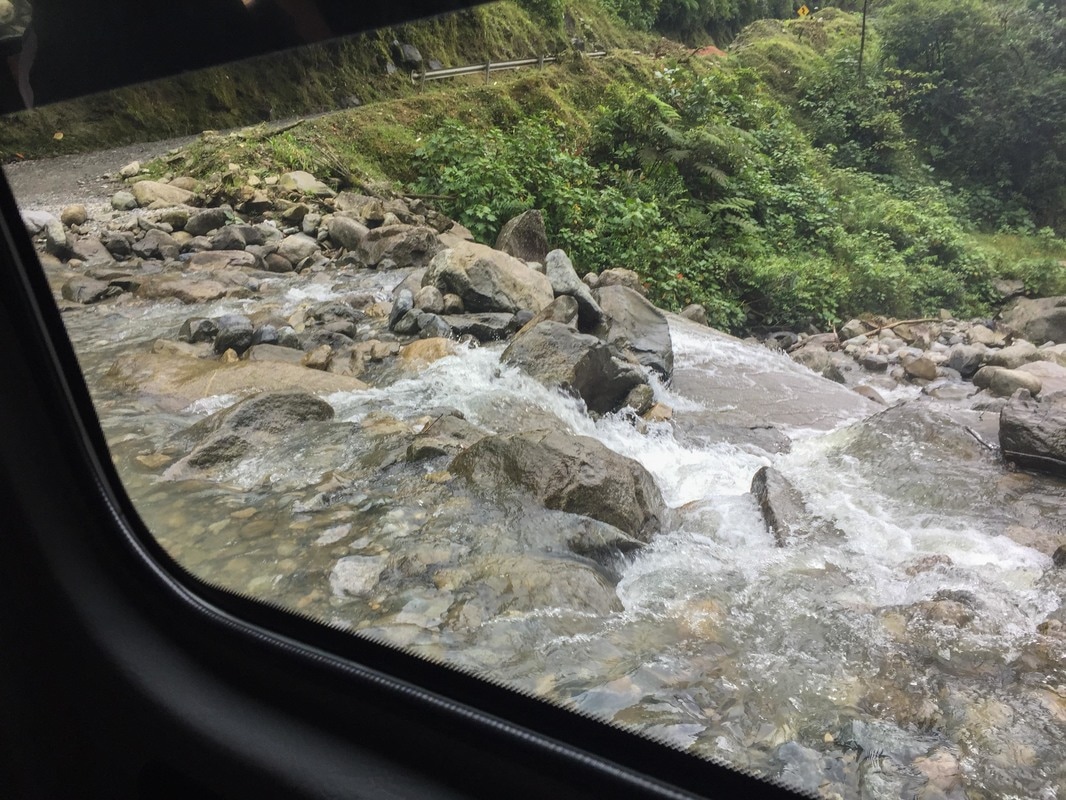
Scariest drive yet - we don't know how many more of these we can take...300km took 8.5hrs. On the pavement our driver careened around the nonstop S curves and a 50km single lane gravel road section took 3hrs to switchback past lengths of guardrail dangling down the mountainside replaced by bamboo posts and tape. We literally bounced around in and off our seats. Upon arrival at our hotel our host described the journey as an extreme sport. (San Agustin to Pasto, Mar 10)
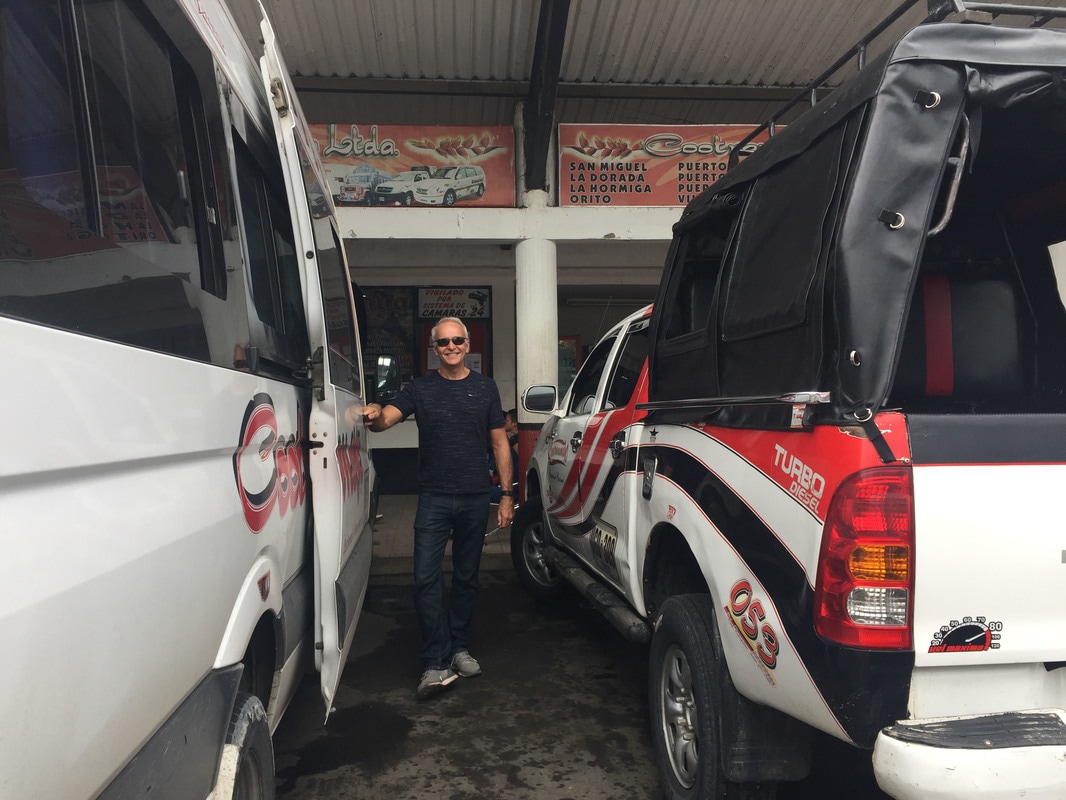
Taking a minibus from town to town poses challenges. As passengers get off at certain stops, the drivers and helpers hussle for new passengers and we depart only when the vehicle is full which can take up to an hour. Arriving at an empty bus means you get the smoother front seats but arriving late leaves only the extra bumpy back seats. And then there is the passenger shell game where you are initially sold one bus only to be moved to a lesser one once a period of time has elapsed.
500+ statues carved 2000yrs ago, were discovered in this area. Representing life events, deities and people of importance they were found near homes, ritual sites and in the tombs buried throughout the various communities. Colombia's seven wonders #3. (Parque de Arqueologico, Mar 8)
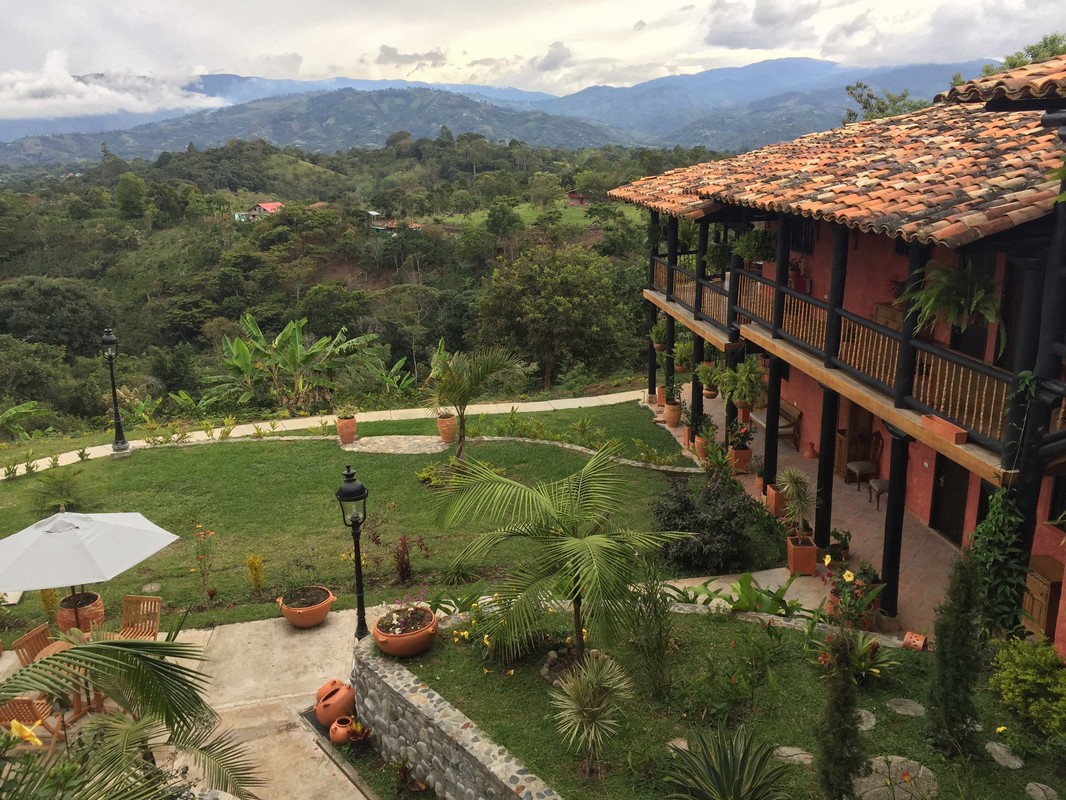
Complete with a hammock on the balcony and home grown coffee beans for our morning java, this place was a special find. The journey here took us hours along a somewhat deserted dirt road where our bus was stopped at a police checkpoint. Only the men had to step out of the vehicle - Rick wasn’t frisked, but some were. (San Agustin, Mar 7)
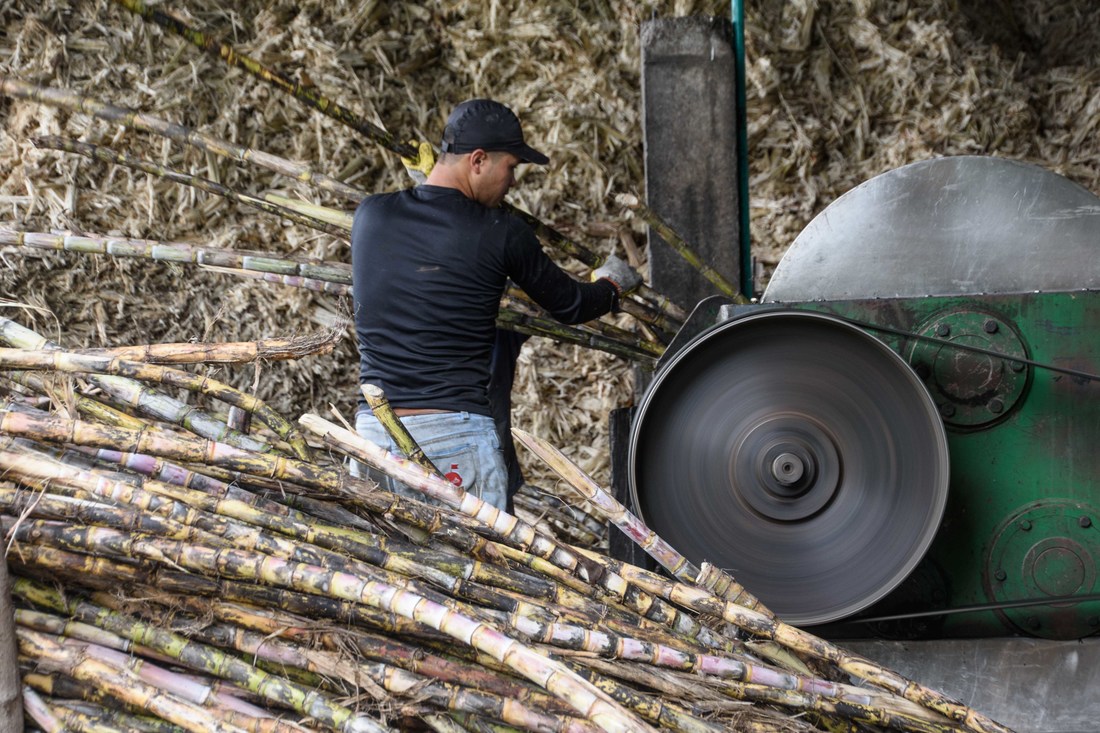
At a small sugar cane processing plant we watched the juice being squeezed out of the cane stalks leaving a husk which was used in a fire which generated the energy needed for the rest of the plant. The juice was boiled and purified in stages within a series of 5 vats before it was emptied into a tub and stirred to cool and thicken. Finally it was poured into molds, cooled into blocks and packaged for sale. (San Agustin, Mar 6)
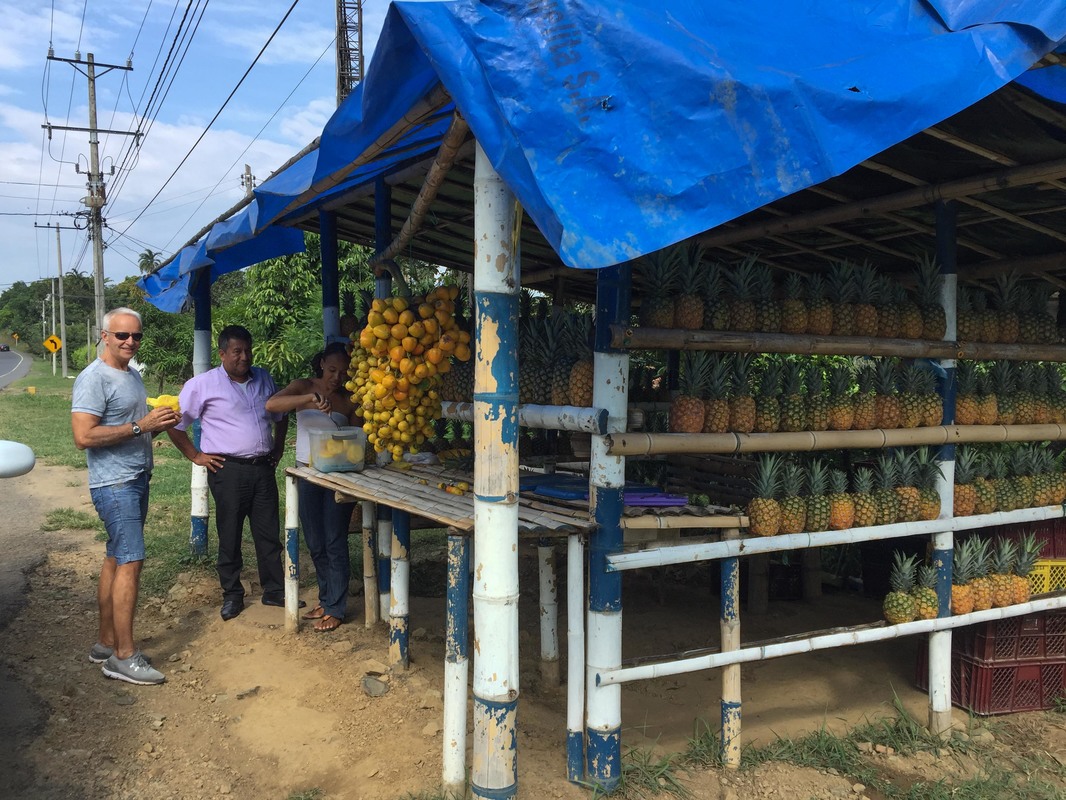
We took a taxi between towns past a patchwork of tropical crops hugging the sides of the hills. About every 50km there were bunker style sandbag enclosures along with 3 soldiers on each side of the highway with arms outstretched and thumbs up. All who drove by returned the thumbs up. We asked our driver (above) and others for an explanation and it seemed to indicate that all was ok. (Popayan to San Agustin, Mar 6)
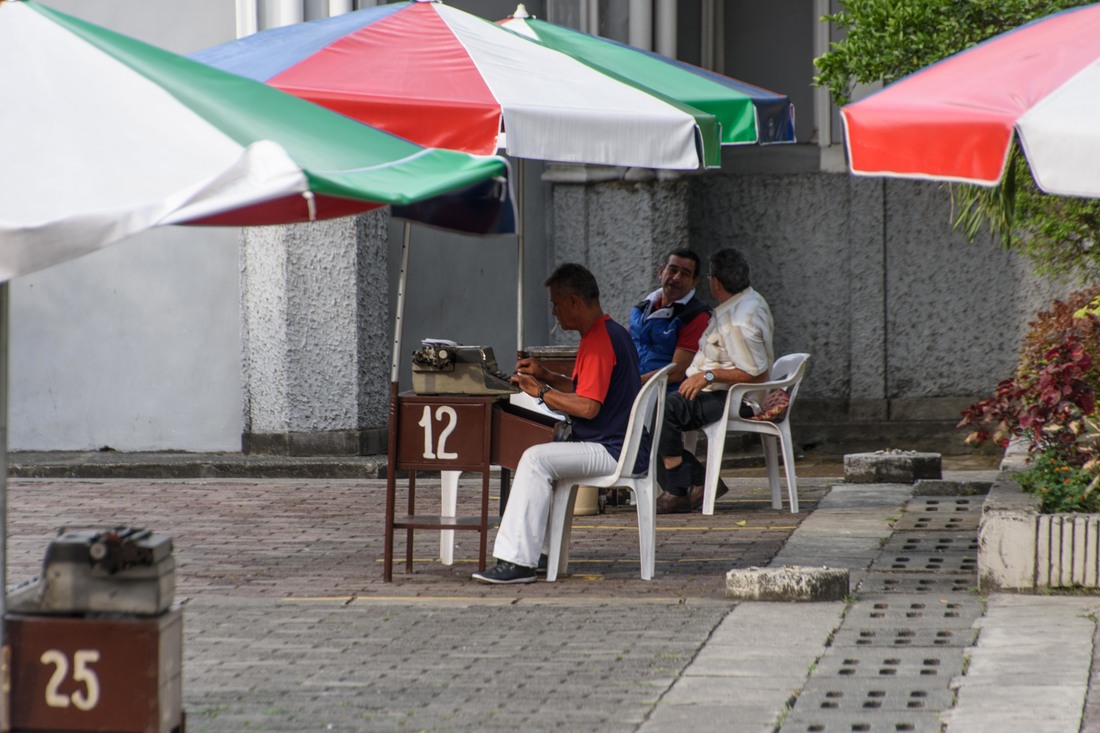
Dating back to pre-computers, these typists gather in the downtown square to fill out legal documents that would otherwise be completed by a notary, income tax consultant, etc. The customer then takes them to the appropriate official for signoff saving the cost of these pricier agencies filling out all the paperwork. (Cali, Mar 2)
